Product Management – Workshop 1 (What Must Products Have to Succeed?)

The Appleton Greene Corporate Training Program (CTP) for Product Management is provided by Professor Fradin Certified Learning Provider (CLP). Program Specifications: Monthly cost USD$2,500.00; Monthly Workshops 6 hours; Monthly Support 4 hours; Program Duration 12 months; Program orders subject to ongoing availability.
If you would like to view the Client Information Hub (CIH) for this program, please Click Here
Learning Provider Profile

Professor Fradin has experience in building successful products and services since 1969, at organizations including Hewlett-Packard as well as Apple, where he was at the same management level as Steve Jobs.
Professor Fradin also heads a professional development company (Spice Catalyst, Inc) specializing in building insanely great products, product management, and product marketing and has trained thousands of managers throughout the world based on his experience at Hewlett-Packard, Apple, and across 75 products and services and eleven startups.
His clients have included Cisco, GameStop, Botswana Telecommunications Company, IDA Singapore, Pitney Bowes, Capital One Bank, Infosys, Cognizant, and many others.
MOST Analysis
Mission Statement
The mission of this workshop is to set the stage for the following 47 workshops in terms of understanding the rate of product failures and its associated cost. Also to understand what is a product and who is the person, the product manager, that is responsible for the product.
Another part of the mission is to learn about the six keys to product success.
First is the product market strategy which contains such elements as what is it that the customer wants to do, how do they do it, when do they do it, why do they do it, where do they do it, and how satisfied are they with the way it is being done now and how important is getting that thing done.
Additional elements are:
• Design thinking the process and how to do it, innovation: what is it and where does it come from,
• The value proposition or the product/market fit or what is the product going to do for the customer,
• Customer research and
• How to conduct it via observation, interviews, surveys and if big data is available the analysis of it,
• Market research including sources both first hand and second hand,
• Product positioning that is a stake in the mind of the consumer about the product and its relationship to competing products,
• Distribution channels that is how will the product be distributed: direct, through distributors, retailers, manufacturing representatives,
• Features/advantages/benefits: what features does the product have, what are the advantages each feature has over the competitor’s product and what are the benefits of each feature to the customer,
• Pricing strategy like a cash cow, skimming, gross profit, training plan in terms of who needs to be trained on what topics and by when and where, and
• Product roadmap laying out the development of the product and/or product line into the future
Lastly, the mission is to understand that product success is not just about technology.
The overall mission is for the participants to be able to have a structure or framework around which they can plan and implement what is necessary for a successful product or service.
The other 47 workshops go into these topics in greater detail.
Objectives
1. Understand the size and causes of product failure
2. Learn what is a product and a service and their differences and similarities
3. Learn about the role of the product manager in the success of the product
4. Learn the six keys to product success
5. Understand what goes into a product market strategy
6. Understand the importance of repeatable product development processes
7. Understand the importance of having the right information at the right time for product success decision making
8. Understand how important it is to understand your customers and to learn what it is that they want to do
9. Learn the key competencies or skill sets that your employees need to have in order to help ensure product
10. Learn about the information technology, software products, and systems that can be used to. track product management processes and success
11. Understand that success is not just the technology
Strategies
1. Read the section related to product failure
2. Read the section related to what is a product?
3. Read the section related to. the role of the product manager and discuss with the class Including how the role In your organization is similar or different?
4. Read about the six keys to product success and be able to articulate them
5. Read about the key elements of a product market strategy
6. Read about the importance of a repeatable product development process in order to avoid product failure
7. Review what product information is currently available and identify the steps necessary to acquire the additional information that is needed
8. Read about the process to learn about what your customer wants to do.
9. Read about the list of competencies required for product success and identify which of those you currently have and those in which you need additional training
10. Identify current systems and tools being used in the management of your product or service and which ones you should consider adding
11. Read about why technology is not the only factor in product success
Tasks
1. Select a product that recently failed and identify the factors that contributed to its failure. Identify what things could have been done to have helped predict success.
2. Identify five products and five services add decide whether or not they are a product or a service.
3. Based upon the role of the product manager described in the workshop discuss what additional responsibilities and authorities should be added or removed to your current product manager job description
4. Each member of the class should pick one of the six keys to product success and describe them in detail
5. Each member of the class should pick one of the elements of a product market strategy and discuss in detail
6. Pick a recent product failure and discuss whether it was a repeatable process that was used in its product management lifecycle
7. For product information that is needed for good decision-making, identify a methodology to Obtain the information that is needed
8. Identify the four cumulative ways of obtaining customer information
9. For those competencies you feel you need to acquire describe how you are going to go about acquiring them
10. For the tools you currently use in product management, identify each of their strengths and weaknesses
11. List the reasons why technology is not the only factor in product success
Introduction
This foundational workshop gives you a birds-eye view of the entire Product Management lifecycle and the key elements that make a product successful.
It briefly covers why products fail, what is a product, what a product manager is, and the six keys to product success.
Executive Summary
About 40% of all new products fail each year representing a waste of over USD 0.64 Trillion. But they don’t have to. This workshop and the next will give you the tools, skills, and competencies for consistent product success.
This workshop will cover:
• Product Failure and Its Impact
• Introduction to The Six Keys to Product Success
• What Is a Product? What is a Product Manager? Six Keys to Product Success The First is the Strategy or Plan or Product Market Strategy
• The Keys to Product Success
• The History of the Management of Products and its Organization
• What Distinguishes Products and Services?
• Business Model and Canvas
• Product Management Lifecycle and Framework
• Product Management Competencies
• Successful Management of Products in Startups
• Competencies Required for Successful Management of Products
• Product Management Focused Organizational Structure

Chapter 1: Product Failure and Its Impact
The actual product failure rate is about 40%. New products can fail for a variety of reasons—poor product-market fit, unanswered customer needs, or staunch competition, to name a few. The reasons are:
No Product-Market Fit because the product does not fit the needs of the market and thus has little to no value.
The product is solving the wrong problem. Sometimes there are just not enough potential users for that product.
Letting the perfect miss, the market window because it is taking too long to develop and build the product.
Ignoring the voice of the customer results in failing to update the product to current customer needs.
Failing to establish beforehand customer listening posts to hear what the customers think on a regular basis.
Moving too slowly, so the market passes by.
Misunderstanding your customers in terms of what they want to do and perhaps where they go to buy a product does not match your product’s distribution.
Having the wrong price could be another reason, like being too expensive for the customer to justify or afford. Or too cheap, so the customer doesn’t believe the product will do what its value proposition says at such a low price. Or a competitive product offers a better return on investment.
Another mistake is going after a market that is too small, or your research into the target market is flawed.
Sometimes the wrong area of business is invested in. For example, resources are spent on product features instead of gaining distribution where the market is located.
Intensively competitive markets can also result in product failure. Lastly, poor execution can affect product success. For example, wasting advertising funds before the product is distributed and the sales force is trained.

Chapter 2: The Six Keys to Product Success
The six keys to product success is Strategy, Process, Information, Customers, Employees and Systems.
The Product Market Strategy consists of up to 32 key elements, from clearly understanding what your customer wants to do, to market and competitive research, to the product’s value proposition, product positioning, product roadmap, pricing and distribution strategy, and more.
Repeatable and mature product development and marketing process is the second key.
Having the right information available for decision making is important too.
Understanding clearly and deeply what the customer wants to do and where they research and buy a product or service for that problem.
Having within your product managers all of the 130 competencies required for product success.
Plus having the systems and tools for getting the job done is the last key.

Chapter 3: What Is a Product? Who Is a Product Manager? Six Keys to Product Success The First the Strategy or Plan or Product Market Strategy
A product is an article or substance that is created or refined with the intention of being used. Typically, it is marketed to be sold and/or delivered. A product usually is tangible. Even though one cannot touch software, it is considered to be a product too, because people interact with it through their computers or other devices.
A service is an intangible product.
Therefore, the services that are developed and/or delivered by commercial or non-profit organizations, including government, are products too, and the foundations discussed in this workshop also pertain to them.
Who is a product manager?
In many organizations, the person or persons responsible for the success of a product has the title Product Manager or Product Marketing Manager. However, they also some- times go by different other titles—perhaps as many as a few hundred more titles—but they pretty much do the same things (or a subset of the same things) and need to have the same competencies.

Chapter 4: The Keys to Product Success
The following are the six keys to product and organizational success—in short, SPICES:
1. Strategy
2. Process
3. Information
4. Customers
5. Employees
6. Systems

Chapter 5: The History of the Management of Products
The concept of a Product Manager (which we will cover in more detail later) started in 1932 at Procter and Gamble (P&G) and spread, based on my research, from P&G to Hewlett-Packard, to Apple (and others) and then to many companies in Silicon Valley and around the world. This includes such places as Australia, Sweden, and recently Germany, Portugal, and India.

Chapter 6: What Distinguishes Products and Services?
A product is a tangible entity that satisfies a want or need. It could be something that has been made to be sold. You can touch it. It is considered inventory and might have value if it can be sold. You can feel it. It is usually measured in units.
Merchandise, raw materials, finished goods, commodities, project deliverables, and insurance policies are all products. Recently, the concept of non-physical, intangible data products has emerged as virtual data goods, which are virtual products. You cannot touch them, but they are there. JPG, MP3, video files, and in the future, more and more 3D representations or Star Trek’s Hologram are other examples of products.
For-profit organizations, which are typically corporations, manufacture and/or develop products for sale.
A service is an intangible product.

Chapter 7: Business Model and Canvas
A business model is a description of means and methods a firm employs to earn the revenue projected in its plans. It views the business as a system and answers the question: “How are we going to make money to survive and grow?”
A business model contains four parts: value proposition, organizational structure, organizational relationships, and operations.
There are many different business models to make money.
A business model canvas provides a one page summary of the business model.

Chapter 8: Product Management Lifecycle and Framework
Frameworks have started being used only recently to the management of products, based on software architecture frameworks. Some companies have tried to adopt frameworks from manufacturing’s lean or just-in-time architecture. Others have based their framework on the Six Sigma framework for quality assurance. Additionally, others have recently adopted agile framework, replacing waterfall or Toll-gate/Stage-gate processes.
The advantage of having an agreed-upon framework is that everybody in the organization knows what needs to be done and when it needs to be done. The disadvantage of a framework is picking the wrong one. If it does not match into the vision, values and culture of the company, the framework will contribute to failure. For example, if the company’s value is to build quality products, but the process drives getting the product out quickly to get sales and compromises on quality, there may be a conflict caused because of the differences between the two priorities.

Chapter 9: Product Management Competencies
A competency is the ability to do something successfully and efficiently. In this session, we will discuss the various things an organization needs to do successfully and efficiently to enable the successful management of products. We will also discuss the skills or abilities required in a product management team to manage the products successfully.
The list of personal competencies required for the successful management of products is long, detailed and very complex. Few organizations, let alone professionals, have all the necessary competencies. Even fewer have the required depth of knowledge and experience necessary. That is why the management of products requires teamwork and effective give- and-take as areas are explored, debated and decisions made.
For product success, it is essential that your organization has competencies in all the areas discussed here in terms of the activities that need to be performed in each area.
These competencies fall into the categories of organizational, foundational and individual.

Chapter 10: Successful Management of Products in Startups and Competencies Required for Successful Management of Products
While we discuss the product management lifecycle and framework, a question comes to mind—Do these also apply to startups, which typically seem to function a little differently from bigger organizations?
It is typical for entrepreneurs and those involved in startups to think that what they have to do is different from what organizations would usually need to do to successfully manage their products. Some of this understanding developed from the agile hacking together of a product—which is why the term ‘development’ was changed to ‘hacking’.
Trying to come up with product ideas and what they help do is being called by some as ‘innovation’, as if this is something that organizations have started doing recently, and in the past, it was a mystery.
Chapter 11: Competencies Required for Successful Management of Products
A competency is the ability to do something successfully and efficiently. In this session, we will discuss the various things an organization needs to do successfully and efficiently to enable the successful management of products. We will also discuss the skills or abilities required in a product management team to manage the products successfully.
The list of personal competencies required for the successful management of products is long, detailed and very complex. Few organizations, let alone professionals, have all the necessary competencies. Even fewer have the required depth of knowledge and experience necessary. That is why the management of products requires teamwork and effective give-and-take as areas are explored, debated and decisions made.
In addition to personal competencies, there are also organizational ones necessary for product success.

Chapter 12: Product Management Focused Organizational Structure
The organizational structure can affect the success of a product severely. In this session, we will understand which organizational structures support, and which do not support customer-centric products.
In this workshop, you will learn about a military or railroad top-down structure, a matrix structure, management by badgering, and a new enlightened approach as evidenced by Hewlett-Packard which makes the employee and asset not a liability.
Curriculum
Product Management – Workshop 1 – What Must Products Have to Succeed?
- Product Failure and Its Impact
- The Six Keys to Product Success
- What Is a Product?
- The Keys to Product Success
- The History of the Management of Products.
- What Distinguishes Products and Services?
- Business Model and Canvas
- Product Management Lifecycle and Framework
- Product Management Competencies
- Successful Management of Products
- Competencies Required for Successful Management of Products
- Product Management Focused Organizational Structure
Distance Learning
Introduction
Thank you for enrolling in Appleton Greene’s Product Management. We are sure that you will find this journey exciting and rewarding to both you as an individual and for your company as a whole.
The Product Management training program is a forty-eight-step process that is presented through Appleton Greene’s distant learning method. This method requires the participants who are involved in the various workshops to take more responsibility for their learning than in the more traditional training methods. With the distant learning method, you will be doing a combination of group classroom learning, individual and group study, and preparation outside of the classroom.
This method may take some getting used to because a lot of the learning will happen outside of the classroom. This being the case, to be the most successful you will need to hold yourself accountable plus you will be part of teams that will hold each other accountable. This Distance Learning Guide explains how this method works and what is required on your part to be successful.
You have been assigned an Appleton Greens Product Management facilitator. This person is responsible for supporting you and helping you achieve maximum benefits from the Product Management. Please see the following Tutorial Support section for further explanation.
As Individuals
In order to effectively implement the Product Management workshops, it is important that everyone involved in a workshop learn all they can prior to and during a workshop. This involves reviewing and understanding the materials presented during a workshop as well as preparing for the workshop by studying the material required prior to each workshop. All the materials available prior to, during and after each workshop are designed to reinforce what you learned during a workshop to help ensure that you are prepared for the next step in the process.
The Introduction material is designed to help each participant better prepare for the workshop so they learn more and are better able to contribute to the discussions during each workshop. Participation from everyone attending a given workshop is essential if you are to reap the most from the Product Management workshops. Some workshops will have exercises that the participants will be asked to complete prior to the workshop. If the material is not clear to you or if you need help to better understand the pre-workshop exercises you are asked to contact your Appleton Green Product Management facilitator for clarification and guidance. Please refer to the Tutorial Support section for guidelines concerning the process to be used when contacting your Appleton Greene Product Management facilitator.
As Team Members
In order to effectively implement the Product Management, it is also important that as a group everyone involved in a workshop learn all they can from the workshop and as a group be ready for your next workshop. This involves team learning and team accountability. Learning is individual but applying this learning is only beneficial if it helps the team.
Your individual learning is dependent on how you personally study and learn. Some of what you learn is applicable to you individually. Most of what you learn, however, is aimed at learning how to apply your individual knowledge to a team setting. The focus here is on making sure that everyone in a workshop understands the subject matter. If you are unclear or confused, you need to speak up and ask questions within the workshop setting. Your Appleton Greene Product Management facilitator is available to help you, or your team members clarify what is expected of you. This will need to be scheduled in advance and at a time that works for everyone involved, making it more productive for everyone and giving your facilitator proper time to prepare. Please see the Tutorial Support section for suggested timing requirements.
Self-Discipline
One of the challenges of receiving training through the distance learning method is that you are more on your own than if you are strictly working with a facilitator in a classroom setting. It is up to you to evaluate your progress. It is up to you to be truthful with yourself concerning your level of understanding of what you have been taught. If you are uncertain you need to reach out to your Appleton Green Product Management facilitator or talk with others who are in the same workshop as you. You will not be given any tests in order to move on to the next workshop. It is up to you to determine your level of understanding and to be sure to ask questions about what you do not understand. This can be a trying situation for some people who are used to being given clear direction concerning their job tasks. This can also be intimidating to those who do not have as much self-confidence as others. One of the main purposes of the Product Management workshops is to create synergy through effective teamwork throughout a company. Remember, everyone is in the same boat. You are all learning together. There is no reason for any of you to feel intimidated or that you lack what others may have. Everyone is different in varying respects and possesses different skill sets. These differences are in large part what makes teams so effective.
It is important that you discipline yourself to stay on track with what you are learning. If you do not stay current, you will not only hurt yourself because you are not gaining the type of understanding you need but you are also hurting the other members of your team.
Summary
The distance learning method allows you some freedom to study when you want and the ability to work around a more flexible schedule. However, it does require more self-discipline to ensure you stay on course. It also requires a more truthful self-assessment than if you are in a more structured learning environment. Not only does it require a more truthful self-assessment, it requires a more open atmosphere among the team you are part of. As team members, you will need to rely on each other to ensure that not only as individuals you are gaining the understanding you need but as teams you are gaining the combined knowledge necessary to make the Product Management workshops as successful as it can be.
Tutorial Support
Programs
Appleton Greene uses standard and bespoke corporate training programs as vessels to transfer business process improvement knowledge into the heart of our clients’ organizations. Each individual program focuses upon the implementation of a specific business process, which enables clients to easily quantify their return on investment. There are hundreds of established Appleton Greene corporate training products now available to clients within customer services, e-business, finance, globalization, human resources, information technology, legal, management, marketing and production. It does not matter whether a client’s employees are located within one office, or an unlimited number of international offices, we can still bring them together to learn and implement specific business processes collectively. Our approach to global localization enables us to provide clients with a truly international service with that all important personal touch. Appleton Greene corporate training programs can be provided virtually or locally and they are all unique in that they individually focus upon a specific business function. They are implemented over a sustainable period of time and professional support is consistently provided by qualified learning providers and specialist consultants.
Support available
You will have a designated Certified Learning Provider (CLP) and an Accredited Consultant and we encourage you to communicate with them as much as possible. In all cases tutorial support is provided online because we can then keep a record of all communications to ensure that tutorial support remains consistent. You would also be forwarding your work to the tutorial support unit for evaluation and assessment. You will receive individual feedback on all of the work that you undertake on a one-to-one basis, together with specific recommendations for anything that may need to be changed in order to achieve a pass with merit or a pass with distinction and you then have as many opportunities as you may need to re-submit project studies until they meet with the required standard. Consequently the only reason that you should really fail (CLP) is if you do not do the work. It makes no difference to us whether a student takes 12 months or 18 months to complete the program, what matters is that in all cases the same quality standard will have been achieved.
Support Process
Please forward all of your future emails to the designated (CLP) Tutorial Support Unit email address that has been provided and please do not duplicate or copy your emails to other AGC email accounts as this will just cause unnecessary administration. Please note that emails are always answered as quickly as possible but you will need to allow a period of up to 20 business days for responses to general tutorial support emails during busy periods, because emails are answered strictly within the order in which they are received. You will also need to allow a period of up to 30 business days for the evaluation and assessment of project studies. This does not include weekends or public holidays. Please therefore kindly allow for this within your time planning. All communications are managed online via email because it enables tutorial service support managers to review other communications which have been received before responding and it ensures that there is a copy of all communications retained on file for future reference. All communications will be stored within your personal (CLP) study file here at Appleton Greene throughout your designated study period. If you need any assistance or clarification at any time, please do not hesitate to contact us by forwarding an email and remember that we are here to help. If you have any questions, please list and number your questions succinctly and you can then be sure of receiving specific answers to each and every query.
Time Management
It takes approximately 1 Year to complete the Product Management corporate training program, incorporating 12 x 6-hour monthly workshops. Each student will also need to contribute approximately 4 hours per week over 1 Year of their personal time. Students can study from home or work at their own pace and are responsible for managing their own study plan. There are no formal examinations and students are evaluated and assessed based upon their project study submissions, together with the quality of their internal analysis and supporting documents. They can contribute more time towards study when they have the time to do so and can contribute less time when they are busy. All students tend to be in full time employment while studying and the Product Management program is purposely designed to accommodate this, so there is plenty of flexibility in terms of time management. It makes no difference to us at Appleton Greene, whether individuals take 12-18 months to complete this program. What matters is that in all cases the same standard of quality will have been achieved with the standard and bespoke programs that have been developed.
Distance Learning Guide
The distance learning guide should be your first port of call when starting your training program. It will help you when you are planning how and when to study, how to create the right environment and how to establish the right frame of mind. If you can lay the foundations properly during the planning stage, then it will contribute to your enjoyment and productivity while training later. The guide helps to change your lifestyle in order to accommodate time for study and to cultivate good study habits. It helps you to chart your progress so that you can measure your performance and achieve your goals. It explains the tools that you will need for study and how to make them work. It also explains how to translate academic theory into practical reality. Spend some time now working through your distance learning guide and make sure that you have firm foundations in place so that you can make the most of your distance learning program. There is no requirement for you to attend training workshops or classes at Appleton Greene offices. The entire program is undertaken online, program course manuals and project studies are administered via the Appleton Greene web site and via email, so you are able to study at your own pace and in the comfort of your own home or office as long as you have a computer and access to the internet.
How To Study
The how to study guide provides students with a clear understanding of the Appleton Greene facilitation via distance learning training methods and enables students to obtain a clear overview of the training program content. It enables students to understand the step-by-step training methods used by Appleton Greene and how course manuals are integrated with project studies. It explains the research and development that is required and the need to provide evidence and references to support your statements. It also enables students to understand precisely what will be required of them in order to achieve a pass with merit and a pass with distinction for individual project studies and provides useful guidance on how to be innovative and creative when developing your Unique Program Proposition (UPP).
Tutorial Support
Tutorial support for the Appleton Greene Product Management corporate training program is provided online either through the Appleton Greene Client Support Portal (CSP), or via email. All tutorial support requests are facilitated by a designated Program Administration Manager (PAM). They are responsible for deciding which professor or tutor is the most appropriate option relating to the support required and then the tutorial support request is forwarded onto them. Once the professor or tutor has completed the tutorial support request and answered any questions that have been asked, this communication is then returned to the student via email by the designated Program Administration Manager (PAM). This enables all tutorial support, between students, professors and tutors, to be facilitated by the designated Program Administration Manager (PAM) efficiently and securely through the email account. You will therefore need to allow a period of up to 20 business days for responses to general support queries and up to 30 business days for the evaluation and assessment of project studies, because all tutorial support requests are answered strictly within the order in which they are received. This does not include weekends or public holidays. Consequently you need to put some thought into the management of your tutorial support procedure in order to ensure that your study plan is feasible and to obtain the maximum possible benefit from tutorial support during your period of study. Please retain copies of your tutorial support emails for future reference. Please ensure that ALL of your tutorial support emails are set out using the format as suggested within your guide to tutorial support. Your tutorial support emails need to be referenced clearly to the specific part of the course manual or project study which you are working on at any given time. You also need to list and number any questions that you would like to ask, up to a maximum of five questions within each tutorial support email. Remember the more specific you can be with your questions the more specific your answers will be too and this will help you to avoid any unnecessary misunderstanding, misinterpretation, or duplication. The guide to tutorial support is intended to help you to understand how and when to use support in order to ensure that you get the most out of your training program. Appleton Greene training programs are designed to enable you to do things for yourself. They provide you with a structure or a framework and we use tutorial support to facilitate students while they practically implement what they learn. In other words, we are enabling students to do things for themselves. The benefits of distance learning via facilitation are considerable and are much more sustainable in the long-term than traditional short-term knowledge sharing programs. Consequently you should learn how and when to use tutorial support so that you can maximize the benefits from your learning experience with Appleton Greene. This guide describes the purpose of each training function and how to use them and how to use tutorial support in relation to each aspect of the training program. It also provides useful tips and guidance with regard to best practice.
Tutorial Support Tips
Students are often unsure about how and when to use tutorial support with Appleton Greene. This Tip List will help you to understand more about how to achieve the most from using tutorial support. Refer to it regularly to ensure that you are continuing to use the service properly. Tutorial support is critical to the success of your training experience, but it is important to understand when and how to use it in order to maximize the benefit that you receive. It is no coincidence that those students who succeed are those that learn how to be positive, proactive and productive when using tutorial support.
Be positive and friendly with your tutorial support emails
Remember that if you forward an email to the tutorial support unit, you are dealing with real people. “Do unto others as you would expect others to do unto you”. If you are positive, complimentary and generally friendly in your emails, you will generate a similar response in return. This will be more enjoyable, productive and rewarding for you in the long-term.
Think about the impression that you want to create
Every time that you communicate, you create an impression, which can be either positive or negative, so put some thought into the impression that you want to create. Remember that copies of all tutorial support emails are stored electronically and tutors will always refer to prior correspondence before responding to any current emails. Over a period of time, a general opinion will be arrived at in relation to your character, attitude and ability. Try to manage your own frustrations, mood swings and temperament professionally, without involving the tutorial support team. Demonstrating frustration or a lack of patience is a weakness and will be interpreted as such. The good thing about communicating in writing, is that you will have the time to consider your content carefully, you can review it and proof-read it before sending your email to Appleton Greene and this should help you to communicate more professionally, consistently and to avoid any unnecessary knee-jerk reactions to individual situations as and when they may arise. Please also remember that the CLP Tutorial Support Unit will not just be responsible for evaluating and assessing the quality of your work, they will also be responsible for providing recommendations to other learning providers and to client contacts within the Appleton Greene global client network, so do be in control of your own emotions and try to create a good impression.
Remember that quality is preferred to quantity
Please remember that when you send an email to the tutorial support team, you are not using Twitter or Text Messaging. Try not to forward an email every time that you have a thought. This will not prove to be productive either for you or for the tutorial support team. Take time to prepare your communications properly, as if you were writing a professional letter to a business colleague and make a list of queries that you are likely to have and then incorporate them within one email, say once every month, so that the tutorial support team can understand more about context, application and your methodology for study. Get yourself into a consistent routine with your tutorial support requests and use the tutorial support template provided with ALL of your emails. The (CLP) Tutorial Support Unit will not spoon-feed you with information. They need to be able to evaluate and assess your tutorial support requests carefully and professionally.
Be specific about your questions in order to receive specific answers
Try not to write essays by thinking as you are writing tutorial support emails. The tutorial support unit can be unclear about what in fact you are asking, or what you are looking to achieve. Be specific about asking questions that you want answers to. Number your questions. You will then receive specific answers to each and every question. This is the main purpose of tutorial support via email.
Keep a record of your tutorial support emails
It is important that you keep a record of all tutorial support emails that are forwarded to you. You can then refer to them when necessary and it avoids any unnecessary duplication, misunderstanding, or misinterpretation.
Individual training workshops or telephone support
Please be advised that Appleton Greene does not provide separate or individual tutorial support meetings, workshops, or provide telephone support for individual students. Appleton Greene is an equal opportunities learning and service provider and we are therefore understandably bound to treat all students equally. We cannot therefore broker special financial or study arrangements with individual students regardless of the circumstances. All tutorial support is provided online and this enables Appleton Greene to keep a record of all communications between students, professors and tutors on file for future reference, in accordance with our quality management procedure and your terms and conditions of enrolment. All tutorial support is provided online via email because it enables us to have time to consider support content carefully, it ensures that you receive a considered and detailed response to your queries. You can number questions that you would like to ask, which relate to things that you do not understand or where clarification may be required. You can then be sure of receiving specific answers to each individual query. You will also then have a record of these communications and of all tutorial support, which has been provided to you. This makes tutorial support administration more productive by avoiding any unnecessary duplication, misunderstanding, or misinterpretation.
Tutorial Support Email Format
You should use this tutorial support format if you need to request clarification or assistance while studying with your training program. Please note that ALL of your tutorial support request emails should use the same format. You should therefore set up a standard email template, which you can then use as and when you need to. Emails that are forwarded to Appleton Greene, which do not use the following format, may be rejected and returned to you by the (CLP) Program Administration Manager. A detailed response will then be forwarded to you via email usually within 20 business days of receipt for general support queries and 30 business days for the evaluation and assessment of project studies. This does not include weekends or public holidays. Your tutorial support request, together with the corresponding TSU reply, will then be saved and stored within your electronic TSU file at Appleton Greene for future reference.
Subject line of your email
Please insert: Appleton Greene (CLP) Tutorial Support Request: (Your Full Name) (Date), within the subject line of your email.
Main body of your email
Please insert:
1. Appleton Greene Certified Learning Provider (CLP) Tutorial Support Request
2. Your Full Name
3. Date of TS request
4. Preferred email address
5. Backup email address
6. Course manual page name or number (reference)
7. Project study page name or number (reference)
Subject of enquiry
Please insert a maximum of 50 words (please be succinct)
Briefly outline the subject matter of your inquiry, or what your questions relate to.
Question 1
Maximum of 50 words (please be succinct)
Maximum of 50 words (please be succinct)
Question 3
Maximum of 50 words (please be succinct)
Question 4
Maximum of 50 words (please be succinct)
Question 5
Maximum of 50 words (please be succinct)
Please note that a maximum of 5 questions is permitted with each individual tutorial support request email.
Procedure
* List the questions that you want to ask first, then re-arrange them in order of priority. Make sure that you reference them, where necessary, to the course manuals or project studies.
* Make sure that you are specific about your questions and number them. Try to plan the content within your emails to make sure that it is relevant.
* Make sure that your tutorial support emails are set out correctly, using the Tutorial Support Email Format provided here.
* Save a copy of your email and incorporate the date sent after the subject title. Keep your tutorial support emails within the same file and in date order for easy reference.
* Allow up to 20 business days for a response to general tutorial support emails and up to 30 business days for the evaluation and assessment of project studies, because detailed individual responses will be made in all cases and tutorial support emails are answered strictly within the order in which they are received.
* Emails can and do get lost. So if you have not received a reply within the appropriate time, forward another copy or a reminder to the tutorial support unit to be sure that it has been received but do not forward reminders unless the appropriate time has elapsed.
* When you receive a reply, save it immediately featuring the date of receipt after the subject heading for easy reference. In most cases the tutorial support unit replies to your questions individually, so you will have a record of the questions that you asked as well as the answers offered. With project studies however, separate emails are usually forwarded by the tutorial support unit, so do keep a record of your own original emails as well.
* Remember to be positive and friendly in your emails. You are dealing with real people who will respond to the same things that you respond to.
* Try not to repeat questions that have already been asked in previous emails. If this happens the tutorial support unit will probably just refer you to the appropriate answers that have already been provided within previous emails.
* If you lose your tutorial support email records you can write to Appleton Greene to receive a copy of your tutorial support file, but a separate administration charge may be levied for this service.

How To Study
Your Certified Learning Provider (CLP) and Accredited Consultant can help you to plan a task list for getting started so that you can be clear about your direction and your priorities in relation to your training program. It is also a good way to introduce yourself to the tutorial support team.
Planning your study environment
Your study conditions are of great importance and will have a direct effect on how much you enjoy your training program. Consider how much space you will have, whether it is comfortable and private and whether you are likely to be disturbed. The study tools and facilities at your disposal are also important to the success of your distance-learning experience. Your tutorial support unit can help with useful tips and guidance, regardless of your starting position. It is important to get this right before you start working on your training program.
Planning your program objectives
It is important that you have a clear list of study objectives, in order of priority, before you start working on your training program. Your tutorial support unit can offer assistance here to ensure that your study objectives have been afforded due consideration and priority.
Planning how and when to study
Distance-learners are freed from the necessity of attending regular classes, since they can study in their own way, at their own pace and for their own purposes. This approach is designed to let you study efficiently away from the traditional classroom environment. It is important however, that you plan how and when to study, so that you are making the most of your natural attributes, strengths and opportunities. Your tutorial support unit can offer assistance and useful tips to ensure that you are playing to your strengths.
Planning your study tasks
You should have a clear understanding of the study tasks that you should be undertaking and the priority associated with each task. These tasks should also be integrated with your program objectives. The distance learning guide and the guide to tutorial support for students should help you here, but if you need any clarification or assistance, please contact your tutorial support unit.
Planning your time
You will need to allocate specific times during your calendar when you intend to study if you are to have a realistic chance of completing your program on time. You are responsible for planning and managing your own study time, so it is important that you are successful with this. Your tutorial support unit can help you with this if your time plan is not working.
Keeping in touch
Consistency is the key here. If you communicate too frequently in short bursts, or too infrequently with no pattern, then your management ability with your studies will be questioned, both by you and by your tutorial support unit. It is obvious when a student is in control and when one is not and this will depend how able you are at sticking with your study plan. Inconsistency invariably leads to in-completion.
Charting your progress
Your tutorial support team can help you to chart your own study progress. Refer to your distance learning guide for further details.
Making it work
To succeed, all that you will need to do is apply yourself to undertaking your training program and interpreting it correctly. Success or failure lies in your hands and your hands alone, so be sure that you have a strategy for making it work. Your Certified Learning Provider (CLP) and Accredited Consultant can guide you through the process of program planning, development and implementation.
Reading methods
Interpretation is often unique to the individual but it can be improved and even quantified by implementing consistent interpretation methods. Interpretation can be affected by outside interference such as family members, TV, or the Internet, or simply by other thoughts which are demanding priority in our minds. One thing that can improve our productivity is using recognized reading methods. This helps us to focus and to be more structured when reading information for reasons of importance, rather than relaxation.
Speed reading
When reading through course manuals for the first time, subconsciously set your reading speed to be just fast enough that you cannot dwell on individual words or tables. With practice, you should be able to read an A4 sheet of paper in one minute. You will not achieve much in the way of a detailed understanding, but your brain will retain a useful overview. This overview will be important later on and will enable you to keep individual issues in perspective with a more generic picture because speed reading appeals to the memory part of the brain. Do not worry about what you do or do not remember at this stage.
Content reading
Once you have speed read everything, you can then start work in earnest. You now need to read a particular section of your course manual thoroughly, by making detailed notes while you read. This process is called Content Reading and it will help to consolidate your understanding and interpretation of the information that has been provided.
Making structured notes on the course manuals
When you are content reading, you should be making detailed notes, which are both structured and informative. Make these notes in a MS Word document on your computer, because you can then amend and update these as and when you deem it to be necessary. List your notes under three headings: 1. Interpretation – 2. Questions – 3. Tasks. The purpose of the 1st section is to clarify your interpretation by writing it down. The purpose of the 2nd section is to list any questions that the issue raises for you. The purpose of the 3rd section is to list any tasks that you should undertake as a result. Anyone who has graduated with a business-related degree should already be familiar with this process.
Organizing structured notes separately
You should then transfer your notes to a separate study notebook, preferably one that enables easy referencing, such as a MS Word Document, a MS Excel Spreadsheet, a MS Access Database, or a personal organizer on your cell phone. Transferring your notes allows you to have the opportunity of cross-checking and verifying them, which assists considerably with understanding and interpretation. You will also find that the better you are at doing this, the more chance you will have of ensuring that you achieve your study objectives.
Question your understanding
Do challenge your understanding. Explain things to yourself in your own words by writing things down.
Clarifying your understanding
If you are at all unsure, forward an email to your tutorial support unit and they will help to clarify your understanding.
Question your interpretation
Do challenge your interpretation. Qualify your interpretation by writing it down.
Clarifying your interpretation
If you are at all unsure, forward an email to your tutorial support unit and they will help to clarify your interpretation.
Qualification Requirements
The student will need to successfully complete the project study and all of the exercises relating to the Product Management corporate training program, achieving a pass with merit or distinction in each case, in order to qualify as an Accredited Product Management Specialist (APTS). All monthly workshops need to be tried and tested within your company. These project studies can be completed in your own time and at your own pace and in the comfort of your own home or office. There are no formal examinations, assessment is based upon the successful completion of the project studies. They are called project studies because, unlike case studies, these projects are not theoretical, they incorporate real program processes that need to be properly researched and developed. The project studies assist us in measuring your understanding and interpretation of the training program and enable us to assess qualification merits. All of the project studies are based entirely upon the content within the training program and they enable you to integrate what you have learnt into your corporate training practice.
Product Management – Grading Contribution
Project Study – Grading Contribution
Customer Service – 10%
E-business – 05%
Finance – 10%
Globalization – 10%
Human Resources – 10%
Information Technology – 10%
Legal – 05%
Management – 10%
Marketing – 10%
Production – 10%
Education – 05%
Logistics – 05%
TOTAL GRADING – 100%
Qualification grades
A mark of 90% = Pass with Distinction.
A mark of 75% = Pass with Merit.
A mark of less than 75% = Fail.
If you fail to achieve a mark of 75% with a project study, you will receive detailed feedback from the Certified Learning Provider (CLP) and/or Accredited Consultant, together with a list of tasks which you will need to complete, in order to ensure that your project study meets with the minimum quality standard that is required by Appleton Greene. You can then re-submit your project study for further evaluation and assessment. Indeed you can re-submit as many drafts of your project studies as you need to, until such a time as they eventually meet with the required standard by Appleton Greene, so you need not worry about this, it is all part of the learning process.
When marking project studies, Appleton Greene is looking for sufficient evidence of the following:
Pass with merit
A satisfactory level of program understanding
A satisfactory level of program interpretation
A satisfactory level of project study content presentation
A satisfactory level of Unique Program Proposition (UPP) quality
A satisfactory level of the practical integration of academic theory
Pass with distinction
An exceptional level of program understanding
An exceptional level of program interpretation
An exceptional level of project study content presentation
An exceptional level of Unique Program Proposition (UPP) quality
An exceptional level of the practical integration of academic theory
Preliminary Analysis
Content here…
Course Manuals 1-12
Course Manual 1: Product Failure and Its Impact
Workshop Objectives
At the end of this workshop, you will be able to:
LO1: Define product management
LO2: Discuss six key steps to product success
Each year, Battelle (a nonprofit research organization) and R&D Magazine publish a report on the global research and development funding forecast (The Annual Forecast of Global Research and Development Funding), which is a public service for use by policymakers, corporate research leaders, researchers, educators, and economists. They believe that research and innovation ‘contribute in the short and long terms to prosperity and competitiveness, as well as to the resolution of society’s greatest challenges in areas such as health, energy, and security.
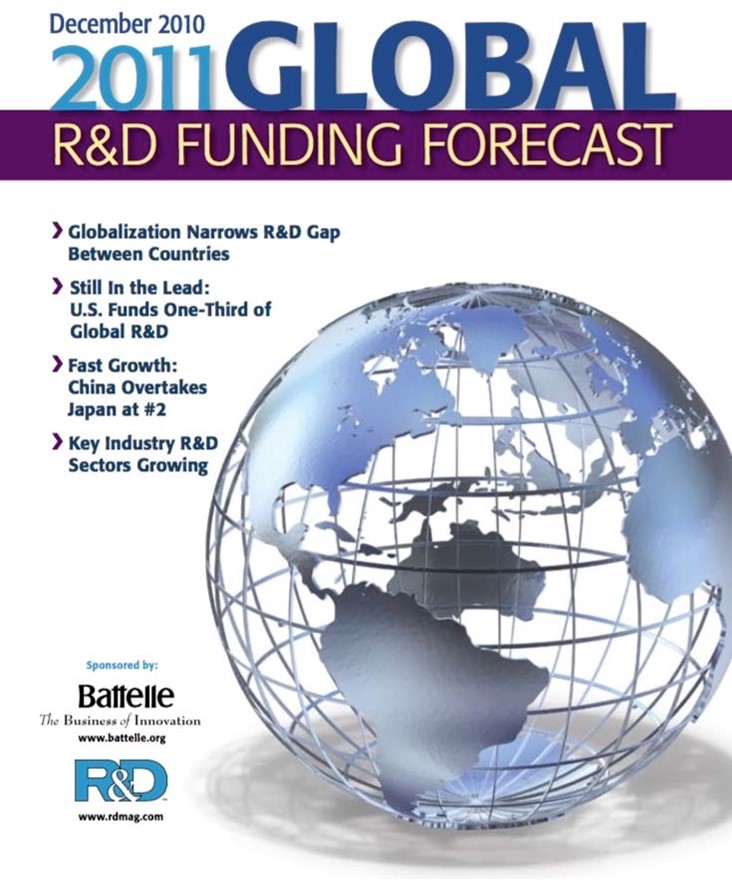
The world, according to the report, spent about USD 1.6 trillion on research and development in 2014. But not all those expenditures translated into ‘prosperity’ because many of the resulting products and services failed in the marketplace. The product failure rate can be defined as the percentage of new products actually introduced to the market, which then failed to meet the commercial objectives of the business unit that launched the product.
Each year, Battelle and R&D Magazine report on their “annual forecast of global research and development funding, which is a public service for use by policymakers, corporate research leaders, researchers, educators, and economists.”
They claim that research and innovation “contribute in the short and long terms to prosperity and competitiveness, as well as to the resolution of society’s greatest challenges in areas like health, energy, and security.”
Product failure is a commonly discussed theme in today’s world. The common conviction today is that approximately 80%–90% of products fail.
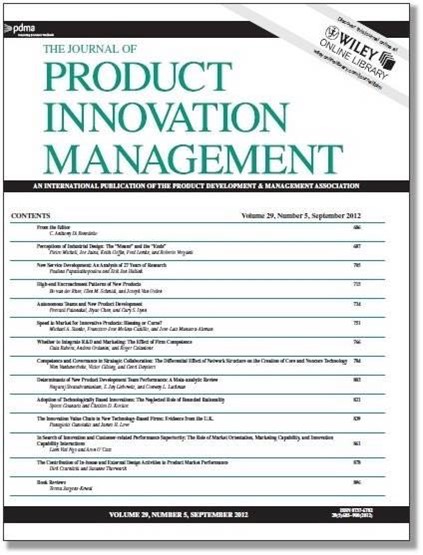
George Castellion of SSC Associates and Stephen K. Markham of North Carolina State University, however, do not agree with this data. According to one of their White Papers (Myths About New Product Failure Rates: New Product Failure Rates: Influence of Argumentum ad Populum and Self-Interest), the common assertion that 80%–90% of products fail is an urban legend. Instead, they claim, the actual product failure rate is around 40%.
So, even if we were to believe this assertion, then instead of having wasted USD 1.28–1.44 billion, our world wasted only USD $0.64 trillion in resources. Even that is a huge amount!
If we could do just a little better, the increase in productivity will have a measurable impact on improving our society overall, because successful products can enhance our life and the environment immensely. Imagine if we could use the same techniques that reduced airplane accidents to reduce the level of product failure!
In the same way, Steve Jobs built a company (with a ton of help from many others) that changed the world, imagine if other companies and organizations could also do the things Apple does well too. That shall also truly change the world and help many more beyond those who purchase Apple’s products.
The question becomes:
What are the reasons for product failures, and what key things can be done to reduce the rate of failure? If the rate of failure can be reduced, then that waste can be reduced with those resources being used elsewhere.
Failure reduction will also increase the productivity of research and development.
Product failures tend to fall into six general areas. Here is a high-level overview of the six essential keys to averting failure and enhancing the chances of product success. We will go into much more detail in the upcoming workshops.
The Six Keys to Building Insanely Great Products — You won’t learn in MBA School!

Product success is first based on building a company or organization that can be successful, then understanding the customer, innovation, a market strategy for the product, and then the hard part — the implementation: marketing, sales, service, support, and operations.
This article “11 Reasons New Products Fail” by Jared Shaffer is a pretty good review of the issues.
Great products fail all the time. It’s difficult to say precisely how common product failure is. Some popular statistics overestimate that 80% to 95%—the vast majority—of new offerings wind up as failures. While newer research suggests that the number is closer to 40%, the likelihood of product failure still represents a very real risk to fledgling companies. The stakes are high for new startups to launch products that earn enough revenue to sustain the business—but it isn’t an easy feat to achieve.
New products can fail for a variety of reasons—poor product-market fit, unanswered customer needs, or staunch competition, to name a few.
Reason #1: No Product-Market Fit
Achieving product-market fit means you’ve developed a product that offers value to the right market for your business. When you’ve found it, you’ll see signs like:
• Increased sales
• Low churn rates
• Product popularity growing through word of mouth
• High usage among your core customers
Without product-market fit, you’re unlikely to find much success with your product, no matter how well it works.
I’m sure you remember how Microsoft decided to take on the iPod in 2006. The company launched Zune, which promised to do everything that Apple’s device could do too. Yet, in spite of great promises, Zune failed on the market.
Why did Zune fail? Microsoft was just chasing Apple and created a product that offered no reasons for customers to switch. Microsoft’s marketing campaign fell flat compared to Apple’s, and the Zune’s feature set wasn’t as valuable to users as the iPod’s was. What’s the lesson from this mistake? It’s hard to know how the market will react to a product and marketing messaging, hence why it’s crucial to test these things beforehand.
Targeting the wrong market can lead to problems with fit, as can chasing a market that’s too small to sustain your business. Companies that routinely earn and keep product-market fit do so by adapting their product regularly to fit the changing needs of their market (not the other way around).
Reason #2: Solving the Wrong Problem
Every successful product needs to solve a problem for its users, and, going back to the idea of product-market fit, there need to be enough users with that specific problem. Solving a non-existing or rare problem won’t earn the popularity you need to gain traction in the market.
In 1990, Maxwell House launched Ready to Drink Coffee. The premise behind the product was simple: To create a new, convenient way for customers to enjoy coffee instantly, without having to actually make themselves a cuppa at home. Sounds genius, right?
A customer could buy the product at their local supermarket, bring it home, microwave it, and … voila, their coffee was ready. So why did it flop?They experienced a common problem many business leaders (especially early-stage entrepreneurs) encounter: feeling overly attached to their idea and convinced that there’s no need to change course. In this case, they envisioned a high-tech way to tackle a problem that didn’t need such an intricate, resource-intensive solution.
It turned out that you couldn’t microwave the coffee in its original packaging. Instead, customers had to pour the product from the packaging into a mug before putting it into the microwave … an activity no different than pouring yourself a cup of fresh coffee from the coffeemaker. That’s exactly what customers kept doing, forcing the company to abandon the product.
The solution for this kind of problem is to talk to your customers and target market. You may start out by creating a product that solves a problem you experience—and that’s a great place to begin. However, if you don’t check in with a larger audience, you’ll never know how widespread that problem truly is. Going back to your customers and validating your product decisions during (and even after) the build is the key to creating long-lasting, highly efficient products. Keurig’s continued success is a great example of a company finding an innovative way to solve the same problem Maxwell House tried to address.
Reason #3: Aiming for “Perfect” Instead of “Done”
When you’re launching something new, you have to balance the value you’re trying to deliver against the timeframe needed for your team to develop it. While putting a half-baked product on the market can certainly lead to problems, so can waiting too long to launch. It’s better to spend a month creating and launching an imperfect product that will garner feedback than it is to devote a quarter to perfecting software that may not actually address the problem you want it to.
That was what happened with Google Lively, the search giant’s answer to Second Life. After prolonged product development, Lively finally launched in 2008, just as the recession started to take its toll. As a result, the company pulled the product after just five months to “focus more on our core search, ads and apps business.”
New products (and new businesses) often fail because they spend too much time and resources trying to create something “perfect” instead of going to market with a completed product that can begin earning revenue. By the time that over-engineered product does hit the market, customer needs could have changed, the market segments may have evolved, or the economy could have shifted.
It’s completely normal to feel a little embarrassed when you launch your minimum viable product (MVP)—in fact, if you don’t feel at least a little worried about how your first launch will go, you’ve probably waited too long to release your product.
Reason #4: Not Gathering Regular Feedback from Customers
Customer feedback is the key to developing a product that solves their problems. Without checking in regularly, you’ll never really know if your product is delivering value or not. Even if that initial feedback is negative (which, if you’re working with an MVP, some of it will be), it contains actionable insight into how you can make incremental changes and improve your product over time.
In 1970, AT&T became blinded by its own vision and ignored negative feedback in trials, which led to the failure of the Picturephone. The company’s executives believed that a million units would be in use within 10 years of launch. Instead, after spending years researching and trialing the product, they pulled it off the market in just three years due to a lack of consumer interest. We know now that customers want video calls (we use them every day), so why did Picturephone fail?
As it turns out, users found the equipment too bulky, its controls unfriendly, and the picture too small to view clearly. The price for the service was also too high for most consumers—and these were all things users brought up during the trial phase.
Negative feedback can be difficult to deal with, especially if your company is brand new and you’re trying to make your entrepreneurial dreams a reality. It’s completely natural to want to avoid acting on it—or to avoid collecting it altogether. However, if you don’t ask your customers for their truthful opinions, you’ll never be able to iterate on your product responsively and quickly.
Your best defense against frivolous spending and wasting precious development cycles is proactively gathering feedback and validating every new feature and iteration of your product to better understand which product features add the most value for your end-users.
Reason #5: Iterating too Slowly
Quick updates are another key component of a successful product. The emphasis here is on “quick”—customer needs change fast, and so does the competitive landscape. The only way to keep up is to move in fast iterative software development cycles.
Fast iteration is part of what propelled Slack to its current success (which is a story we’ve discussed before on our blog). What started as an internal communication tool for a video game company was tested and tweaked until it became the uber-popular work tool it is today.
Timing is very important for B2B SaaS companies. In fact, mistiming a launch is a common reason why startups ultimately shut their doors. Your best option is to get comfortable making fast changes (and even get comfortable occasionally breaking things). It’s better to fail fast and learn something actionable than it is to move slowly and never understand why your product failed to gain traction.
Fast iterations will sometimes mean deviating from your initial product roadmap. That’s OK, and it’s quite common for early-stage startups to make big pivots away from their original plan. The key is to prioritize those pivots, which will deliver the most value for your customers.
If you’re not sure which changes to prioritize, your customers will tell you. Try to use feedback as a guide pointing you toward which iterations offer the most strategic benefit for your product’s overall success.
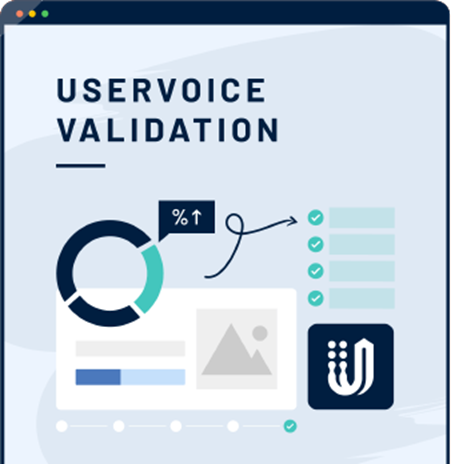
Reason #6: Using Incorrect Assumptions About Your Customers
It’s not always immediately clear how your customers will use your product—and sometimes, they use it in a way you didn’t intend. If your customers are getting value from your product, that can still be a win, and understanding user habits is the first step toward giving them the experience they want (even if it’s not the one you originally envisioned).
PayPal is a great example of how to pivot once you find out that your assumptions about your customers were wrong. When they initially developed their product, founders Max Levchin and Peter Thiel intended to provide an online banking service. Users came to rely on the service for quick online payments that didn’t require checks or money orders, and PayPal was born.
However, be careful of incorrect assumptions that can create problems if you’re not aware of them. If your customers are relying on your product for an unintended use, it’s only a matter of time until a competitor shows up to offer that functionality more purposefully than your product does. In fact, PayPal has made recent rate changes in response to increased competition in the digital payments space.
In product management, we talk about a concept called the intention-action gap. This gap is the distance between the way a customer would theoretically use a product and the way they’ll actually interact with it under real-world pressure and time constraints. The intention-action gap can be tough to plan around: prospective customers will sometimes assume they would use a product one way during a survey, even if that’s not realistic to their everyday life.
You can understand how your customers use your product by talking with them and, if possible, by watching them interact with it. Usability testing gives you the opportunity to find out exactly how your product is solving problems for your customer base. Short validation tests can also help you determine what your customers are using your product for.
Reason #7: Pricing Your Product Wrong
Products that aren’t priced to fit the market can fail. Customers won’t buy products that are priced too high, but if you set your price too low, you won’t generate enough revenue to sustain your business. It can be difficult to get your pricing strategy right, and many entrepreneurs put too little thought into how they’re going to turn a profit off of their idea. Some venture-funded companies eat through cash quickly because they don’t consider how much it really takes to earn a profit off of their product.
The Apple Newton PDA flopped for a number of reasons. Although some observers cite poor handwriting recognition as a main reason for the product’s failure, the steep $700 price point contributed significantly. That cost was too high for many consumers at the time, and, in the next few years after the Newton came out, cheaper alternatives became available.
The popular freemium model presents another pricing challenge for startups. Convincing customers to open their wallets and switch from a free version of your software to the paid flagship product is sometimes easier said than done. If the free version of your software offers enough perceived value to users, they won’t feel motivated to switch to the premium version. Meanwhile, your business can run out of resources while you’re waiting on free users to convert to paying customers.
If your pricing is getting in the way of your product’s success, it’s time to adjust. You can look to your competitors for an idea of what the market will sustain. Also, keep in mind how much expenses really go into creating your product. There are many strategies for pricing your product, and it’s OK to change course if your current approach isn’t working.
Reason #8: Not Enough Market or Industry Research
Successful products serve the needs of the market and industry. If you’re missing information about your target market or overall industry, it’ll be difficult (maybe impossible) for you to develop a product that fits.
Market research is an essential step to launching a successful new product. In fact, consulting firm McKinsey identified “incorporating market insights” as one of the most important steps for a successful product launch. Understanding who you’re serving is, of course, crucial for creating a valuable product, but it also influences how you position and market your product within your industry.
As a startup, Instagram successfully pivoted thanks to in-depth research into product analytics and user behavior. When it started, Instagram was called Burbn and, among a long list of other features, it allowed iPhone users to check in at different locations and share photos of their exploits. Burbn turned out to be too complicated for users—most people ignored the app’s full feature set and relied solely on its photo-sharing feature.
Instagram’s research into user behavior uncovered an important finding: the social media market was missing a simple photo-sharing app. Thus, Instagram was born.
Instagram’s success would not have been possible if co-founders Kevin Systrom and Mike Krieger didn’t check in with people to find out how they were really using their product. Without that step, they may have remained hyper-focused on offering a feature users didn’t really want or need.
If you constantly talk with your customers, you’ll uncover insights that can help you make sure your product fits the needs of your target market.
Reason #9: Investing in the Wrong Areas of Your Business
When you’re just starting out, it’s common to have a tight budget and limited time to devote to your product. Under those constraints, you need to be extra careful when you decide which areas of your business receive time and money and which ones can wait until later.
You may not need to devote a lot of money to a marketing blitz, for example, if you already have deep industry connections and word-of-mouth buzz. Your budget may be better invested by hiring capable developers and conducting regular customer surveys and interviews to gather their feedback.
In 2007, Joost promised to be the peer-to-peer TV network of the future and seemed off to a flying start. Unfortunately, Joost had various problems with its architecture, player, content library … you name it. Their team wasn’t able to fix those issues, and, as a result, it never took off. Two years after its launch, whatever was left of it was sold to Adconion.
The lesson? Lack of resources and internal support can hinder your efforts to produce a product that satisfies customer needs.
Early-stage startups are often fast-paced and a little unpredictable—as are new product launches. You and your team can lean into that unpredictability by staying malleable and being willing to pivot with little notice. It’s often better to shift course and make a mistake, as long as you do it quickly and learn how to do it better next time.
Reason #10: Problems with Your Competition
B2B SaaS is intensively competitive, and being outcompeted is a common reason that new startups fail—as much as 20% of startups closed because of a crowded marketplace.
It’s possible to pivot even if you’re facing a seemingly insurmountable challenge. Twitter did this quite successfully. Originally known as Odeo, the company had developed a podcasting platform while founders and staff tinkered with what we now know as Twitter on the sidelines. Odeo’s hopes to corner the burgeoning podcasting market were dashed once Apple released podcast support on iTunes. So the company pivoted to offering a micro-blogging social media platform—a segment they still dominate today.
If your market share is challenged by a new product, you have a couple of options on how to respond:
• Figure out what valuable functionality is missing from the product and add it to yours (but be sure it’s something that customers really want)
• Determine what users love about your product and focus on pleasing that segment of devoted customers
Whichever path you take, try to be sure you’re innovating and not just copying the competition.
Reason #11: Poor Execution
So many things contribute to new product failure: bad design, poor user experience, sloppy implementation, feature creep, and lack of quality control. Microsoft alone has several examples of how poor execution affected their product’s performance on the market.
Microsoft’s BOB, a UI addition that was intended to make PCs more beginner-friendly, relied on technology most users didn’t possess at the time—and that resulted in the product not functioning properly. The 2007 iteration of their core product, Windows Vista, used so much power that most users found it unusable. Vista also created a plethora of problems when using the Internet, including slow-loading pages and missing graphics. It was a recipe for failure. It’s no surprise that four months after the launch, Microsoft allowed Dell to sell computers with an older version of Windows pre-installed.
It’s tough to learn that your team didn’t execute part of your product strategy successfully, especially when you’ve poured so much time and dedication into your work. However, learning those hard lessons is the first step to iterating and correcting your initial mistakes. Even if your new product launch didn’t achieve the level of success you hoped for, it’s not too late to address the problem and try again. Microsoft learned how to improve on some of the problems with Vista in the later iterations of its OS.
Understand Why Your Product Is Failing
Before you can fix the problem with your product, you need to understand the reason why it failed. If you’re not sure what was behind the initial failure, talk to your customers. Ask them via surveys or one-on-one interviews which aspects of your product fell short of their expectations, and look at your product analytics to find out how users behave.
The approach to fixing the problem will vary depending on what’s behind your failed initial launch. If your product’s functionality is great, for instance, but something is amiss with your user experience, fixing the problem may be as easy as simplifying your user onboarding process.
Your best option is to talk with your customers and prospective users before your new product fails. That will help you identify potential problems early so you can iterate fast and deliver more value than your competitors.
The combination of a company’s values/vision, processes, employees, and systems/tools is what builds the company. One needs a strategy, information about the development and implementation of that strategy, and a clear understanding of what their customers want to “do.” The reasons for product failure are contained in one or more of these areas.
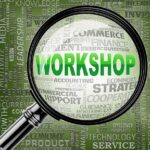
Problem-Solving Exercise 1

Course Manual 2: The Six Keys to Product Success
The Six Keys to Product Success are:
1. Strategy
2. Process
3. Information
4. Customers
5. Employees
6. Systems and Tools
Or a good mnemonic is SPICES. And, by the way, the name of the company that have developed these workshops.
“Success is a side effect of doing the right things in the right time” – Andre Hawit
1. Strategy (Product Market Strategy)
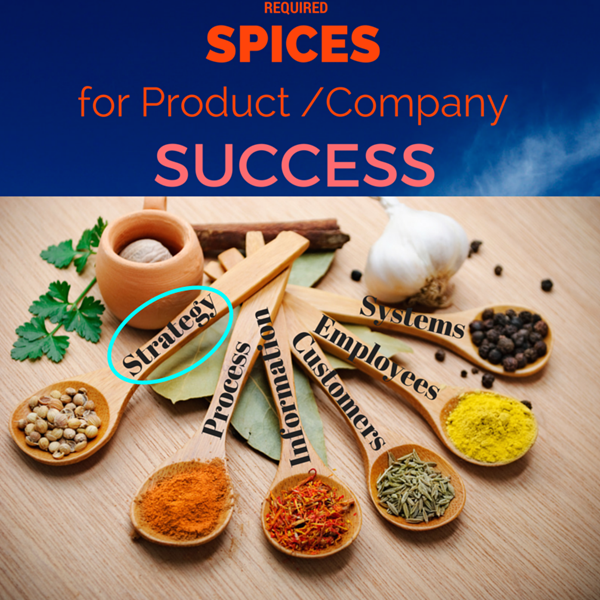
Every product should have a strategy, and a plan. The strategy should be mostly done before the development begins.
Many simply make the mistake of just identifying a few parts of the strategy and then jumping into development. Only later, when the product is being announced or even after the product is in the market and does not sell, does the organization go back and try to figure out the strategy.
This approach of “ready, fire, aim” leads to many product failures.
It is far better to “ready, aim in the general direction, fire and refine.”
A strategy or a plan for your product for a specific market or markets is what I call a “product market strategy.”
A product market strategy is essential to product success.
Product Market Strategy Checklist
Getting Started:
• Values, Vision/Mission Statement
• Decision Making: DACI or RACI Chart
• Schedule with responsibilities
Discover
• “Do”
• Innovation
• Problem Scenarios, Use Cases, and Outcomes
• Opportunity and Risks
• Prioritization
• Value Propositions
• Personas
• Market/Competitive Research and Analysis
• Market Status and Adoption
• Technology Insights
• Product Positioning
• Market Size, Segments, and Target Market
• Total Available Market
Plan
• Product Market Vision, Opportunity, and Description
• Competitive Environment
• Strengths, Weaknesses, Opportunities, and Threats (SWOT)
• Product Features, Advantages, Benefits and Problems Solved
• Pricing Strategy
• Market Penetration Strategy
• Channels, Partners and Affiliates
• Training for Sales, Marketing, Distribution, Channels, Partners, Affiliates, Operations, Support and Service
• Cost and Pricing Strategy and Business Model
• Basic Data Analysis
• Sales Forecasting
• Budgeting, Expense Control and Return-On-Investment
• Metrics
• Intellectual Property
• Product Road Map
• Product Portfolio
• Budget and Return on Investment
2. Process
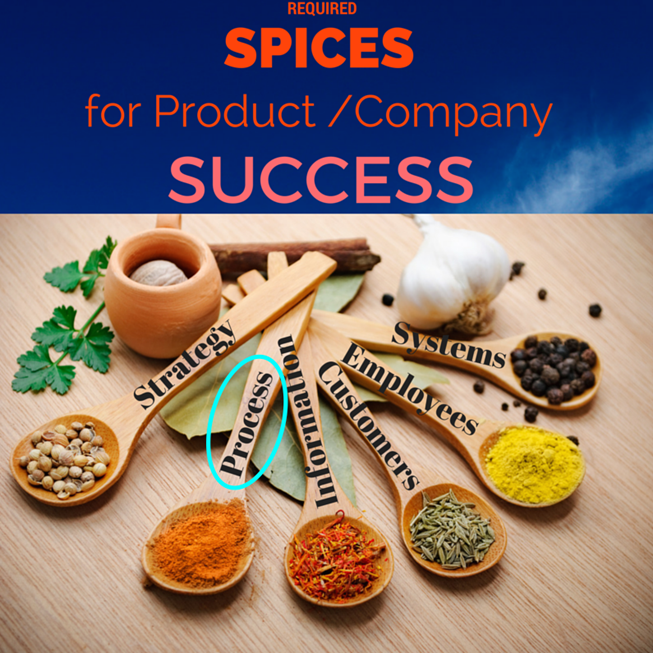
Importance of Process
“If you don’t have a product lifecycle process, you end up having a culture of blame” – A VP of product management in Silicon Valley
Do you have a repeatable, mature, and optimized product lifecycle framework with a process?
Without such a framework — that includes who makes what decisions, who needs to be informed/consulted, and who is driving the product — you will not only enhance your chances of failure but also will develop a culture of blame within the organization. This is because of the nature of some humans to blame others for failure.
A product lifecycle framework that everybody agrees to stick to will enhance the chances of success, reduce duplication of effort, and nearly eliminate rushing a product to market before you are ready.
The Spice Catalyst product lifecycle framework takes into account the digital transformation businesses are being forced to do today to remain competitive and the customer journey (which requires focusing on all stages and not just the purchase, agile, innovation, social media, messaging derived for products that were designed from the beginning to provide value). It also considers compassion for the customer and reward for their loyalty when the product they love is brought to its end of life, and an understanding that operations, support, service, and training are contributing more and more to the customer believes that a product is truly an insanely great product.
Unfortunately, other frameworks from the most popular training companies mostly fail to consider what is listed above — thus, if followed, their frameworks enhance the chance of product failure.
“Why is it they would be pushing a framework that is going to hurt and not help?” you might ask?
It’s because they just want to repeat, “That is the way it has always been done.” They do not want to think through the impacts of organizational and interpersonal behavior.
I looked in-depth at their frameworks to assess them from the standpoint of completeness and currency. I am uniquely qualified to evaluate these frameworks since I have had personal experience with each – either by teaching or taking classes from all of them. In addition, I have experience in conducting extensive analyses of several companies’ processes and providing senior management with a report as to their strengths and weaknesses.
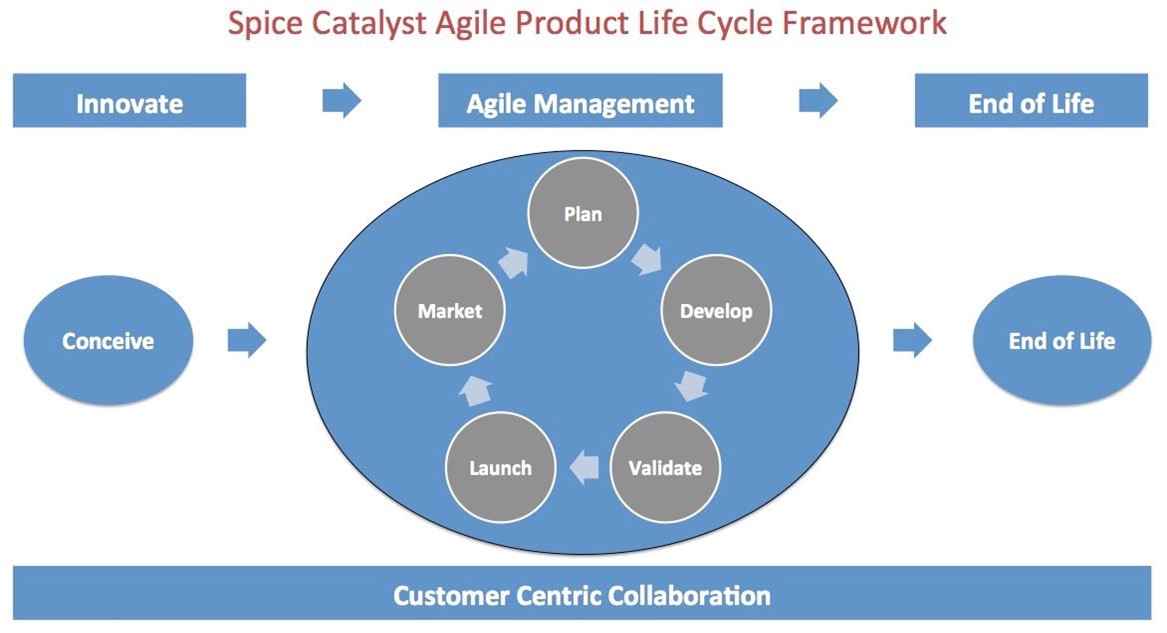
Agile Product Lifecycle Process
While each has its own set of strengths and weaknesses, they all suffer from these eight key aspects:
1. Digital Transformation: Changes caused by digital technology are not reflected.
2. Customer Journey: Product managers and product marketing managers have to be concerned with the entire customer journey – not just bits and pieces.
3. Agile: A real integration of Agile product management is needed. Most briefly cover agile as a form of product development, but it is typically just bolted onto an existing waterfall framework or ignored completely.
4. Innovation: Generally, it is only cursorily mentioned in the product description or requirements documents, which seems odd. So does that mean the product manager has nothing to do with innovation, even though most authors of the frameworks say the product manager is the “voice of the customer?”
5. Social Media: Not mentioned even though in the past five years, it is the fastest and becoming the most important part of the marketing mix — not only to get the message out, but also to monitor what the market is saying about your product. This is a huge failure. I cover social media marketing in Marketing Insanely Great Products.
6. Messaging: It is derived from the value propositions by persona and positioning, which incorporates your competitive and market research.
7. End of Life: Many companies ignore maintaining customer loyalty when they bring a product to its end of life.
8. Operations: Support/Service/Training: Many companies fail to plan for customer support, service and the training of them and the channel
Part of the reason for what I outlined above is because the latest version was done in 2011, before the concepts of the digital transformation, customer journey and social media leaped in the product process mix.
Many of the reasons why products fail are a direct result of the limitations of the frameworks being used and promoted. Failed frameworks = failed products – it is as simple as that.
Another part of the reason these frameworks are flawed is the background and experience of the folks who put them together. Many are just plain lazy. Quite often, one framework is merely a copy of another. Additionally, two “current” frameworks actually date back to the 1990s – which was significantly before there was any consideration of the eight factors listed above.
While several frameworks have been published publicly as innovative, they do not reflect any current improvements in process or procedures from what has been done for decades. One framework strongly reflects the author’s’ experience at one company, which has ultimately failed. How is that helpful? Most are neither “complete” nor “optimal” (beware of false advertising). Furthermore, the most studied framework reflects nearly three years of work from nearly 60 people. Sounds good, right? Unfortunately, it too misses the mark since, for the most part, the eight factors for success are largely not taken into account.
After hearing Marshall McLuhan (Canadian professor, philosopher, public intellectual, and one who is viewed as one of the cornerstones of the study of media theory), the statement occurred to me:
“The medium is the message.”
I believe there is a corollary:
“The process is the product.” – David Fradin
Because if there is a flawed process, one ends up with a flawed product. If the process is good, the product is almost always consistently good.
Product Management Lifecycle Framework

Spice Catalyst Product Management Lifecycle Framework
According to the Gartner Group, you also will not be able to move up the process maturity curve from having operational problems, to being aware of the process, to internal and external control and automation, to enterprise goal driven control, and then to agile innovation.
Process Maturity Curve
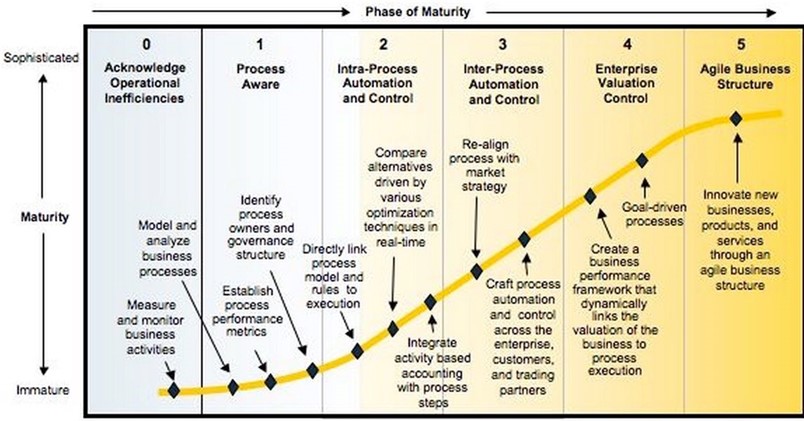
The Six Phases of Business Process Maturity (BPM) Courtesy: Gartner.
A modern framework and strong, clear processes will build a “can-do” culture – a culture of success.
Assess Your Product Lifecycle Process
16 Questions to Assess Your Product Management lifecycle
Now that you know the Six Keys to Product Success and the need to have mature, repeatable processes that follow a modern framework, the question becomes, where is your organization in terms of keys to success, process, and framework?
Over the years, I have developed 16 questions you can ask in order to conduct an assessment.
They cover all the interpersonal and inter-organizational behavior questions that are key to understanding what is working well, what is not, and what your team should suggest being done to improve. The questions and their resulting answers also cover asking about the inputs that will help your team get the job done and what competencies they need to actually do their job. The questions also help you get a feel for how well your team understands your company’s culture and whether or not the culture is enhancing success — or encouraging failure.
Here are the questions to assess your process:
Assessment questions:
1. What is your role?
2. Who owns the overall responsibility for the product’s success?
3. What is your process for gathering and prioritizing requirements and feature requests?
4. What deliverables do they own or greatly contribute to?
5. What is working best?
6. What is missing?
7. What are your biggest challenges?
8. Where are the biggest bottlenecks? What slows you down most?
9. What changes would you make?
10. Are there things that you have done or seen at other companies that worked better?
11. What tools and software do you use today?
a. What is good about them?
b. What could be improved?
12. Specifically, what information about your customers and your product is available to your product managers and product marketing managers that helps them do their job?
a. What additional information do they need?
13. How do you go about assessing the competency of your product managers and product marketing managers?
a. What are your plans to improve those competencies?
14. In your words, what is the vision of your company?
15. What are the values of the company?
16. Please describe the company’s culture.
3. Information
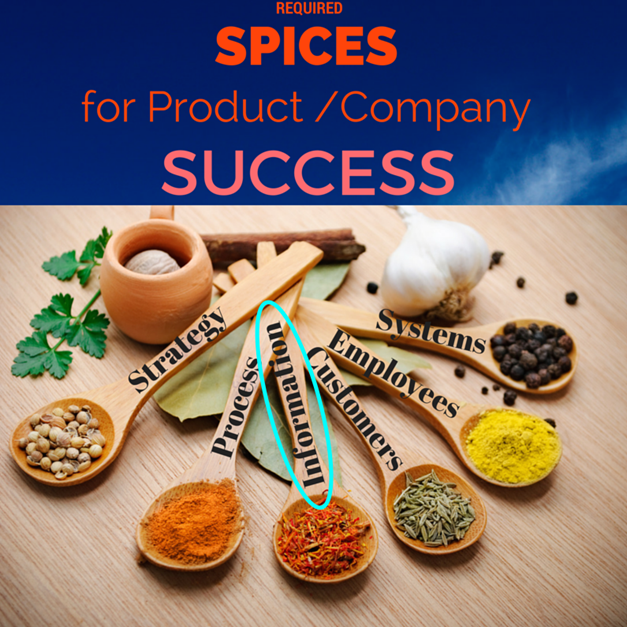
To manage a product effectively, one needs to have information and knowledge available before decisions are to be made in order to track and make corrections.
This information includes all of the information necessary to pull together a product market strategy, up-to-date information about how well the marketing is working, how well sales are going, and what is happening in all aspects of operations.
Without it, managing the product is flying blind.
The questions you should ask are:
● What information do you need?
● How are you going to get it?
● In a digital world, how are you going to stay on top of it?
“There are three principal means of acquiring knowledge available to us: observation of nature, reflection, and experimentation. Observation collects facts; reflection combines them; experimentation verifies the result of that combination. Our observation of nature must be diligent, our reflection profound, and our experiments exact. We rarely see these three means combined; and for this reason, creative geniuses are not common.” – Denis Diderot
4. Customers
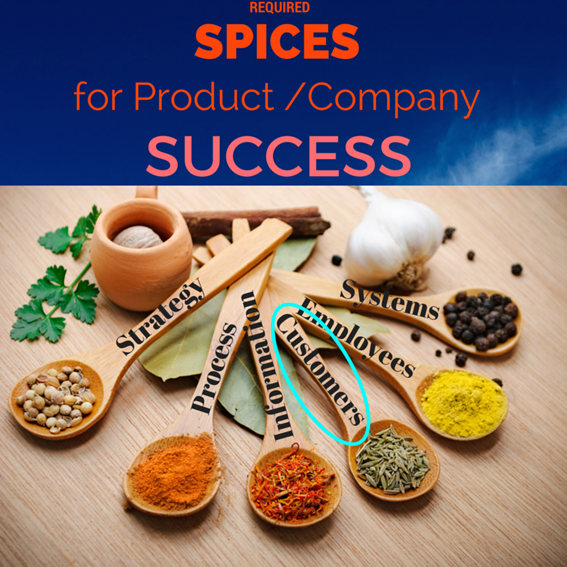
• How well do you know your customers?
• What are you doing to be sure you keep them happy?
• Does your product and your company help your customers “do” what they want to do?
• If your product and your company truly help people do what they want and need to do, then you will be wildly successful. If not, then you will know the impact of the consequences.
In turn, by generating your value proposition based on innovation for what people “do,” and positioning statements – which in turn will drive your marketing, messaging, and media efforts – everything becomes more effective and easier.
Generating your value proposition becomes easy if you start with what people “do.” Likewise, after doing competitive market research, the combination of information from the innovation and customer value makes positioning easy, too.
As a result, messaging and key selling points quickly fall by the wayside.
“Business is not just doing deals; business is having great products, doing great engineering, and providing tremendous service to customers…” — Ross Perot
5. Employees

Alfred Sloan, the Chairman of General Motors, codified business accounting principals with such things as people as “liabilities” and inventory as an “asset.” The principles are followed today by most MBA-trained leaders and the financial community. As society evolved from an agricultural to an industrial one, Sloan developed this “modern accounting system.” Even though we have gravitated from an “industrial” society to an “informational” one, Sloan’s system affects most corporate decision making and it is causing problems. Sometimes it drives decisions that are not always in the best interest of the company, its employees, its shareholders, and most importantly, its customers.
Let’s discuss these two concepts.
“Train everyone lavishly, you can’t overspend on training” – Thomas J. Peters
Inventory is a Liability, NOT an Asset

Inventor
For example, during the great recession of 2008, General Motors had over 1.5 Million cars they could not sell. If you do not have customers, your inventory is worthless. Using Sloan’s principles, those cars should have been very valuable, but instead they were a major liability.
HP didn’t strongly believe in Sloan’s standard accounting methods as a means of strategic management of the company. How do I know? First of all, I was there. In addition, the history books show how HP helped pioneer the field of “just in time” manufacturing (maintaining minimal inventory) and helped teach the Japanese how to do it (which has evolved into “agile” these days).
David Packard wrote and spoke frequently about the issue. There was also an attempt in the 1980s by the Association of Accountants to change the practice, but it failed and we still use Sloan’s principles today.
People are an Asset, NOT a Liability

People
When a downturn occurred, HP knew that its people were the most important asset, not a liability, as Sloan’s accounting methods articulated. On occasion, when there was an economic downturn, employees volunteered to work less, so that all could work. They would work nine out of every 10 days. The result: when the recession ended, the company didn’t have to go to the expensive cost of finding and training new people.
HP also doubled down and invested more during a recession, doing product research and development. It was the same thing Steve Jobs was quoted as saying in 2008 about doing at Apple – he probably learned that from David Packard. Hence, we are seeing the results now of that strategy. Apple doubled down on new product development during the great recession, and as a result, by 2012, it became the most valuable company in the world. Inventory is a liability and people are assets, not the other way around.
6. Systems and Tools

You need to have the systems and tools in place to meet the challenges listed below. I discovered them by researching, watching and interviewing those who are responsible for managing products.
“Give us the tools, and we will finish the job” – Winston Churchill
Challenges of Managing Products

The Challenges of Building Insanely Great Products
One of the many significant challenges we have in building insanely great product is managing its product lifecycle. We did interviews of five dozen managers of products around the globe and across multiple domains.
These are the challenges we found:
• Process / Methodology: The first major challenge is the process. The process doesn’t ensure success but can help reduce the failure rate through checks and balances and repeating what works vs. what does not work. This means that process maturity is key. As a result, organizations must give serious thought to which process might or might not work for them.
• Enterprise Assets are being stored as Personal Assets (information on personal computers, for example): Most are using “point” solutions such as Office (Word, Excel, PowerPoint, and Email) for word processing, financial analysis, presentations, and communications. The resulting artifacts, such as competitive analysis, vendor analysis, and cost analysis, are also stored on personal desktops, making it difficult for others in the enterprise to access – especially when the knowledge worker is traveling.
o Collaborative tools like Wikis, SharePoint, and Google Docs are beginning to be used. With these, there are risks of data loss, critical human resources going on emergency leave, or human error.
o Organizations need to make sure these assets that form the knowledge base of the product are available, created, and easily accessible by those who need it, and at the right time.
o In addition, that information needs to be the right information and be current and up to date.
• Unstructured data: If it is left to individual intelligence on how product information is organized, then the artifact structure can become very complicated. Each will create their own structure, while others within the organization will have their own standards and conventions. Given the fact the information is distributed in various ways, either they will end up wasting a good amount of time to keep the information structured, or let an unstructured format take precedent. This results in wasting time looking for information, including finding the most up-to-date information at the right time.
• Collaboration: There are many options teams can use day-to-day to work together. Chat, Phone, Video call (Skype/Google Hangout), Slack, Jive and Webex/GoTo Meeting are all popular in 2016. On top of these tools, teams often have their own collaboration platform, which means that collaboration on the chat, phone, and other spaces are not necessarily stored in the collaboration platform. Without close and timely collaboration between all the stakeholders, the odds of product failure increase.
• Communication, Task Assign, and Tracking: Email is still the number-one tool used to communicate. There have been studies on the side effects of overusing email that enables critical communications to be lost or overlooked. Despite the many issues, organizations rely on this tool, given that stakeholders are accustomed to it. Email is sometimes used as an action tracker system for tasks that email was not generally designed to accomplish. As a result, it is difficult to prioritize tasks and track their status. Furthermore, the rich history of information sharing and decision-making is buried in email threads that are hard to find, especially in a timely fashion.
• Visibility: Managers, directors, and VPs must have effortless visibility on what their team members are working on. How much visibility do all product team managers have on their related areas of product development and go-to market activities? Many are perhaps working on quarterly deliverables with monthly reviews, which may not be frequent enough for agile, mid-course corrections. For example, product managers might create market research that may contain errors, only to be found when being reviewed and after the errors have been disseminated. These product managers, as a result, may not have had an opportunity to seek the input of their team in order to maximize the research project. As a result, strategic decisions might sit in wait mode while these reviews happen. Since business dynamics are so fast, more visibility and transparency are necessary to make it easy for organizations to adapt to rapid change and thus be agile.
• Lack of Authority: Influence is the key to overcoming this challenge. But what else can product managers do to enforce a viable work product? RACIs or DACIs document the concept initiation stage and make cross-functional teams clear on roles and responsibilities. It might have to be revised when required. But many teams do not use this technique. Maintaining a structured way of working along with all team members, knowing for sure the extent of their responsibility and authority, is key. Doing so would be proactive, forcing cross-functional team members to respect the product lifecycle workflow and help avoid counterproductive political issues.
• Thus, one of the keys to building insanely great products is to have the systems and tools in place to do word processing, financial analysis, presentations, communications, collaboration, process management, task management, and document control (storage, search, retrieval, access, version management, and organization), reporting, and decision management. Now with this list in hand, you can go out and look at the available systems and tools and select the ones that make the most sense for your organization.

Problem-Solving Exercise 2
Process
Information
Customers
Employees
Systems and Tools
b. What are the key process steps needed in the context of the products listed above?
Identifying un-met needs of the end-users
Market validation of a new product feature
Preparing for launch of a new product release
Setting-up support desk for newly launched product
c. How companies like Netflix have leveraged data (Analytics)? What data helps them to make next movie to watch recommendation?
d. What are the benefits of investing in developing insanely great user experiences for a product enterprise?
e. What are the critical responsibilities of a agile product owner? Which are the stakeholders a typical product owner needs to engage & why? Which information contained in the deliverables of product owner is consumed by a business analyst?
f. What are the digital tools used in agile product development? Compare MURAL and Miro collaboration platforms.
g. Make a list of different strategies under the following strategies:
Feature prioritization & market alignment
Product testing
Product differentiation
Product sales channels
Listening to voice of customers
Listening to employees for product innovation
Building relationships with channel partners
h. What can we learn from failed strategies?
i. What are the popular techniques/ frameworks used to arrive at product strategy?

Course Manual 3: What Is a Product?
What Is a Product, a Product Manager and more on the Keys to Product Success
A product is an article or substance that is created or refined with the intention of being used. Typically, it is marketed to be sold and/or delivered. A product usually is tangible. Even though one cannot touch software, it is considered to be a product too, because people interact with it through their computers or other devices.

A service is an intangible product.
Therefore, the services that are developed and/or delivered by commercial or non-profit organizations, including government, are products too, and the foundations discussed in this workshop also pertain to them.
Who Is a Product Manager?
In many organizations, the person or persons responsible for the success of a product has the title Product Manager or Product Marketing Manager. However, they also some- times go by different other titles—perhaps as many as a few hundred more titles—but they pretty much do the same things (or a subset of the same things) and need to have the same competencies. In information technology, they are also called Business Analysts, but they only perform a portion of the responsibilities that have been discussed in Module 2: Product Market Strategy.
The concept of a Product Manager (which we will cover in more detail later) started in 1932 at Procter and Gamble (P&G) and spread, based on my research, from P&G to Hewlett-Packard, to Apple (and others) and then to many companies in Silicon Valley and around the world. This includes such places as Australia, Sweden, and recently Germany, Portugal, and India.
Nonetheless, a sizable number of organizations in many countries (such as Singapore, India, China, and parts of Europe), generally believe they do not need Product Managers. The rest of the world has little recognition of the role, but some of the techniques of entrepreneurship (which is a subset of all of the competencies required for product success) are just beginning to be deployed in such places as Africa and Pakistan.
Further, many organizations that currently offer services, such as the huge outsourcing IT services industries in Singapore, India, and the developing one in China, also widely do not understand that what they are providing is a product as well. And that if they want to shift from a product management model, based on their domain knowledge, to sell their service to others beyond the original contracting client (thus producing sustainable, repeatable, and longer-term revenue with possibly higher margins), they need people responsible for over 130 competencies necessary for product success.
Failure to learn and deploy people with these competencies will be at their own risk, and significantly increase their chances of failure.
Product management and product marketing management have been the keys to Silicon Valley’s long-term success. It has spread principally from Santa Clara County to San Francisco, and now the rest of the Bay, including the area between Palo Alto and San Francisco, to Oakland, and more recently to Fremont and the Livermore Valley.
However, in its transition from P&G to HP, it lost what P&G’s brand managers had, which was the authority over the product’s budget to develop the product’s market strategy and do its marketing. This has resulted in the Product Manager today having all the responsibility, with no other authority than their persuasion and political skills. In such cases, the senior management of organizations can learn to do what the management teams of Apple, Google, Facebook and others have done, leading to their tremendous success.
Over the past dozen or so years, the Sales Vice President in these organizations has been renamed the Chief Customer Success Officer. On a similar note, I advocate that the time has come to start calling the people that are currently called Product Managers or the like, as the Product Success Officers. Their group director would then have the title of Group Product Success Officer and the Vice President or Executive (or Senior) VP would be called the Chief Product Success Officer.
But how can we ensure that we make more effective products and why do so many products fail? Could we use the same techniques that reduced airplane accidents, to reduce the level of product.

What if other companies and organizations also could do things that an organization like Apple does well, and build a company the way Steve Jobs did (with a ton of help from many others), that changed the world? Making effective products can truly change the world and help many more beyond just those who purchase Apple’s products.
Throughout this course, we will understand in depth the various reasons for product failures and what key things can be done to reduce the rate of failure, and as a result, reduce waste and increase the productivity of research and development.
In this context, it is important to remember that the success of the product or the responsibility to make a product successful does not lie only with the Product Manager.
While the Product Manager plays an important role in planning and implementing this initiative, it is ultimately the responsibility of the entire management team, and the organization as a whole, to work cohesively to create a customer-centric Product Management culture, which ultimately leads to the success of a product.
In this introductory module, we will get a bird’s-eye view of the key steps that organizations or Product Managers need to keep in mind to plan, develop and manage successful products. The other modules in this program will elaborate on these steps and help you develop the skills to work on each of these stages.
Six Keys to Product Success
My studies have found that causes for product failures tend to fall into six general areas. In this session, we will give you a high-level overview of these essential keys to averting failure and enhancing the chances of product success.
The following are the six keys to product and organizational success—in short, SPICES which we covered in an overview.
We will now go into further detail about the strategy in this workshop and the rest in next workshop:
1. Strategy
2. Process
3. Information
4. Customers
5. Employees
6. Systems
Let us discuss each of these.
1.`Strategy: Strategy or Product Market Strategy
The first key to product success is to have a clearly laid out strategy—a strategy for the product, a product market strategy.
By strategy, we mean a plan of action or policy designed to achieve a major or overall aim.
All too often, products are developed with the process as shown in Figure 1.1.1 in mind: op

Typical Product Planning Process
Some even call it Ready, Fire, Aim—a very popular expression used by venture capitalists, angel investors and others.
I believe this process is flat wrong!
What happens if:
• What is conceived, is not solving the problems of what people and/or companies do?
• What is developed, is for problems people and companies have no interest in solving?
• Sales people swarm the masses pushing a product that people do not want or need?
But this is exactly what is done all the time. In fact, it appears this is actually a good part of the 40% failure rate of products/services and the failure of startups.
Here is what is missing:
A strategy or plan!
Since a product, to be a product, also must have a market, a product market strategy is a clearer description of a product strategy to be successful in a particular market.
The Product Management framework depicts the major stages of a product’s lifecycle. Note that product planning and product market strategy is only one of the phases. The six stages of the Product Management framework include:
• Product Planning (Product Market Strategy)
• Product Development
• Launch
• Marketing
• Operations
• End of Life
This is a framework designed specifically for products and services. Many companies have tried to adopt various other frameworks, including those for software engineering, quality control or just-in-time manufacturing, but only with varying levels of success.
Steps to Building the Product Market Strategy
Although frequently misunderstood, a plan is essentially the strategy. Sometimes, the terms get used interchangeably. For example, if my goal is to conquer a hill, one of my layouts is a plan to go around it to the left and breach a weak spot. That is the strategy—to go around it to the left rather than a frontal attack.
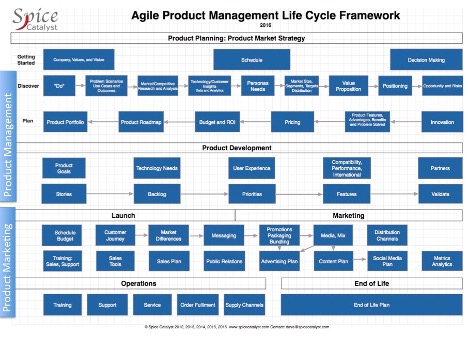
Figure 1.1.2 Product Management Lifecycle Framework
An organization first gets started with product planning by making sure the company’s vision and values are complete. In addition, it needs to determine who will be responsible for which decisions and a schedule is established.
Following are the key areas and questions one needs to find answers to, to put together an effective product planning strategy.
1. Discover: Do
Do you completely understand what your prospective customer does? What are the tasks they are trying to get done? What job are they trying to accomplish? What are their pain areas or challenges in getting this job done?
You learn this by observing, then interviewing, and then surveying. You come up with a hypothesis of the problems your prospective customers are having first, by observing what they do.
Then, you validate the existence of those problems by interviewing additional prospective customers that fit the same persona. Last, by conducting surveys, you can quantify the magnitude of the problem. You might iterate on observing, interviewing, and surveying until the real problem that has to be solved has been clearly defined.
For a business-to-business (B2B) activity, do you know your customer’s customer and what they do?
2. Discover: Innovate
Can you innovate? Can you come up with ideas, not for the sake of ideas, but with ideas that solve real problems you know your customers are having?
3. Discover: Market and Competitive Research
Can you do market research and/or direct someone who can?
Can you do competitive research on both the products that compete with you, and with the companies you are competing with?
4. Discover: Personas
Can you identify and define targeted personas who would be users for your products, based on your research? Can you clearly define their characteristics, behavior, their needs and what they would want to see in a product? In short, can you clearly say the product will actually do what the target persona wants to achieve?
5. Discover: Value Proposition
Based on understanding of what your customers want to do, your innovation and your tar- get personas, can you develop and write a clear value proposition for your product? Your marketing and sales people’s success would depend on how clearly this has been done.
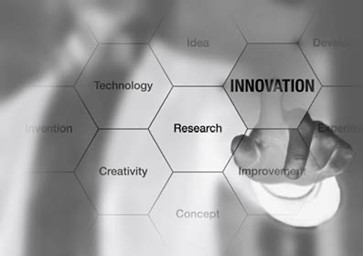
Based on your value proposition and market/competitive research, can you come up with a compelling positioning statement, which in turn your marketeers can translate into a compelling messaging that is memorable, and enables your product to stand out?
7. Discover: Target Markets
Can you aggregate your target user personas into market segments and addressable markets and pick the ones that will give you the greatest success?
8. Discover: Product Roadmap
Can you produce a sensible product roadmap for both—your insanely great customers and for your sales team? And a roadmap that is easy to understand and will solve their problems?
9. Execute: Implementation
How well can you implement and execute? Can you get things done in a timely fashion?
10. Develop: Differentiators
If you can get any of the above things done better than the competition, they automatically become significant differentiators and will make life difficult for the competitors. The more you can do the above well, the more differentiators you have, and the better your chances of success.
11. Develop: Brand
What would your brand message be? Over time, the elements of your product strategy become your brand, or the promise of your product and/or company that sets you apart from your competition.

Case Study
Product Branding: Apple
Apple does the entire process of product planning and translating their product strategy into their branding message extremely well, and it is a major part of their success.

Problem Solving Exercise 3
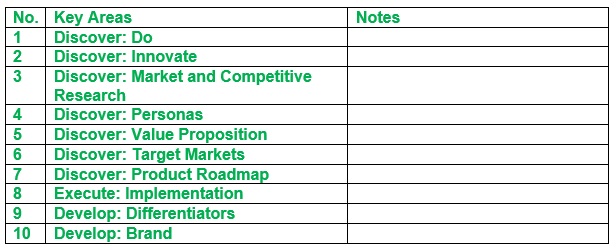

Course Manual 4: The Keys to Product Success
2. Process
Now we will cover in more detail the additional keys to product success.
If you don’t have a product life cycle process, you end up having a culture of blame. — A VP of Product Management in Silicon Valley.
Do you have a repeatable, mature, and optimized product lifecycle framework with a process for all activities that are meant to contribute to product success?
Such a framework would include:
Who makes what decisions?
Who needs to be informed/consulted?
Who is driving the product?
In the absence of such a framework, you will not only enhance your chances of failure but also will develop a culture of blame within the organization. Additionally, you also will not be able to move up the process maturity curve, which is the result of studying the process being used and implementing the best practices in those same processes again, thus increasing the chances of success.
A product lifecycle that everybody agrees to stick to, will enhance the chances of success, reduce duplication of effort and almost eliminate rushing a product to market before you are ready.
Strong, clear processes help build a can-do culture and a culture of success.

Case Study
Product Lifecycle Framework: Video F/X for Digital F/X
I was the Product Manager for the first desktop video editing system ever sold, by a company called Digital F/X. One day, we were preparing to display the product at a trade show. The Marketing Communications Manager came to me and demanded that I produce copy points or bullets he could put on the trade show signage. Keep in mind that he was rated on how well he got the text on signs and did not really care what the sign said.
I explained that I just started this job (I took over for a recently departed Product Manager), and for the past month I have been trying to get senior managers (CEO, Marketing Manager, Engineering Manager and Sales VP) to sit down and agree on:
1. What does the product do?
2. Who are the target personas?
3. How do we compare to the competition? 4. What is the target market(s)?
5. What is our positioning statement?
I could not get them to sit down and discuss those six questions. Further, when I talked with each of them individually, they had different answers to each question. For example:
1. What does the product do? They said:
• Video switcher
• Machine controller
• Character generator
1. Who are the target personas? They said:
a. Macintosh users
b. Video users
2. How do we compare to the competition? They said:
a. Integrated
b. Runs on a Macintosh
3. What is the target market(s)? They said:
a. Macintosh users
b. Video users
4. What is our positioning statement?
They said:
a. Desktop video (What does that mean? Shoot a video of a desktop?)
At that point, the company had raised USD 30 million from one of the leading venture capital firms at the time, Kleiner Perkins. The lead investor was Vinod Khosla, who was a co-founder of Sun Microsystems, and went on to champion Green Energy. He had placed me in that job.
I found out that the company had not done any market research, so even if the questions I raised were answered by the CXOs, it was merely speculation based on their experience and not on hard research.
So, the Marketing Communications Manager, exasperated by my response, drafted some key value propositions based on the CXO’s guesses, made his signs, spent USD 120,000 on the show, generated 1,200 leads (I should say that the leads were people who wanted the free give- away T-shirts and had little interest in the product) and resulted in USD 24,000 in sales. Most would agree that was not a good return on investment.
The first thing I did was primary market research, and found the product was being used by video professionals in post-production suites, not the targeted Mac user. The product cut the cost of a post-production suite in half. It helped integrate discrete components in the suite. The target market is those who already know how to produce videos, not the targeted Macintosh user who does not know video production.
The CXOs at my company did not know this.
A year after I left the company, the company went out of business riding the tail of over 30% of its customers being dissatisfied with its products and support.
If that company had a product lifecycle framework as shown in Figure 1.1.2, everybody might have understood where the six holes described above are and help try to fill them.
The Maturity Curve
Most companies worldwide have had a focus on their processes for isolated areas such as quality improvements, cost savings, reduced delivery time, product engineering and supply chain management. A few have a process focus on the complete product lifecycle.
Process improvement gives a competitive advantage in the areas mentioned above—the same is also true for a product. Since the product tends to cover many of the organization’s activities, following a framework and a process will significantly improve success, in addition to creating a competitive edge.
As shown in the Figure, organizations need to work up from no-frameworks and processes to managed and optimized to increase their productivity, reduce repeating the same mistakes and eliminate duplicative efforts.
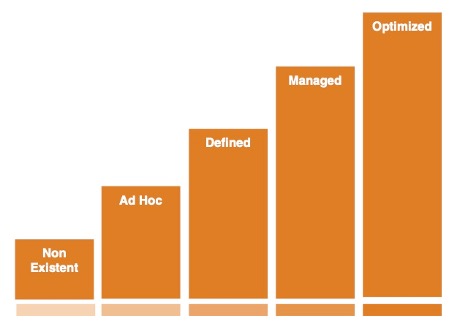
Levels of Process Maturity
Responsibilities Chart
Each product should have a DACI or RACI Chart, as shown in Figure 1.1.4.
DACI stands for Decision, Advise, Consulted and Informed.
RACI stands for Responsible, Advise, Consulted and Informed.
With such documents in place, everybody knows who is responsible for what areas and to what level of responsibility.
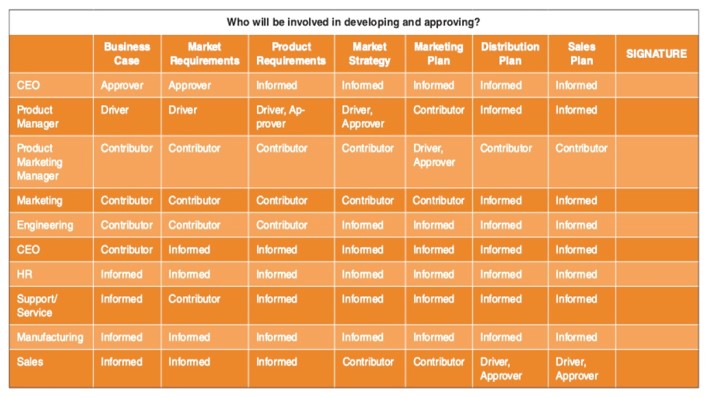
A sample DACI chart

Case Study
Responsibility and Decision Making: South African Bank
Here is an example of failing to have an agreement on who the decision-makers are and who should be informed, consulted, and advised.
I was teaching product management to the Botswana Telecommunications Company.
Also in attendance was a Senior Product Manager for a leading South African bank. As we moved into the second day of class, the bank Product Manager put up his hand and said that he got a phone call and that his product just got canceled. He said a new General Manager just joined the bank and told the President to cancel the product.
I asked if he had a DACI or RACI chart.
He said, “No.”
I asked whether that General Manager’s position would have appeared on the chart.
He said, “No. That position would have had nothing to do with this product.”
So, if lines of authority were clear, he could have gone to his President and said that the General Manager does not have the authority or any involvement, and therefore the work of a dozen people over 18 months should not have been wasted.
That Product Manager and a number of members of its development team were so bothered by the treatment, they moved on to other opportunities.
Having clear lines of authority and knowing who is responsible for what is a key to product success.
3. Information
To manage a product effectively, one needs to have information and knowledge available to track and make corrections.
This information includes everything necessary to pull together a product market strategy, up-to-date data about how well the marketing is working, how sales are going and what is happening in all aspects of operations.
Without it, managing the product is flying blind.
We will discuss in greater detail what information is mandatory and what is optional later in this book, and also discuss how to get the right information.
4. Customers
Do your product and your company help your customers do what they want to do? Does it help eliminate the pain point of customers?
If your product and your company can truly help people do what they want and need to do, then you will be wildly successful. Generating your value proposition based on your innovation for what would help people do their jobs better, and positioning statements which in turn will drive your marketing and, messaging, and media efforts will make it more effective and easier.
Generating your value proposition becomes easy if you start with what people do. Likewise, after doing competitive market research, the combination of information from research, innovation, and customer value makes positioning easy, too.
Messaging and key selling points then quickly fall out. All these activities lay the foundation for creating a marketing plan, as shown in the Figure.
But frequently, companies start with the messaging and must backtrack to all the things above it. And they have little time to do it before going to market; as a result, it significantly reduces the chance of success.
In subsequent Modules, you will learn how to record what your customers do, generate a great value proposition based on your innovation, and also develop a winning message and key selling points.
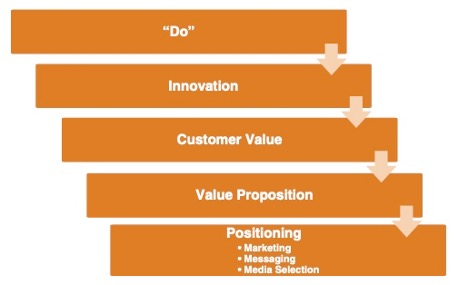
Laying the foundation for marketing
4. Employees
Does your organization have the right people with the core competencies, as depicted in Figure 1.1.7, necessary to build, market, sell and support insanely great products?
If not, you probably will have gaping holes in your company’s competency maps and are likely to have less success.
We will discuss each of these competencies in greater detail later in this program.
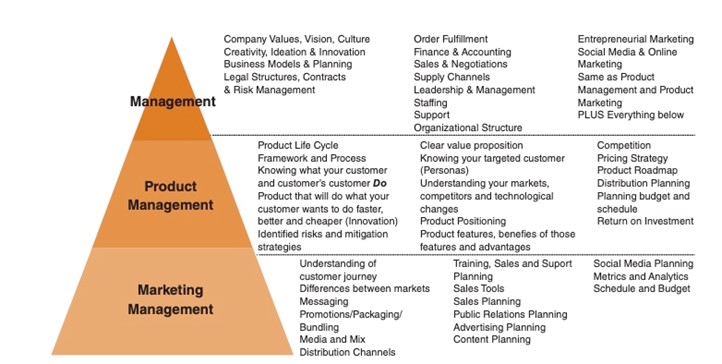
Figure 1.1.7 Product management competencies

Case Study
Organizational Competency: Kodak
The case of Kodak comes to mind, with their failure to transition from chemical to digital technology for the capture, storage and presentation of images. In less than 10 years, the number one player in the photography market is now no longer relevant.
Sometimes, organizations think that if they just pick a big market and go after it, everything would be just fine. But what they need is to have the right product for the market at that time.
Kodak thought they were in the ‘film market’, the market whereby film is consumed for still and moving images. But the market was really the capture, storage and display of images.
Obviously, they did not have the organizational and individual competencies they needed to cross over in the digital transformation.
5. Systems and Tools
Do you have the tools and systems in place to support the product lifecycle and improve productivity?
Managers of products need systems and tools that enable them to:
Find what they are looking for when they are looking for it
Enable coordination across departments
Provide management visibility into the status of each product within its product lifecycle
Notify contributors to the management of the product about what they need to do and when
Archive previous product’s information, so things that went well can be replicated and those that did not go well is not repeated
Most managers of product use tools designed for other purposes—not for the products themselves. I have conducted some primary market research with 60 product managers and product marketing managers, the result of which has been implemented in a tool for managing the product lifecycle, called Productize.
In case you do not have a product or service of your own to use, then you can choose to use Productize.
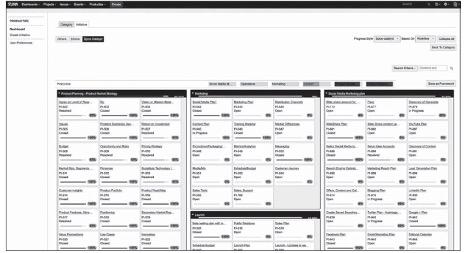
The Productize dashboard showing task status
It Is Not Just the Technology
Some people think that if they simply invent a technology, like a better mousetrap, the world will beat a path to their door.
The technology is part of the product
strategy which could enable the product to do what people and organizations want to do faster, cheaper, and better. Here is why thinking that it’s just the technology is not quite thinking through everything that is necessary for product success.
The notion that all you need to be successful is to have technology has its roots in modern industrial society, starting in the 1960s when the US space agency, the National Aeronautics and Space Administration (NASA), started trying to justify its expenditures, in part, on the basis of ‘technology transfer’.
I know, I was there. I testified before the US Congress, as a college sophomore, in support of funding the space shuttle, and some of the arguments I used were the benefits of technology transfer. It was and is still to a great extent believed that technology was some kind of magic that will make products that incorporate that technology automatically succeed. But that is not enough! The technology has to be applied to something that people and companies want to do.
The same strategy was used by Xerox PARC, but studies in the 1980s found few successes of transferring inventions from PARC to real products. Likewise, I was responsible for a short time to do the same for HP Labs, to transfer their technology to the divisions. I was not very successful because the developers of that raw technology could not explain how it helps things people and companies want to do.
It was only in those instances where that technology actually did something for people or companies, did the transfer succeed into a successful product. Ink jet printing at HP was one big success.

Case Study
Using Technology to Fulfil a Need: The Teflon Success Story
Teflon was discovered in 1938 and applied to cookware 16 years later by French engineer Marc Régoire. This technology was developed to help prevent things from sticking together and it is a good insulator. It was used in the space program and NASA promoted it as a ‘spin-off ’.
Initially, it was a technology in search of a solution, which was not really invented by NASA but promoted by NASA.
If people did not have a need or want to prevent food from sticking to their cookware, Teflon would have been just another technology solution looking for a problem.
Final Thoughts on Product Success
To succeed, a product and also a company must have a strategy, process, information, customers, employees and systems in place. It is not easy to pull all this together, but it is essential for success!
The purpose of this course is to help you understand how to plan for each of these, thus enhancing the probability of success greatly.

Problem-Solving Exercise 4

1. The addition of a RACI or DACI chart
2. The use of a common data repository
3. Using workflow management software
4. Eliminating email and spreadsheets in favor of common platforms

Course Manual 5: The History of the Management of Products
Workshop Objectives
At the end of this workshop, you will be able to:
LO1: Discuss the various organizational strategies that have influenced the way organizations conduct business today
LO2: Understand the role of Product Managers
Introduction
While many textbooks, courses, and curricula abound on the topics of management, leadership, marketing, building, and selling products, this is a unique book to focus on the product itself and its successful management, with the objective of helping you to significantly increase the odds of your product’s success, and the organization and your success too.
Throughout this book, we will use the term product to cover both products and services. What organizations create and how they enable their products to reach their customers have changed drastically today.
Today’s modern products are designed for global users. They are not developed for one country or culture, and then ‘localized’ for other markets. They are also sold through multiple channels for the customer’s ease of purchase and not focused on the manufacturer’s ease of selling or distribution. Today’s products leverage technology for customer satisfaction and support. They provide unique value through innovations as a result of observing what customers want to do and listening for new customer requirements through digital channels like social media.
It is somewhat surprising that much of this had not been done until recently. But here is why.
Organizational behavior today is impacted by the way businesses have been organized in the past (and the same process and concepts are still taught in most management schools even today). Hence, knowing where that structure came from is important before we set out to change our traditional way of doing business in favor of the new world we are in today.
Line and Matrix Organizational Structures
Businesses, up until the start of the last century, generally focused on three fundamental needs: Food, clothing, and shelter.
In the early part of the last century, there was some focus on the transportation of people and goods. Railroads became a huge industry, and new massive organizations had to be formed. The only model to copy was the military and the top-down commander-in-chief giving orders to get things done and everybody following.
What products could be built and what they would do for their customers was of little interest since the focus was on food, shelter and clothing, and, in some cases, war.
Line organizations formed with engineering, manufacturing, marketing, and personnel reporting to the CEO, as shown in Figure 1.2.1. Alfred Sloan, the Chairman of General Motors, codified business accounting principles with such things as people as liabilities and inventory as an asset. Note that these are principles that are still followed today by many MBA-trained leaders and the financial community.
In the 1930s, General Electric (GE) invented the matrix organizational structure, blending the line management concept with cross disciplines for products. By combining the vertical line organization with the horizontal staffing responsibilities, one ends up with what is called a matrix organization, as shown in Figure 1.2.2. The result is, for example, personnel (e.g., in human resources) has two bosses—their VP (say of Sales) and the head of personnel. Experience shows this structure works well only when both managers discuss with each other the tasks and priorities of the people that report to both of them.

Line organizational structure
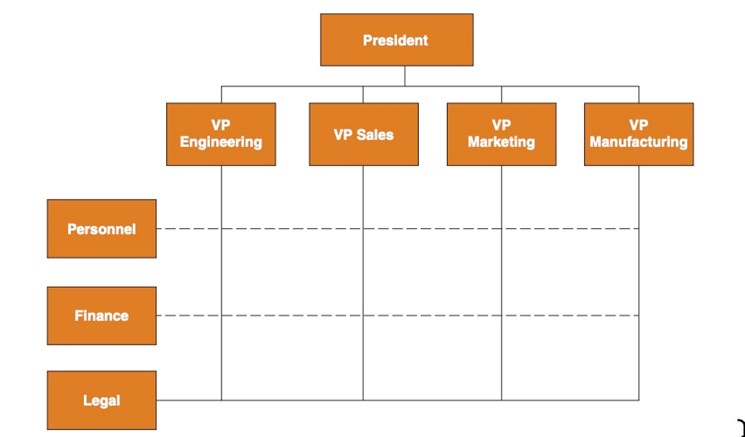
Matrix organizational structure
Also, in the 1930s, Procter and Gamble (P&G) codified the concept of brand management, focusing the responsibility and the authority around the product, and called the ones responsible for the product brand managers.

Case Study
Brand Managers: Procter and Gamble
The concept of brand managers was based on a memo written by Neil McElroy in 1931. Neil later went on to become the President of P&G and Harvard, Assistant Secretary of Defense under President Dwight Eisenhower and an advisor to Stanford University. His involvement with Stanford influenced the six founders of Hewlett-Packard (HP), including Bill Hewlett and David Packard.
Here is a summary of the responsibilities of a brand manager from that memo.
(Note: The items in bold are the responsibilities of what we call Product Managers today. The items not in bold are what Product Marketing Managers do.)
Devises a product name that is easy to pronounce, remember, recognize and translate into other languages easily.
Distinguishes the product’s position relative to the competition
Focuses on the product vs. a business function such as finance, HR, manufacturing, development, and so on.
Includes multi-divisional structure with decentralized decision-making.
Not driven by the sales force’s requests for features; instead, the product which matches into customer needs/wants is marketed to the sales force.
Full responsibility for the product’s characteristics, customer testing, pricing, sales promotion, packaging, and advertising but without the authority to require anybody to do anything.
Coordination with sales for the execution of the marketing plan (essentially a promotion plan).
Analyzes sales, develop marketing plans, and monitor using appropriate research methods with a team of market researchers and assistants.
Focuses on fast-moving consumer goods with short shelf lives and need to sell in large quantities.
Be tactical and reactive, observe competitor, channel activity and sales and margin trends.
It is interesting to note that since the 1930s, every president of P&G came from a brand management background.
HP adopted principles from P&G’s brand management to the management of the product. They also included GE’s matrix management, which in part influenced HP’s values (called the HP Way), such as teamwork and flexibility. The only significant difference between P&G’s brand managers and HP’s Product Managers is that the Product Manager lost authority over the budget used for tools such as market research and marketing. Nevertheless, the result was that HP grew 20% a year for 50 years. I cannot think of a single other company that has enjoyed such success for such a long time. HP followed the principles of decentralized management, company values and staying close to the customer.
Instead of concentrating authority at the highest levels of the organization, like in the military or railroads, HP decentralized and drove decision-making to the lowest levels of the organization that was closest to the customer. The company developed, adapted and practiced a set of values that guided decision-making at all levels.
Various Approaches to Products
Let us see some major approaches to products followed over the years.
Until the 1990s, many companies were marketing-driven (i.e., using the power of marketing to entice customers to buy their products). Or they were engineering/technology-driven, where the key organizational focus was on technology or engineering.
The concept that the product must do what the customer needs and wants to do was somewhat ignored as a primary function in organizational bureaucracy.
Technology-Driven Strategies
On and off since the 1950s, some companies were technology driven, that is, trying to find a market for their technology. Some assumed that if they built a better mousetrap, the world would beat a path to their door.
The National Aeronautics and Space Administration (NASA) talked about technology transfer, as did similar attempts at technology transfer from Xerox’s PARC labs and HP Labs to other parts of their company. This notion of technology transfer assumed, of course, that marketing would make customers aware of the better mousetrap and that the distribution, support, and service infrastructures were in place.
However, for 60% of the time or more (as discussed below) that was not the case. In spite of this, some venture capitalists today insist that if a product does not have a unique and protected technology, they cannot fund it.
Manufacturing-Driven Strategies
Both focuses of marketing or engineering/technology driven assumed that product actually did what customers wanted and needed to do. Then, in the 1970s and 1980s, a few companies (like General Motors and IBM) became manufacturing driven with equal levels of long-term failure.
By manufacturing driven, I mean that decisions were made based primarily on the things of concern to the manufacturing operation, as discussed below.

Case Study
Manufacturing-Driven Strategies: General Motors and IBM in the 1970s and 1980s, General Motors and IBM shifted focus to being ‘manufacturing driven’.
IBM thought they could beat all other typewriter manufacturers because they could build
their Selectric typewriter cheaper and better than typewriters from the competition in their Lexington, Kentucky facility. In part, they thought they were in the ‘typewriter’ business and ignored the multiple startups creating word processing machines. It was only after Wang, Xerox and others started cannibalizing the Selectric typewriter did they realize the error in strategy.
General Motors also thought they could take components from their top-of-the-line Cadillac and put them in the bottom-of-the-line Chevy. But customers wanted to know why they should pay USD 50,000 for a Caddy when they can get the same powertrain in a USD 10,000 Chevy. Sales lagged and the Japanese car companies ate GM’s lunch for this reason and more.
The more a company focuses on what their product does for their customer, the greater the chances for success.
Emergence of Product Managers and/ or Product Marketing Managers
Since the 1980s, the field of managing products with the use of a point person—the Product Manager—started to spread from HP to Apple, to dozens of startups, to thousands of companies today. It is today a generally accepted way of doing business, particularly in Silicon Valley and surrounding areas.
It is spreading very rapidly to many other areas of the world, partly due to what has been called pCamps founded and organized by Rich Mironov with help from Luke Hohmann and Scott Gilbert. These pCamps started in 2008, when hundreds of Product Managers come together annually in dozens of cities worldwide to exchange ideas and best practices.
Camps have occurred in parts of Asia, Australia and Europe, with the concept that management of products is important.
Today, the role of Product Managers or Product Marketing Managers go by over 250 titles, but their competencies, responsibilities and authorities are quite similar—whether they are the founder of a startup, a divisional general manager or an IT business analyst.
Product Managers and Product Marketing Managers are the ones that provide the glue to pull together the customer needs with development, manufacturing, marketing, sales, support, service, operations, finance, and the CXOs.
Management of products through their entire lifecycle will become more and more important in the future. That includes not only conceiving the product for what it will do for people and organizations and its marketing and sales, which has historically been about all that a company would do. It now also includes managing the entire customer journey discussed later, and also includes support, service, and operations for such things as ordering and fulfillment. It also includes the end of life of the product, such that the hard-won customers stay loyal to the brand.
Managing the entire lifecycle is taking on greater and greater importance for one simple reason—if a company fails to manage its products well, it will stumble or fail. One needs to only point to the fact, based on my count, that about 35% of the companies listed on the 1965 Fortune 500 list have either gone out of business, been acquired or are a fraction of themselves.
That is why it is not surprising to learn that somewhere north of 40% of products fail in the marketplace. Companies are not managing their product lifecycles as well as they can.
Given that over USD 1.6 trillion was spent in 2014 on product development, then somewhere between USD 0.5 and USD 1 trillion was wasted in 2014, and this number is increasing because organizations are spending more and more on product development each year.
This incredible waste of resources is because we are not focusing on the product and are specifically failing to build products that do what customers need and want to do.
Customer Journey Today

Today, with an increased focus on the customer journey from knowing that they have a need/ want through deciding what they are going to buy, to its implementation and to getting out of the product their intended value, plus the digital revolution, the time is ripe to focus on the management of the product to enhance the possibilities of success. We will discuss the customer journey in detail later.
The result of a focused product management framework will be a substantial reduction in waste on products that should not have been allowed to see the light of day in the first place.
Conclusion
In this session, you have learned that the only long-term focus for success is what the product does for the customer. Organizations should focus on product success through their organizational structure. The customer journey and the digital revolution will impact success more and more in the future.

Problem-Solving Exercise 5

Course Manual 6: What Distinguishes Products and Services?
SESSION OBJECTIVES
At the end of this workshop, you will be able to:
LO1: Distinguish between products and services
Products and Services
A product is a tangible entity that satisfies a want or need. It could be something that has been made to be sold. You can touch it. It is considered inventory and might have value if it can be sold. You can feel it. It is usually measured in units.
Merchandise, raw materials, finished goods, commodities, project deliverables, and insurance policies are all products. Recently, the concept of non-physical, intangible data products has emerged as virtual data goods, which are virtual products. You cannot touch them, but they are there. JPG, MP3, video files, and in the future, more and more 3D representations or Star Trek’s Hologram are other examples of products.
For-profit organizations, which are typically corporations, manufacture and/or develop products for sale.
A service is an intangible product.
You cannot touch it, but it is there, and it is frequently connected to a product as support and service. It is also the action of helping. Government entities, associations, and nonprofit agencies deliver services, and so do companies.
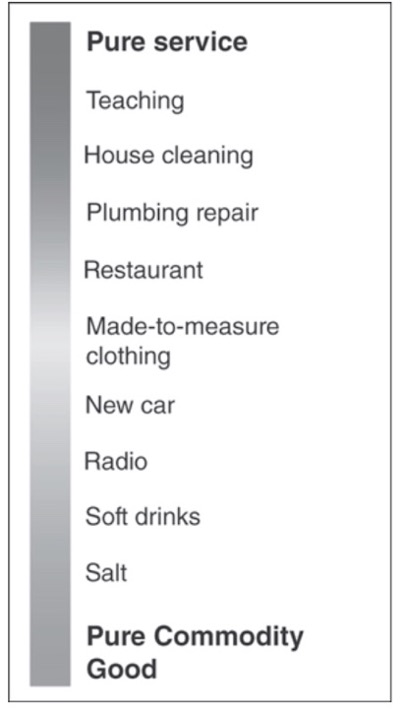
Examples of services
In these workshops, when we say product, we also include service. These two terms are interchangeable here.
Note that both products and services are considered in terms of their value to the user and/ or owner.
But pricing a product is different from pricing a service.
A service is measured and/or cost typically in terms of time or effort, like the number of person-hours expended and at an hourly rate. Products, however, could be priced based on a number of factors such as the value it brings to the customer; how much it costs to manufacture; how it compares to the competition, and it should always be done in consideration of the price goals such as market penetration, skimming and so on.
Products usually can be organized by departments, as Amazon does (Books, Automotive, Movies, and so on), and then by function or brand. Many have unique make, model, and version numbers. They can also be organized by the association, such as related functions, the same kind of customers, the same distribution, or price range.
North American Free Trade Agreement or NAFTA is working on a product classification system, building on the North American Industry Classification System (NAICS), as shown in the Figure.
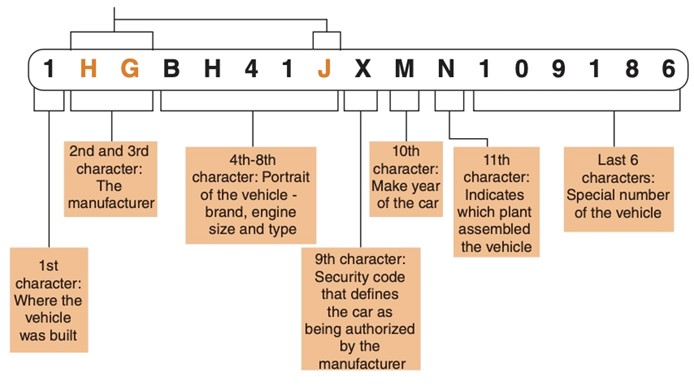
Classification of a car as an example of a product
Some products, such as cars, will have specific make, model and variation with a model number. They may have options like color, interior, trim and more, and down to a specific car which has a serial number and a VIN or Vehicle Identification Number.
More about Services
Services may be owned, rented, or leased. They sometimes have performance guarantees. IBM, for example, might sell you a service such as managing your servers, private cloud, storage, and network devices, backup, security, databases, middleware, and groupware.
Governments provide public services which are paid for with taxes or fees.
Some services are generally perishable, such as an event ticket, airplane ticket, room or car rental. If it is not used when it becomes available, it is worthless afterward. It cannot become inventory, and thus in Alfred Sloan’s accounting system used today, it cannot become an asset.
A service being performed will tend to be different based on who is performing them, where it is being done and what is being done.
If more services organizations, including the governments, would treat their services more like products, in my opinion, the world would be a better place.
Moving Your Business from Services to Product: What It takes!
Many who are in a services environment have asked me what it is they need to know to transition and be successful in products. These questions have come to me from much of Asia, where hundreds of thousands of people experience in services have, but few have the experience and the competencies to successfully manage products.
However, if a service could be productized, then the builder can leverage the profits from the product and get repeat sales.
Many know that if they can get into products, they can leverage their efforts and be even more successful. Especially if they have some domain expertise, they can transition from services to a product approach.
Shifting from Services to Products
In case of service, in most scenarios, an organization will provide the services based on customer requirement. However, in a product scenario, the current customer requirement, the product configuration, and what all will make the product successful is to be determined by the organization. The value to a company to shift from services to product is a straightforward return on investment (ROI) evaluation. First, you calculate the services ROI, and then do the same for having a product. Product ROI is a bit more difficult because you have to assume you are building something that will be purchased, thus necessitating a sales forecast.
In India, IT giant Infosys started to transition part of their service business to products, as did Cognizant. In both cases, it is driven by the possibility of a greater ROI and increasing price and competition from countries that have a lower wage requirement. Hence the shift from ser- vices orientation to product orientation is justified.
The shift from a service approach to a product approach has also been true for those in- individuals who want to strike out on their own, be entrepreneurial, and build their own business. It has become much easier, especially today, to become a product company than a services company, given the low-cost, portable computers, smartphones, powerful programming languages and cloud-based computing. The advent of the Internet of Things and all of its ‘still to be discovered’ opportunities enable whole new businesses that will digitally disrupt how things were done in the past and also open doors for more products.
But, building product-oriented businesses and being successful requires gaining some key competencies.
Let us consider some service provider competencies, which are listed below and are still valuable necessities:
• Staffing
• Team Management
• Manage Team Productivity
• Planning
• Project Management
• Resource Management
• Development Tools Expertise
• Project Review
5. Design and Conduct Training
6. Technical Support
Let’s take a look at how these skills are applied in a real-world environment and how they differ in service and product environments.
In Services Environment
Suppose you have worked on a new software development or maintenance project involving 5–20 team members.
Here, you will start with project planning after gathering specific client requirements. The client will readily give you the requirements, and perhaps your industry or business analyst will focus on a requirements document.
You will then break down the total work and allocate chunks to team members and track progress. Here, you are somewhat performing the tasks of a project manager.
You ensure access to IT tools and resources needed to complete assigned tasks.
Whenever you find skill gaps, you bring necessary training. You will also track project health, including productivity, using metrics to deliver on time and on budget. After project delivery, you and your team provide necessary technical support till client can use the software comfortably.
In Product Environment
If you picture yourself in a similar role in a product company, you will have many surprises.
There is no one to give you exact requirements of the product. You do not know what the market would like, as features and user experience. You have to imagine, like a movie director, every scene and innovate.
You need to constantly track how your competitors solve the problem that your product is trying to solve in better and cheaper ways. You worry about communicating product benefit messages to stakeholders. You look at extensive testing of product and get initial beta feedback.
You network with several internal and external stakeholders to keep abreast of changes and newer ideas. You will look at the roadmap of your product capabilities and add-on services to help your customers adopt your product quickly.
Therefore, the new competencies that need to be developed are:
Fundamentals: Decision Making, Customer Journey, Product Lifecycle Management
Product Market Strategy: Innovation, Value Proposition, Market Segmentation and Opportunity, Personas, Market and Competitive Research, Product Positioning, Road mapping, Portfolio Management, SWOT Analysis, Distribution Channels, Training, Pricing, Costing, Data Analysis, Forecasting, Budgeting, Finance, Metrics, Intellectual Property
Marketing: 11Ps, Social Media, Media Mix, Planning, Messaging, Content, Packaging, Bundling, Promotions, Marketing Communications, Timing, Budgeting, Metrics
Business Skills: Leading teams, Persuasive Communications, Impactful Presentations, Networking, Negotiation, Mediation, Program Management
User Experience and Interface Management
Product Engineering: Prioritization, Kano Analysis, Research and Development, Beta Testing, Agile Management
Product Support: Documentation
All these competencies are discussed in future workshops.
Conclusion
A product is tangible and is also considered an asset, and a service is intangible. They can be treated the same, and they both must have a value proposition.

Problem-Solving Exercise 6
1. Netflix is a service that can be subscribed to.
2. Netflix is a product. they develop and produce their own digital entertainment products in the form of streaming series and movies.
Netflix is both a service and a product depending on your relationship. For content producers, Netflix is a platform for their work.
1. What are your thoughts on products and services?
2. Is Netflix a product or service?
3. Do you think Netflix should stay as a service to survive in the competitive market?
4. Is it safe to be a product company which has better visibility?
5. What is your recommendation?

Course Manual 7: Business Model and Canvas
SESSION OBJECTIVES
At the end of this Workshop, you will be able to:
LO1: Describe a business model
LO2: Discuss a few popular types of business models
LO3: Use tools such as BMC and PMSC to document a business model
Business Model
So far, we have discussed the six SPICES of product success, the history of successfully managing products from the agricultural era to the industrial era, to the information age, to today. We also know that services are intangible products and should be pretty much treated the same as products in today’s business environment.
A business model is a description of means and methods a firm employs to earn the revenue projected in its plans. It views the business as a system and answers the question: “How are we going to make money to survive and grow?”
It consists of four parts:
• Value Proposition: A description of innovation, service, or feature intended to make a company or product attractive to customers. These should map directly into satisfying the prospective customer’s unmet needs. This is discussed in detail in the workshop on Value Proposition. The value the product or service provides to the prospective customer is key to the potential success of the product.
• Organizational Structure: This includes the roles, competencies, authorities, responsibilities, and reporting relationships discussed in detail in the workship: What Makes a Customer-Centric Organization? By role, we mean who does what and what activities they have the authority and/or responsibility of. Successful implementation of the business model depends on the organizational structure, authorities, responsibilities, and relationships in the organization and with its partners.
This covers the organization and product’s revenue and costs. It may include financial metrics also.
• Organizational Relationships: This includes the relationships within the organization and outside with its channels and partners, as discussed in the workshop, Session Channels, Partners, and Affiliates.
All of the above should have the goal of creating value.
If one adds elements such as human resources, staffing, insurance, facilities, manufacturing, operations, legal, purchasing, order fulfillment and supply channels to the Product Market, then one would have a complete business model.
Once you have completed these two Modules, you will have a clear idea of how to develop a holistic business model.
Evolution of Business Models
The concept of business models started in the early 1900s and included such models as selling the core product cheap and making money off the refills, such as in Gillette razor blades. The idea is to get distribution for the part that makes the implementation possible and then make money off the consumable part of the whole product.
Other business models could be:
• Franchises like that of McDonald’s
• Lowest price discount department stores like Walmart
• Package delivery logistics like FedEx
• Specialty department stores like Home Depot
• Movie distribution like Blockbuster and its replacement Netflix
• Online ordering of custom computers like Dell
• Discount travel like Southwest
• Online retailing of almost everything like Amazon, online classifieds like eBay
• Total customer experience as in Apple
Products and services built on popular platforms like Amazon Web Services, Microsoft’s Azure, Facebook, IBM’s Watson, and so forth are becoming increasingly popular. These services provide a foundation that is shared by many customers. This enables the cost of entry into a market to be significantly reduced. Crowdsourcing and distribution are now possible because of the Internet.
A particularly good model of how a business model comes together is the one developed by Dr. Michael Lim in 2010, as shown in Figure 1.4.1.
Some more examples of business models are:
• Transactional, where a product is built and sold.
• Bricks and Clicks, where there is an integration between buying online and pick up of your product at the local store. This is being extended these days to include delivery.
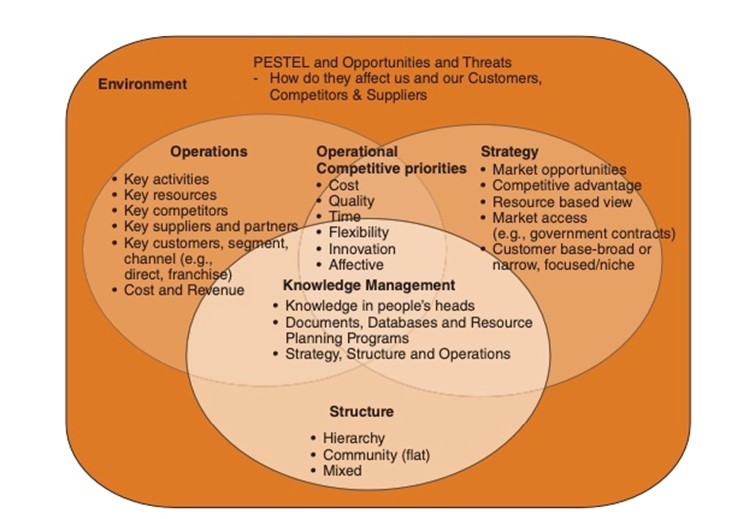
Dr. Michael Lim’s business model development
Shared resource model, where companies band together to share base resources. A platform model is an example.
• Elimination of the distributor, for example, a winery using the Internet for selling direct.
• Direct sales, using a network of freelance sales agents.
• Value-added reseller, where a product is taken and value added to it.
• Franchises, where for a fee, someone can open a store with the brand and detailed policy manuals.
• Subscription or recurring, a model which has become more and more popular lately in place of an outright purchase. Customers pay a periodic fee that does not end. Customers set it at regular intervals on automatic payment and forget they are paying it all the time. Cell phone and cable TV plans are common today, whereby customers are paying hundreds of dollars per month for phone and TV service which for TV was free, and just tens of dollars per month for phone in the United States 10 years ago.
• Freemium, where something is given for free with the potential of revenue from an upsell.
• Pay what you feel like.
• Loyalty plans.
• Multi-level, where salespeople build a pyramid and gain commissions off the people in their recruited organization. Such schemes seldom pay or are often illegal.
• Monopolistic, where the product or service cannot be gotten anywhere else.
• Pyramid, where money is taken from the next guy and is used to pay the previous guy, which again is an illegal model.
One of the key outcomes of a business model is the company’s brand and the company’s promise. As the brand is built, it becomes equity for the company.
Sometimes, people call a financial model consisting of revenue and expenses, over time, a business model.
Elements of a Business Plan
A business plan has the following elements:
• Executive Summary: This could be the business canvas described later in the session
• Company Description: What the company does, how it is different, the target market
• Market and Competitive Analysis
• Organizational Structure and Management Team
• Products and/or Services Offered, including their value and lifecycle
• Marketing and Sales Plan
• Funding Needs and Use of Funds
• Financial Projections
You will find templates and exercises to develop each of these as a part of your book support resources.
Tools for Documenting Business Model
Upon completion of product market research, various tools can be used to document the business model and associated strategies. The following section lists two popular models.
Business Model Canvas
In recent years the concept of the Business Canvas has been developed and promoted. It provides a one-page summary of all of the key areas in the Business Plan. The Figure shows a sample business canvas.
A business canvas collapses a lengthy business plan into all the key points on one page. It is a good presentation tool to get buy-in from the executive and product team. However, it should not be the starting point but the summarization of the larger plan.
Often, the problem with working with such business canvases is that the authors are encouraged to start writing with it and only on the canvas. Unfortunately, one ends up with just top-of-the-mind entries, as one is forced to fill in the blanks. Critical research and thinking are thus reduced significantly and is not the key focus—which, in turn, may reduce the chances of success.
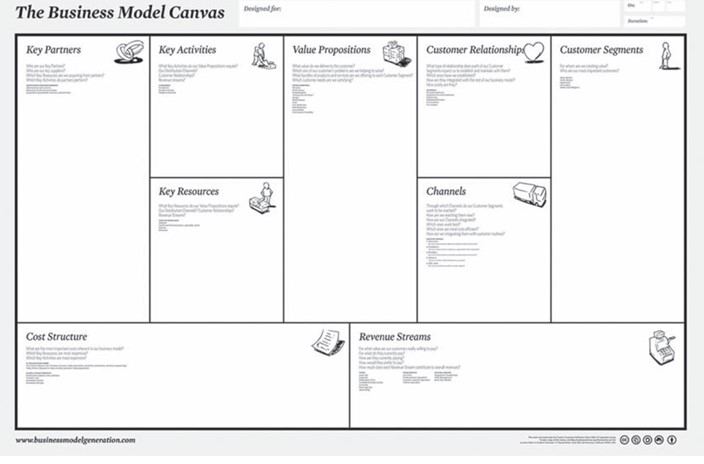
Business Model Canvas by Strategyzer
It is far better to spend a bit of time thinking, researching, and writing deeply on each aspect of the business model, and then reducing the research to pithy and unique entries in the canvas.
Different versions of the business canvas are used in the lean startup method of starting a business.
One of the big mistakes startups and entrepreneurs make is trying to start with writing the canvas before the time and effort is spent on the plan itself. The canvas, to be successful, should be a summary of all of the study, research and work that came before, not the other way round.
Product Market Strategy Canvas
A major contributor to the business canvas is the product market strategy. If one takes the time to do the product market strategy, then the canvas comes together easily and quickly.
The result of pulling together a marketing plan can be a marketing canvas, as shown in the Figure.
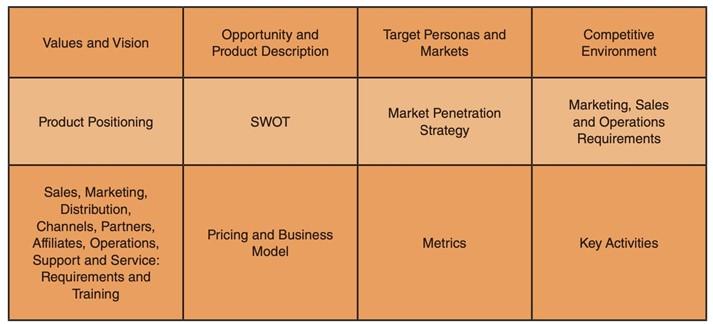
A product market strategy canvas © Spice Catalyst 2014
Conclusion
A business model provides a framework for the various means and methods an organization may adopt to earn the revenue as per plans.

Problem-Solving Exercise 7

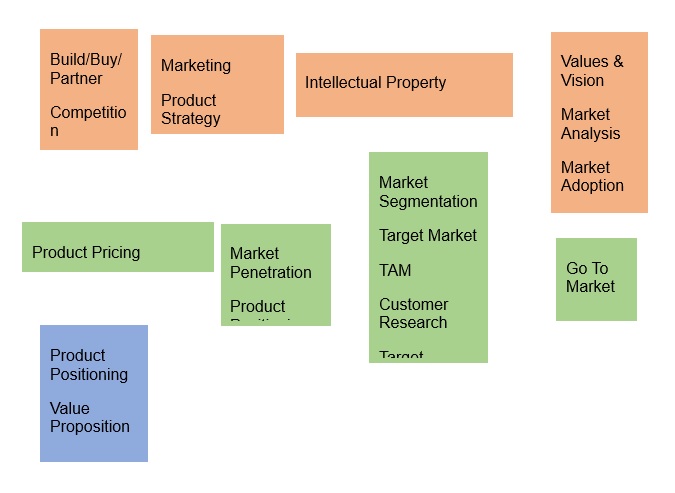

Course Manual 8: Product Management Lifecycle and Framework
Workshop Objectives
At the end of this workshop, you will be able to:
LO1: Identify the pre-requisites for building a product management framework
LO2: Discuss various aspects of an agile product management framework
LO3: Discuss various stages in a product management framework
LO4: List various requirements for creating insanely great customers
Why a Framework?
Marshall McLuhan once said, “The medium is the message.” I have a corollary—the process is the product.
Frameworks have started being used only recently to the management of products, based on software architecture frameworks. Some companies have tried to adopt frameworks from manufacturing’s lean or just-in-time architecture. Others have based their framework on the Six Sigma framework for quality assurance. Additionally, others have recently adopted agile framework, replacing waterfall or Toll-gate/Stage-gate processes.
The advantage of having an agreed-upon framework is that everybody in the organization knows what needs to be done and when it needs to be done. The disadvantage of a framework is picking the wrong one. If it does not match into the vision, values and culture of the company, the framework will contribute to failure. For example, if the company’s value is to build quality products, but the process drives getting the product out quickly to get sales and compromises on quality, there may be a conflict caused because of the differences between the two priorities.

Case Study
Ineffective Process: Game Retailer
A major retailer of video games had one, heavy framework for all decision-making. That framework, which stemmed from the entrepreneurial beginnings of the company, called for an annual meeting each November, whereby senior staff would gather and make all decisions for the next year. The result was that a large number of small decisions were delayed until that annual meeting. Meanwhile, the competition and the market were changing much faster than the annual decision-making process could take into accommodation. Decisions were delayed and the company faltered.
Ineffective Process: Councils at HP
Another example is Hewlett-Packard in the early 1990s. After it was initiated in 1938, HP grew about 20% every year up until the mid-1990s—a pretty good record for 50 years! According to co-founder of HP, David Packard, in his book (The HP Way), the company had formed councils consisting of people from corporate as well as multiple divisions in the mid 1990s to work across the divisions. Decision-making then moved up from the divisions to the councils, which was contrary to HP’s management philosophy of driving decision-making as close to the customer as possible. The result was that HP’s growth stalled, until the councils were eliminated.
Cisco also experimented with councils in the 2000s and had a similar result, until they too reduced these.
Councils are good for coordination between product lines but should be avoided for decision-making because some council members could be making decisions they do not or should not have the authority to make. For example, remember the South African bank story discussed in the Session What Must Products Have to Succeed?
To be successful in today’s market and with today’s technology, a framework needs to take into account:
1. The Digital Transformation: Digital technology is transforming just about everything a company does and how their customers do things. This needs to be accounted for in the process.
2. The Customer Journey: Companies have to pay attention to the entire customer journey, not just the point in time when they purchase the product or service.
3. Enterprise Agile: We hear about more and more companies becoming successful, beating their competition with agile development. The same agile can be used in just about every other business function. It enables flexibility and rapid response to changing market conditions.
4. Innovation: Companies have to figure out quickly how to help their customers do things better, faster and less expensively.
5. Social Media: Marketing is rapidly shifting from push to pull, so companies and marketing organizations need to adjust and incorporate this strategy into their frameworks. 6. Messaging: This is to be derived from the value propositions by persona and from product positioning (which incorporates competitive and market research) and is to be done before the product is developed. Many organizations do it the other way around by starting with, for example, the sales pitch and then trying to figure out whom the customer is supposed to be. This approach adds to or even leads to product failure.
7. End of Life: Companies cannot ignore maintaining customer loyalty when they bring a product to its end of life. Hence, this must be considered in the framework.
8. Operations such as Support/Service/Training: Customer support, service, and training are integral parts of customer satisfaction today.
Agile Product Management Lifecycle Framework
The Figure shows the Agile Product Management Lifecycle framework, which is the new framework that you will learn about in this book and should be able to implement for your product.
Overriding the framework is the process of implementing it. In the following sections, we will discuss different aspects of this process in detail.
An agile framework process is one where the following steps are followed:
1. Execute strategy in small, time-bound increments
2. Validate that the path is correct
3. Refine quickly
4. Update
5. Communicate what is going on
In the agile management phase, iterations are done in the product planning, developing, validating the product in the marketplace and with customers, for launching the product and in sustaining marketing.
The Waterfall Process is another framework that is quite the opposite of the agile process. A waterfall process is shown in the Figure.
In this process, each of the stages begins when the previous stage is completed.
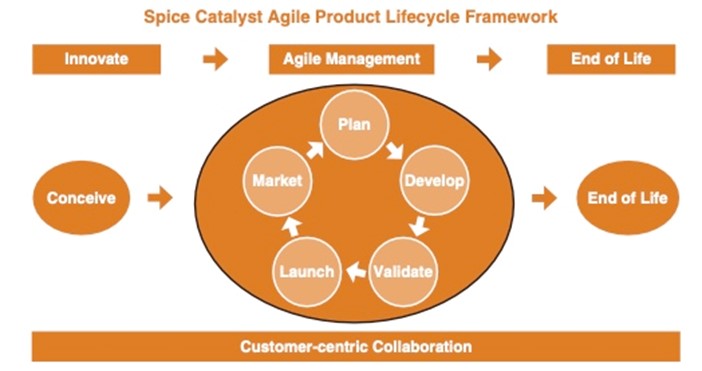
The Agile Product Management Lifecycle Framework
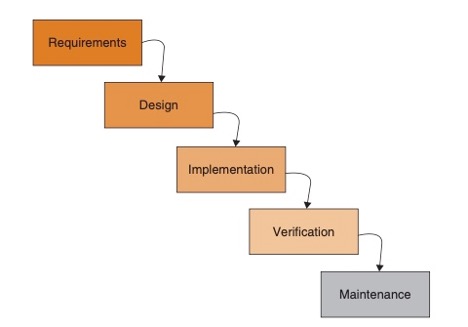
FIGURE 1.5.3 The waterfall process
The problem with a waterfall process, in today’s always-on, rapidly changing market and technology environment is that typically a waterfall-based product management lifecycle cannot keep up with a competition that is agile. Note that agile is essentially waterfall, but with quicker implementation in smaller, quickly executed steps or scrums.
The idea of innovation and agility does not stop at the ideation or product planning stage. After completing the product market strategy, which is actually the product planning stage, innovation is done also in an agile fashion.

Case Study
Agile Process: Smartphones
A good example to explain the agile process is the smartphone business. Apple employs agile processes for its integrated hardware and software development. Every Wednesday, Steve Jobs and Jony Ive, Apple’s design chief, would get together and look at that week’s mockups. They would hold them, touch them, play with them and share feedback. Then, Ive’s team would go off and, based on that feedback, make changes for review at the future meeting.
Given what Apple has been doing since then, it is probably a fair guess that they continue to follow this process even today. Apple has refined its agile process to the point whereby they are regularly introducing new hardware and software that work together. They are doing it so fast that the competition consisting of Blackberry, Nokia, Motorola, Samsung, Microsoft, and others cannot keep up. The cell phone business, which had a product cycle of 18 months or more, is now annually revised. Many modify the agile principles to fit their needs by stepping back and identifying past development issues and then asking: ‘What if we change something, and what might be its impact?’
Apple’s agile product lifecycle process gives them a significant competitive advantage. They are able to run faster than the competition.
The objective of the innovation is not just to generate ideas. The objective is to come up with ways that the product or service can help accomplish the customer’s desired outcomes, solve their problems, and satisfy their wants and needs faster, better and at a lower cost.
In some markets, like luxury goods, the customer wants the style of a product that makes them feel better about themselves and/or makes others notice and/or admire them. For insurance policies, the customer wants freedom from worry and so forth. We will cover these basics of what people want to do in more detail in the first several sessions in Module 2.
Stages in the Product Management Lifecycle
Now, let us discuss key aspects of the product management framework depicted earlier.
Stage 1: Product Planning Stage
(Product Market Strategy)
One starts the product planning process or what we call the development of the product market strategy, with an understanding of exactly what people do. Your understanding of what they do is then validated with interviews and surveys. From this information, one can then write problem scenarios or use cases to describe what your customer’s expected outcomes might be.
Note:
• Market: A place where a product or service is purchased
• Marketing: The act of bringing a product to the market
How much of this planning is done and exactly in what order will depend on the market you are in and your organization’s product approach. For example, from an organizational standpoint, Apple is so large these days that it first researches just very large markets of what people do—for phones, watches, mobile media consumption (iPad), music, payments and perhaps someday cars/transportation (or at least the inside of cars) and others.
When Apple started, it was because Steve Wozniak wanted a computer. But one could argue the market for personal computers was zero at that time. And it was. However, they targeted the market for computing, which was huge. To set themselves off from others, they did not call their Apple // a calculating machine, which was a small market at that time, beginning to replace electronic calculators which was a large market. They called the Apple // The Personal Computer and later, after IBM entered the market, they called it The Most Personal Computer, to go after the larger personal computing market. Steve Job’s vision was one computer on every desk.
So, even if you are a small organization, you can figure out what your prospective customers do and then identify what market that is in. If you are large, then you need to start with a large market of doers.
Stage 2: Developing and Validating
As discussed before, there are two primary ways to develop and validate a product: Waterfall and Agile.
Waterfall Process
In the waterfall development process, the product is developed with all of the features requested and defined in what is sometimes called the PRD or Product Requirements Document, followed by development and testing.

Waterfall process of development
After most of the development is completed, the product is tested inside the company in what is called the alpha test. After the product is almost completed, it is then taken out to customers to be tested in what is called a beta test. Those customers try it out and provide feedback. Hopefully. This is because sometimes beta testers do not provide feedback in a timely fashion, which can cause problems, as described below:
• Few know how long the development will take and its associated cost.
It is not sure whether the testing is done either at the alpha or beta level reflect the targeted customer.
• Even if the tests come back with a whole host of problems, management may ship the product anyway out of financial pressures.

Case Study
Waterfall Process: Video F/X
When I joined Digital F/X as the second Product Manager for Video F/X, it was already in testing. As I had done earlier in my career at Apple the first thing I did was to go out and talk to the customers. I wanted to know what they thought about the product, how they were using it and who they were. As I mentioned earlier,
the company had targeted Macintosh users, but I found almost all the beta users were video professionals.
Very few of the beta testers were using it. I asked why. They said its primary function of controlling the tape decks did not work or was unreliable. Being small video post-production houses, they did not have the time to fool around and try to get it to work. The result was we got little feedback, and management ordered the product to ship (just before I got to the company), and the support and service department were overwhelmed after shipping a product that seemed to work only sometimes.
Agile Process

The agile process
While agile scrum has been typically used in the software industry only, as explained in the Apple example mentioned earlier, and now with 3D printers available, this process is today increasingly being used for hardware, too.
In the agile process, stories involving personas and what they do are written and passed on to development. Then, at frequent intervals, the product is validated, and feedback is given to those writing the stories and those doing the development. This approach enables problems to be spotted early on and fixed before it is too late.
Stories that are properly organized and prioritized can easily be used instead of the laborious and lengthy time it takes to create a PRD. In some cases, a PRD might not even be necessary since its primary components are the stories.
Stage 3: Product Launch
One cannot do an effective product launch without the primary components of the marketing plan first being in place. A launch is treated as an event. It is like a sustaining marketing plan with many of the same elements but is of shorter length and greater intensity.
One only gets to introduce a product to a market just once, so it has to be done right.

Case Study
Ineffective Launch: Rain-X
I live in an area of Silicon Valley where the water is hard. It measures 220 parts per million on my TSP meter. When I wash my car, if I do not wipe it off, little spots form when the car dries.
One day, I saw a TV commercial for a new car wash detergent from Rain-X. I knew about Rain-X because I have used its windshield coating to apply to my car’s windshield and when it rains, the water just streams off. The advertisement specified that the new car wash detergent was available at any local Ace Hardware store.
So, I went down to my local Ace Hardware store to pick up my bottle of Rain-X. The product was not on the shelf as the TV commercial had mentioned and sold me on getting. I asked the clerk about it. The clerk said they never heard of that product. I asked if we could ask the manager about it. We tracked the manager down, and she did not know about it either. Rain-X had apparently launched the product without ensuring it was on the shelf and without training its distribution channel—not a good use of resources!
Definitely not a way to ensure product success.
The result was that I wasted 45 minutes of my life and the Rain-X brand took a beating. I thought: Rain-X runs advertisements for products that are not in distribution. Next time I see an advertisement from Rain-X, I may either ignore it or just wait for a long time to buy it, which will not help sales for their next product launch.
Primarily, all the elements of the product’s market strategy need to be completed and updated to the point in time planned for the product’s launch.
The elements of the marketing plan needed for launch are:
• Understanding of the customer journey
• Knowledge of the differences between targeted markets, for example, United States vs India
• Writing of product messages
• Promotions, packaging and bundles defined
• Media selected and its mix
• Distribution channels in place or in progress
• Training materials for sales, support and channels
• Sales plan
• Public relations plan
• Advertising plan
• Content plan
• Social media plan
• Identification of metrics that will define success
• Collection of analytics and analysis plan
The elements of operations that need to be in place before launch are:
• Training completed or in progress for sales, support and channels
• Support plan
• Service plan
• Order fulfillment plan
• Supply channel plan
If all of the things outlined above are not in place, then the risk of product failure is enhanced.
Stage 4: Marketing
Marketing begins when all of the plans mentioned above are implemented.
Stage 5: End of Life
The product management lifecycle process ends with an End of Life plan that should protect your customer’s investment in your product and their loyalty to you. If you end a product’s life with no or little consideration of the fact that your customers have invested in your product and, as result, are loyal to you, then you have a major problem.
For example, when you offer another product to that customer in the future, they will probably have substantial questions about whether they will get the short end of a stick or not. With a bad taste in their mouth, they may never buy another product from your company ever again.
When working on a product line, you would also need to pull together an End of Life plan, which would protect the investments and loyalties of your customers, partners, distribution channels and developers.
Key Idea: Be Customer Centric and Collaborate
The overall objective of the agile product management framework is to be customer-centric and to collaborate with your customers, to create insanely great products to be delivered to your customers.

Case Study
Lack of Customer Centricity: Video F/X
We already discussed the Video F/X example. After about a year:
• The Video F/X product had only a 70% customer satisfaction rating. That is very low. • The recently introduced Video F/X Plus product was in beta testing and it was not working. This was when the ship date was just two weeks away.
• Owners were calling to say that their clients just walked out of their post-production session because the Video F/X was not working, and their bankers wanted to know when they were going to pay their USD 700 monthly lease payment.
• The VP of engineering and VP of Sales/Marketing got into a major disagreement and blame game. The president of the company asked me to write a market research study on the US Desktop Video Market to be presented at the next board meeting in two weeks. I clearly explained that there was no time to carry out such extensive research.
The next day, the VP of Marketing, who used to be Apple Macintosh’s operating system marketing manager, fired me. It was a mercy killing. My entire business perspective, which included the values of HP and Apple, was to always take the customer’s point of view. But this was clearly not the case in this organization, and so I was happy to be out of there.
The company went out of business about a year later.
Dennis Lee and I subsequently wrote the market research report called US Desktop Video Markets, published by Frost and Sullivan. It turned out to be 700 pages in length and took two years to research and write. So, not only would the two-week market research study have been inadequate, but it was also impossible to do in that short period of time.
To have long-term success, a company has to be customer centric. Everybody in the organization, as it is done at Apple, must put themselves in the place of the customer. They need to ask themselves: ‘How would I like to be treated?’ and do the things necessary to make that customer insanely happy.
Every touch point with the customer throughout the customer journey should be examined, and actions are taken to ensure every decision being made is focused on making the customer happy.


Case Study
Customer Centricity: Apple Stores
In the early 2000s, Steve Jobs was considering taking Apple into the retail business by opening Apple stores. The Apple Board was opposed. When Steve got his way internally within his organization, industry analysts criticized the decision. They said it was just Steve’s way of controlling everything. That it was a power trip. Microsoft mocked it.
It was not until Walter Isaacson’s book, Steve Jobs did we learn exactly why Steve wanted to open retail stores. Steve wanted to control the entire customer experience from the time the prospective customer walked into a store, to the displays, through the interaction with the Apple employee, to the purchase, to take it home in a nice bag, to open up the product like a precious jewel, to turning it on, using it and if there was a problem, getting help. Steve did not think that he could control the entire customer journey experience through a distribution channel and retailers whose clerks could care less about what they sold or supported.
Steve always thought that way. Back in the late 1970s, my partner Mike Connor, who was the Apple // Group Product Manager, narrated how Steve once walked into his office and tossed the Apple // box onto his desk and explained, “Your out-of-box experience sucks.”
Further, when I started work at Apple, a brand-new Apple /// was on my desk in its box, ready for me to experience just like all customers experience the out-of-box experience. Apple’s culture, through their actions, wanted all employees to know exactly what their customers were going through.
Turns out that Steve was right. Apple’s stores sell more per square foot than any other retail store now or ever before.
Collaborate with Your Customers
Your customers know best what they do and what help they need to do what they do better, faster, and cheaper. The key is to form a collaborative relationship with your customers. By doing so, you will be the first to know what they need, and if you provide it, you will lock them into a relationship with you over the long term.
Pick the very best ones, the ones that give you the best information and are interested in your long-term success; the ones who know if they help you, you will help them, and thus, they are in a way helping themselves.
If your customer is a business that sells to other end users (which is known as Business-to-Business or B2B), then it is imperative to know what your customer’s customer does. Most companies do not know. As a result, they take the word of their business customer and hope and pray they know what their customers want. Frequently, they do not, which results in you wasting development and marketing resources on a dry hole.

Case Study
Collaborating with Customers: Apple Beta Testing
In 2015, Apple opened up its beta testing program for its new mobile and computer operating systems. This enabled an easy feedback mechanism. As one who frequently finds bugs, I submitted a few and found that they were fixed in the next release. Not saying it was just because of me—many others probably found the same ones—but they were cultivating their best customers. Most other organizations do not do that.
Building Insanely Great Customers
Because the purpose of business is to create a customer, the business enterprise has two—and only two—basic functions: marketing and innovation.
Peter Drucker
The insanely great customers are the ones you want to target and keep. An organization’s goal and your goal as a Product Manager is to create insanely great customers for your product.
As Mike Connor points out in his book Creating Insanely Great Customers, the steps which lead to creating great customers are:
• Identify your insanely great customers
• Innovate to create breakthrough value for your insanely great customers
• Always listen to your customers
• Understand and focus on your customer’s journey
• Manage product lifecycle in an agile fashion
• Align processes and product market strategy to enhance innovation

Case Study
Customer Centricity: Japanese Automotive
From the 1970s to only recently, the Japanese automobile companies were eating the US auto manufacturer’s lunch. I recall meeting with a Ford engineer at the time, whom I asked why that was happening. His response was that the Japanese were really good at the packaging. That is, fitting more car parts together in a better way than the US car companies.
He could have added that gasoline had to be imported into Japan (they are an island, you know) and it was more expensive. Hence, the Japanese auto industry had a set of values and culture around fuel efficiency. The United States did not. Additionally, the Japanese were taught in this period of time how to do lean or agile manufacturing (by Hewlett Packard), which also influenced their car product management lifecycles. The US auto companies were using a waterfall process of a product management lifecycle. Additionally, instead of being focused on the customer who wanted a quality car at a reasonable price that got good fuel economy, the US auto industry was focused only on manufacturing.

Case Study
Ineffective Customer Centricity: General Motors
About the same time that the US car industry was moving their manufacturing away from Detroit to states that would not allow unions, they also doubled down on what they thought was their manufacturing acumen. At that time, General Motors had five brands or product lines—starting at the low end was the Chevrolet, the Pontiac, Buick, Oldsmobile, and the top of the line was the Cadillac. Some at GM had the bright idea they could save money if they put the same drivetrain from the Cadillac in the Chevy. Consumers found out and wondered why they should buy a Caddy for five times that of the Chevy. Such a non-customer-centric approach helped continue GM’s long slide until the great recession and the US Government bailing them out. Today, GM is focusing more on the customer and making good strides towards profitability.
Conclusion
To move up the curve to development maturity, products need to have a process and a framework that is repeatable and meets the organization’s values, vision and culture. There are two ways to do it: Waterfall or Agile.

Problem-Solving Exercise 8

Course Manual 9: Product Management Competencies
SESSION OBJECTIVES
At the end of this session, you will be able to:
LO1: Discuss key hard skills required for managing products successfully
LO2: Identify the various competencies required for product market strategy
LO3: Identify the competencies for product marketing
LO4: Identify the competencies for product development, operations and end of life
LO5: Discuss the business (soft) skills needed for product management
LO6: Understand the role of a Product Manager
What are Competencies?
A competency is the ability to do something successfully and efficiently. In this session, we will discuss the various things an organization needs to do successfully and efficiently to enable the successful management of products. We will also discuss the skills or abilities required in a product management team to manage the products successfully.
The list of personal competencies required for the successful management of products is long, detailed and very complex. Few organizations, let alone professionals, have all the necessary competencies. Even fewer have the required depth of knowledge and experience necessary. That is why the management of products requires teamwork and effective give-and-take as areas are explored, debated and decisions made.
For product success, it is essential that your organization has competencies in all the areas discussed here in terms of the activities that need to be performed in each area. These competencies fall into the categories of organizational, foundational and individual.
In addition to the competencies discussed here, the organization must also build the required legal and intellectual property, IT infrastructure, research and development capabilities, and services associated with the product.
In general, competencies revolve around two areas:
• Hard skills: Teachable abilities that can be defined and measured.
• Soft skills: Less tangible and quantifiable people skills.
We can also call these business skills.
Many of these hard and soft competencies are not taught in almost any university throughout the world, which also contributes to product failures. We will try, throughout this book, to close the gap between what is not being taught and what must be known.
In the following sections, let us find out more about hard and soft skill requirements.
Hard Skills
As mentioned before, hard skills are teachable abilities that can be defined and measured.
Hard skill competencies required for successful products may be at the four levels as listed in Figure 1.6.1.
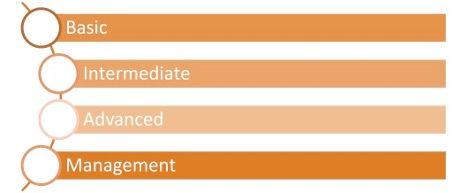
Levels of hard skills required in an organization
In many cases, having just the basic level of competence in the organization may be enough. In others, more advanced competence might be essential. If the product is a commodity for an established and obvious market, then a basic skill might be enough, and advanced skills can give a competitive advantage. But if a product is in an advanced, specialized niche, then advanced skills would be required. A product, for example, which relies on advanced analytics would require people with advanced analytics training. If there is a lot of interaction with other products, then the ability to manage becomes even more important, especially if it is part of a product portfolio, which is discussed in Session Product Portfolios.
Following are some of the hard skills any successful product organization must have in their organization.
Management
Management is classically defined as planning, organizing, staffing, coordinating, and directing.
• Planning is to lay out step-by-step what needs to be done. Together, these constitute a strategy.
• Organizing is the act of putting the right people in the right places with commensurate responsibility and authority to go along with that responsibility. The organization is typically represented with an organizational chart.
• Staffing is the act of finding, hiring, training, motivating, and firing, if necessary, the people to get the job done that has been defined in the plan.
• Coordinating is the act of making sure different people in different departments know what the others are doing and also encouraging interaction.
• Directing is the act of telling people what they need to do and by when.
Leadership
Leadership is the act of leading a group of people or an organization. There are different leadership styles, such as visionary, coaching, affiliative, democratic, pacesetting and commanding. Teaching leadership is beyond the scope of this book.
Staffing
Staffing is the act of defining the responsibilities that a person needs to accomplish the competencies required and the experience necessary to get the job done. Then, it is the sourcing of candidates, screening, evaluating their potential match, and sometimes making the offer and onboarding them. Staffing is beyond the scope of this book.
Finance
Finance is the act of managing the handling of money in the organization from reception and accounts payable to making payments to vendors and employees, to investing, and sometimes being the liaison with investors. Finance is beyond the scope of this book, too.
Marketing
Marketing is the act of promoting a product, which includes the first act of making prospective customers aware of the product. Marketing primarily consists of targeting the right messages to the right people at the right time. To get to the people, the marketeer also needs to know what media they consume and when.
But, as David Packard (co-founder of Hewlett-Packard) said, “Marketing is too important to leave just to the marketing people.” The point he was driving at is there are a lot of things that have to be done by the entire organization for the product to be successful, and it is impossible to expect product success just based on marketing. We discuss all such activities in detail in this book.
Many organizations and experts believe that market research should be done in the marketing department before the marketing begins. However, I disagree with this approach. It is fine if that market research is for the purpose of requirements, such as identifying what media the target customer uses and what media mix is appropriate, but not for the purpose of product development. Market research for what products to develop and what those products will do for the customer is different. I argue that the team responsible for product innovation should have its own budget for market research.
Sales
Sales is the act of identifying the needs of prospective customers and relating to them how the company’s product will satisfy that need. If the company does a good job of determining what the customer for which the product is targeted does, then the job of the salesperson is easy. If not, it becomes very hard. We will cover through much of this book how individuals in a company can determine the customer do.
Some products are bought on impulse, which is enhanced if it has a brand (promise of the product) and satisfies an immediate need at a delightful price.
Others require what is called a complex, consultative sale. In this case, the sales cycle through the customer journey has roughly four stages, each taking about 25% of the effort. The stages are lead, qualify, prospect and close on the sale by turning them into the customer.
My ideas on complex consultative sales have been a result of what I have been taught or what I have experienced in companies such as Wilson Learning, IBM, Xerox and HP. Figure 1.6.2 explains my version, which is influenced by what I have learnt in these organizations and that based on my selling experience.
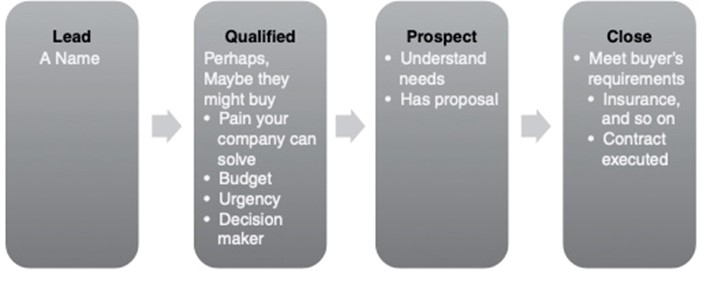
The consultative sales cycle
Let us go through each of the phases of a sales cycle.
Lead
A lead is just that—it is just contact information about a person or company that may or may not be interested in your product or service. Some marketing teams think that by just providing the sales team with a lead, their job is done. A sales team’s time is very limited; so, the more that marketing can do to qualify the lead—to determine if the lead has a pain that can be solved by your product, whether they have budget and urgency, and also who the decision makers are and whether they can at least lead you to the decision maker—the better a sales person’s time is utilized in pursuing and closing a potential customer or buyer.
There are two ways to generate a lead—push or pull.
Push lead generation is done by marketing activities such as the purchase of an email list, and sending targeted messaging with a call to action to the list.
Pull lead generation has become more and more prevalent in recent years with the advent of content marketing and social media, which is covered in Module 2, Session Marketing and Generating Leads Online.
Lead generation is usually the primary responsibility of the marketing department.
Qualify
In the qualifying stage of a complex, consultative sales cycle, the salesperson, by asking questions to the lead and doing background research, determines whether there is a fit between what the lead wants to do and what the product does. After being partially qualified by marketing and completely qualified by the sales team, the lead becomes a prospect.
Prospect
After the leads have been qualified, they move to the third stage. They become a prospect. At the qualifying stage or at this stage (and usually with the help of a product expert of sales support engineer), a presentation is usually made detailing what the product is and what it will do for the prospect. From additional information that is gathered by the sales- person by asking questions and observing, a proposal is generated detailing what the customer wants to do and what the product will do. The proposal usually also includes a cost and might even have a return on investment analysis. This phase may also include a product demo. Frequently, I see the demo being done at the lead or qualify stage, which is premature because the prospect has not yet invested in the product (see Module 4, Session Negotiation and Mediation), a personal relationship has not yet been established and the matching of needs is incomplete. As a result, a demo too early results in turning off the customer.
Close
After obtaining feedback from the prospect, the sales team then modifies the proposal and tries to get a commitment to buy. Before becoming a customer, the potential buyer will prob- ably have to persuade others. In a family, it might be the spouse. In an organization, there will be buyers (he/she who holds the budget and perhaps the purchasing department) and influencers. After approval, which might take dozens of signatures, a purchase order has to get issued and communicated. This last stage (which many do not know how laborious it is) usually takes 25% of the sales cycle and requires the detailed attention of the salesperson.

Case Study
Sales Process: Litton Applied Materials
Litton Applied Materials made what they called fuzz busters for military aircraft. It was an electronic device in a plane that would detect a missile being fired at them and tell the pilot to turn left, right, dive or climb to dodge the missile.
Since the enemy was always changing their strategy, it was essential for each plane to have the latest version of the tool. However, there was no way to track revisions easily and using a paper system of assembly instructions on the manufacturing floor took time. Since my product was a manufacturing documentation system they were using, I came up with a way with my insanely great customer Jerry Wallentiny to deliver the instructions to the shop floor electronically. The VP of Manufacturing liked the idea and accepted the USD 150,000 proposal, which was a lot of money at that time. It was over USD 300,000 in 2015!
Being the VP of Marketing and Sales and also managing the product, I put on my sales hat for the entire sales process, and when we got to the closing to create the customer, it took us six months to gather 29 signatures to get the proposal to purchasing for acquisition.
Then, the hardest work begins to meet the customer’s order fulfillment, service, support, training, level of service, delivery, and terms at the right price to close the deal and get the purchase order and signature. This finally closes the sales cycle.
Salespeople work in the rejection space, so organizations should treat salespeople kindly.
So, what is the difference between the responsibilities of sales and marketing?
Marketing softens the market and enables the sales soldier to march in. But your sales soldiers also need guns, ammo, logistics, food, and medical care for their wounds, which marketing must also provide, or they will fail. That is marketing’s role. Salespeople get shot (blamed) long before the product or company fails. They are motivated by making money. Make them your best friend. If they succeed, so shall you.
Business Development
The business development manager is similar to a salesperson but is different in that they may also develop relationships with other partners to bring to bear additional technologies, support, and distribution competencies that augment, supplement and enhance the company’s offerings. So, like the salesperson, BD managers understand the customer’s needs
and communicate these to the company. They seek to increase the value of the relationship between the customer and the company. Sometimes, the deals pulled together by the business development manager help the company with its product development costs. Once a deliverable product is lined up with the customer’s needs, the business development person shifts to a sales mode.
Account Development
After the sale, if there is an account development manager, that person strives to under- stand the customer’s current and future needs, and then communicates those needs back to the company for implementation and tracks that implementation such that the customer remains insanely great. The objective is to collaborate more with the customer and make more and more money off that sales deal.
Business development cultivates long-term relationships and builds along with the rest of the company, insanely great customers. Account managers maximize sales from existing customers.
Support, Service, Installation
The act of supporting the product after sales are support and service. The support and service team provides service, including the fixing of the product and warranty support. Installation is putting the product into the customer’s environment with whatever customization is necessary.
Finally, it is the responsibility of management, leaders, staffing, and finance to support the successful management of products. Those responsible for managing the products need to support the sales, marketing, support, service and installation areas with complete planning necessary and tools for them to get their job done. Sometimes, there is inadequate knowledge transfer from engineering or product development. The engineering team has a very clear idea as to whom they are building the product for and why it works the way it does. Frequently, this information is not communicated completely and hence the high level of product failure.
Product Management and Product Marketing
Evolving out of Procter and Gamble and Hewlett Packard is the role of people dedicated to the planning and support of marketing, sales, and service. They are called Product Managers and Product Marketing Managers but might go by over 250 other titles. But what they should be doing is essentially the same and is defined in this book in terms of what needs to be done and how to do it. If your organization has people assigned specifically to do this, great! If not, your organization still has to assign this task to competent people to increase the prospects of product success.
Organizational and Individual Competencies
Let us understand the different organizational and individual competencies needed for various stages of successful product management.
Product Planning: Product Market Strategy
Following are some of the key competencies in the product market strategy planning stage. All of these competencies are explained in greater detail in various sessions of Module 2.
Defining the Product Lifecycle Framework and Process
To move up the maturity ladder, which is defined by the stages such as Non-Existent, Ad Hoc, Defined, Managed and Optimized an organization must have a defined framework and process to follow. Otherwise, the lack thereof enables repeating errors and not leveraging successes.
Once a framework is established, how one works through those activities needs to be defined.
Following the framework is crucial. As an executive once told me, after his company had five product failures in a row, the lack of a process creates a culture of blame.
Knowing What Your Customers and Their Customer’s Customer Do
The best way to decide what your product is going to do is to first learn and define what your target customer(s) need and want to do.
Faster, Better and Cheaper (Innovation) and/or with Style
Once you know what your customers do, then you can innovate on developing a product that lets them do those things faster, better and cheaper, and/or bring style to the owner of the product (as in luxury products).
Identify Risks and Mitigation Strategies
It is important to think out of the box and identify what risks—internally and externally— you might have that might impact the success of your product. With that list in hand, you can then identify strategies to mitigate those risks.
Define Clear Value Proposition
A clear value proposition can then be crafted based on what your target customers do and your innovation. The value proposition will be used as the basis for marketing’s messaging and sale’s key selling points. The process to craft a value proposition statement is explained in the workshop entitled Value Proposition.
Knowing Your Targeted Customers (Personas)
A persona is a description of your targeted customers in terms of who they are, where they live/work, what their background is like, their values, what they fear, pet peeves and how do they get their information.
Understanding Your Markets, Competitors and Technological Changes
Next up is to conduct market research to understand the potential markets you can go after, what your competitors (product and company) are doing and what technological changes might be occurring out into the future that can disrupt the product. This market and competitive research should be updated just before product introduction, and any significant changes might necessitate updating positioning, pricing strategy, distribution, messaging and planning for sales, advertising, PR and social media.
Product Positioning
This is the stake you put into the ground, setting the position your product takes in the marketplace. It is, in a way, a position in the mind of your prospective customer. It is what you want them to think of, as to where to place your product in the mix of things.
Product Features, Advantages and Benefits (FAB)
This is a list of your product’s features, advantages those features have over the competition and what benefit each feature provides to the customer. This chart should also contain what the problem is, what people do to solve that problem and their priority in terms of importance and satisfaction. This makes it easy to translate the information into a value proposition.
Determining Pricing Strategy
A pricing strategy needs to be in place before deriving the actual product price. It starts with the goal that is intended for the product, such as lowest price, market share, profitability, loss leader, and more.
Laying Out a Roadmap
This lays out how the product, and potentially the product line, will evolve over time.
Distribution Planning
A distribution plan covers how a product will be brought to market, what channels or partners will be used, their qualifications and how they will be trained and compensated.
Planning Budget and Schedule
This involves how much will be spent and what would constitute the budget and schedule.
Determining Return on Investment
This is a calculation of the expected return on investment based on the costs of planning for and developing of the product, marketing, sales, and support, subtracted from the average selling price times the units expected to be sold.
Product Development
Following are some of the key activities and competencies needed at the product development stage.
Determining Technology Needs
Products do not always have to be developed entirely in-house. Additionally, some technologies might be required for the product to be developed, manufactured and incorporated. Technology needs should be spelled out for the business development department so they can be acquired on favorable terms.
Designing User Experience
This is a specialty area that focuses on the experience the user has when trying to use the product. It is frequently overlooked, but a poor user experience could reduce the extent of success or may even cause the product to fail.
Identifying Partners’ Requirements
This is identifying the requirements of partners needed for the development and manufacturing of the product.
Defining Repeatable Development Framework
There is a need to follow a product lifecycle framework and process for the product. There also needs to be a repeatable development framework. The leading frameworks are waterfall and lean or agile. Some frameworks may use the good parts from both these two at the appropriate places.
Determining Prioritization
The development process must be able to prioritize the work to get the product done on time and in concert with priorities set down by the product market strategy. Likewise, the product plan must set priorities.
Validation Planning
In a waterfall development process, the activity called alpha testing is for people to test the product against what is expected from the product internally, and beta testing is for testing with people outside the company. In a lean or agile development environment, validation is conducted in parallel with development in quick sprints to develop, deploy, test, and adjust.
Freezing Schedule
The development team must be able to put together a schedule of what is going to be done and when, and follow it rigorously.
Planning to Deal with Risks
For all the risks during the development, the team must be able to identify what can be done to mitigate those risks.
For example, there was a company heavily funded by venture capitalists call Trilogy, founded by an industry icon who was the leading person on IBM mainframes and clones. The company planned on building a new computer based on wafer-sized CPUs. Three new technologies had to be developed, and all three had to succeed in order for the product to work. They did not have a backup strategy to use in case of one or more of those developments not succeeding. Some did not. The company failed.
Marketing and Launch
Before a product can be launched into the marketplace, a full marketing plan should be pulled together. This is because a launch is the same as ongoing or sustaining marketing, except it is of short duration. The same marketing plan elements can be used for the launch plan, with adjustments to support the launch.
The overall goal of marketing is to generate qualified leads for the sales force to pursue. In today’s digital world, the marketing effort sometimes does the complete marketing and even the actual sales. The two areas of expertise collapse into one activity, but it is essential to understand during planning the nature of the customer, the product, and the sales cycle, including the customer journey. If this is not done, the result may be strange things happening, such as websites that ask for the order but do not bother to describe what the product is and why you should want to buy it.
Following are some activities in the marketing stage. Most of these are explained in great detail in Module 3.
Understanding of Customer Journey
In today’s market, the journey of the prospective customer—from status quo, to trigger point, to explore options, to evaluating solutions, to making a business case for purchase, to gaining internal buy-in, to purchase, to deployment, to validation, to expanding use, to providing references—must be completely understood to tailor the messaging, based on where in the customer journey the prospect is at.
Understanding Differences between Markets
Depending on what markets the product might be marketed in, small or major changes might need to be made for the marketing. It is important to lay out those differences in the marketing plan.
Developing Messaging
Messaging is usually written by professional copywriters, building on the value proposition, positioning, market research, competitive research, FAB, roadmap, distribution, personas, market(s) and customer journey.
Promotions/Packaging / Bundling Plan
The plans for promotions, packaging and bundling are an essential component of a marketing plan.
• A promotion is usually some kind of special offer that is time bound.
• Packaging is what wraps around the product and what is displayed on the package.
• Bundling is the clustering of the product with other products and/or services.
Identifying Media and Mix
There are dozens of different types of media that can be used to reach the prospective cus- tomer. How they are used with each other is called the media mix.
Identifying Distribution Channels
Products can be sold directly to the customers or through channels, partners and affiliates.
Determining Training, Sales and Support Planning
Plans are needed for the training of the customers (users and their support people), the sales force and the support, service and warranty team. Usually, these plans are drafted by those departments using the information provided by the product planning or product market strategy.
Creating Sales Tools Plan
The sales tools plan will lay out what sales collateral will be required for both physical and digital. It should also include a schedule to ensure they are available at the right time.
Creating Sales Planning
The sales plan consists of the description of the targeted customer(s) based on the persona for which the product is being developed, how they are going to be reached and numbers reflecting the sales goals.
Determining Public Relations Planning
The PR plan includes the target media and analysts, along with the messaging to them and the schedule.
Determining Advertising Planning
The advertising plan includes the selection of media based on the positioning, personas, distribution plan, value proposition, messaging, markets, FAB, roadmap, promotions, bundling, and sales objectives.
Determining Content Planning
Content, content, content is the cry right now! A comprehensive plan for the development of content mapping to the customer journey is now essential, especially given the rapid shift from push marketing to pull marketing, as described earlier.
Determining Social Media Planning
LinkedIn, Twitter, Facebook, SlideShare, YouTube and about a dozen more social media needs to be planned for use in the marketing campaign.
Metrics and Analytics
Metrics for success need to be established along with what data is going to be collected and analyzed.
Schedule and Budget
Of course, a schedule and budget for the marketing effort needs to be established and approved.
Operations
Plans are needed for sales, marketing, supply chain operations, manufacturing, distribution and more. All these competencies are required for successful products. Following are some key operation plans to be prepared.
Training
Training implementation needs to be planned.
Support, Service, Warranty
Support, service, warranty plans need to be determined, and then processes need to be implemented for their execution.
Order Fulfillment
Order fulfillment plans need to be implemented.
Supply Channels
Supply channels need to be established and managed.
End of Life
As discussed earlier, just development, launch, and sales are not enough. A frequently overlooked part of product management is preparing an end-of-life plan that achieves the company’s objectives and preserves the customer’s loyalty.
People and Interpersonal Skills
In addition to the hard skills described above, these are some of the business skills or soft skills or competencies that members of the product management team must have in their set of competencies.
Soft skills are less tangible and harder to quantify. They are people skills and are frequently overlooked and/or undervalued. For the management of products, competencies in soft skills are essential because of the teamwork required to define, develop and market a product.
For example, people who are abrupt, abrasive, and game players tend to enable the product’s failure. However, people who inspire, lead, consider the humans they are working with, encourage the best effort and so forth tend to succeed, especially if the hard skills are all present in the team.
Most of the soft skills discussed in the following sections are explained in detail in Module 4; however, they apply to all teams working as a part of the product management team.
Teamwork
Product management is not the responsibility of individuals. It is completely a team effort, as there are many stages and steps that lead to successful products. All the people working on the team must be able to get along, complement and enhance each other’s work.
Project Management
In many product management teams, there is one individual or project manager assigned to handle the product lifecycle as a project, and therefore he/she is expected to have the project management skills of being able to break the task down into its components, assign the best people to do those tasks and subtasks, generate a schedule with dependencies, monitor and report on the schedule. This is helpful in general; however, to ensure the timely and planned execution of each stage, all teams and individuals need to maintain a certain degree of project management skills.
We need to keep in mind that since product management involves multiple stakeholders and several specialized and interconnected teams with a common goal, this results in much more than managing a project. All teams need to be on the same page and get a 360-degree view of all the inter-related projects to achieve a common business objective. The management of the entire lifecycle, which includes management of a set of synergistic projects, each has its own structure, but when integrated, achieving a common business goal is referred to as Program Management.
Working with Other Groups
To work with other groups, each team member must establish their credibility with each of the other groups. For example, if a person is working with engineering, they need to demonstrate at least some basic knowledge of the technology being used, the market, be the voice of the customer, have data to support their position readily available and develop a rapport, so that the other teams can take the baton for their part of the program and continue with the same vision and goals.
Working with Other Individuals
Team members have to also have the ability to get along with others. They need to be able to relate up the organization to superiors and down the organization to those at a lower level.
Communication
Team members need to be able to create and present persuasive documents and presentations, manage meetings, demonstrate active listening and be flexible, patient and persuasive.
Leadership, Negotiation, and Mediation
Team leaders must be able to lead, negotiate effectively and mediate disputes. At the same time, social skills and etiquette are very important for all team members.
Time Management
Good time management results in identifying what is important to get done each day and getting those things done at the right time. Additionally, team members have to be able to work strategically and get those things done first that others depend on, as well as find time to think and brainstorm on their individual tasks.
Interpersonal and Organizational Dynamics
Leaders should be able to understand basic interpersonal and organizational dynamics and plan accordingly.
Tool Use
Team members should have above-average skills in operating the various tools the organization uses, to get their job done.
To ensure these skills are developed and continuously improved on, each team member should have a skill and competency development plan.
Role of the Product Manager and Product Marketing Manager
In some companies, the title of the person responsible for the product planning or product market strategy is called the Product Manager. Likewise, the person responsible for the strategy planning for marketing has been called the Product Marketing Manager. But the people doing these things could have any one of hundreds of other popularly used titles. It does not matter what their title is and whether individuals or teams perform these tasks, but it does matter that all the competencies are present in an organization and are brought to bear on the product.
Look at the Figure of the Product Management framework once again. It gives you an idea of who does what in an organization that has both a Product Manager and a Product Marketing Manager. The top part is Product Management. Supporting this, at the bottom are the competencies and tasks related to Product Marketing.
In recent years, some organizations have had Product Managers pulled in multiple other directions, as shown in the Figure.
Additionally, some may be asked to take on the tasks of release management, scrum master, QA, partnerships and business development.
Product marketing managers may also be asked to do demos, pre-sales support, copywriting, marketing, contracts, and sales.
It is important to remember, however, that neither can do their core responsibilities well if given too much to do.
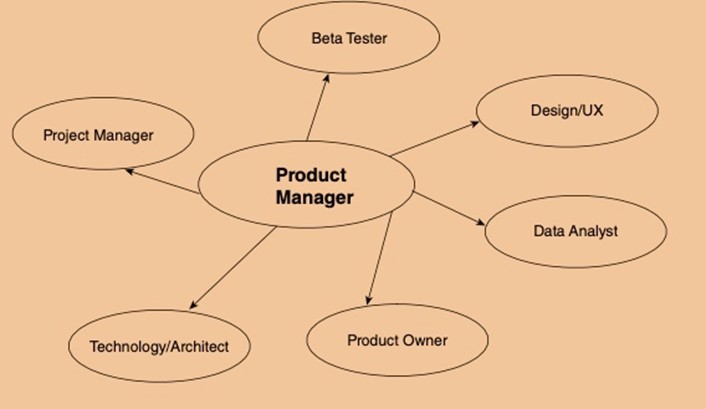
FIGURE 1.6.4 Some more areas of functionality of Product Managers
Conclusion
This session covers all the activities that an organization must accomplish to ensure the success of its product. As a result, people have to have various competencies required to get these activities done.

Problem-Solving Exercise 9


Course Manual 10: Successful Management of Products
SESSION OBJECTIVE
At the end of this session, you will be able to:
LO1: Understand the need for product management in startups
LO2: Identify some key mistakes startups make, and ways to avoid these pitfalls
Startups and Innovation
You must go after your wish. As soon as you start to pursue a dream, your life wakes up and everything has meaning. —Barbara Sher
While we discuss the product management lifecycle and framework, a question comes to mind—Do these also apply to startups, which typically seem to function a little differently from bigger organizations?
It is typical for entrepreneurs and those involved in startups to think that what they have to do is different from what organizations would usually need to do to successfully manage their products. Some of this understanding developed from the agile hacking together of a product—which is why the term ‘development’ was changed to ‘hacking’.
Trying to come up with product ideas and what they help do is being called by some as ‘innovation’, as if this is something that organizations have started doing recently, and in the past, it was a mystery.
Similarly, the lack of understanding about what marketing is has evolved to the concept of ‘growth hacking.
Growth Hacking
Growth hacking (a term coined by Sean Ellis in 2010) is really marketing combined with big data, analytics, search engine optimization, content marketing, A/B testing, social media, and viral marketing. What Sean called growth hacking was called Guerilla Marketing in the 1980s but today, the concept has been updated with web technologies and big data. All of the things done by growth hacking have been done before—but without the tools, we have available today.
For example, today, instead of not knowing which 50% of our advertising spend is wasted, we can know exactly what does not work. If we stop what is not working fast enough, we then would not blow our advertising budget. This is not necessarily hacking—it is being prudent.
So it is all pretty much the same. Just the terms have changed. For example, Regis McKenna, the PR advisor to Apple, coined the term luminaries, which is what I learned was called opinion leaders in political science school at the University of Michigan.
A key to rapid and cheap growth is word-of-mouth advertising which is now called viral marketing, enhanced by technology that includes the familiar like and share buttons.
Once you have the basic social media knowledge (as much is covered in this book) covering the fundamentals of how to do viral marketing, then you can get with your engineers (or your engineering self), and learn how you can use APIs (Application Programming Interfaces) to get your message in front of people in ways you never knew was possible before.
Product Management in Startups
In short, everything in the Product Management lifecycle and framework (covered in these workshops) are also directly applicable to startups, but perhaps must be practiced a little more rigorously, so that if startups follow these principles and guidelines thoroughly, their chance for success is even greater.
Startups today are of various kinds and could be broadly classified as the following, and based on their category, they should be focusing on the following areas of the Product Management framework:
• Having a Product Idea, but Little Idea About How to Develop and Market it. This situation requires a lot of work on the product market strategy discussed in these workshops and flushing out what it will take and cost to develop it.
• Is an Entity or Person Who Has Money and is Looking for Any Opportunity to Invest. Investors should evaluate the chances of success against the product’s market and marketing strategies.
• Having an Understanding of the Market, Needs an idea, and also Lacks Development and Marketing Plans: This type of startup should also make sure they have flushed out their product market strategy, development, and marketing plans.
Typical Pitfalls to Avoid
Let us discuss some of the typical mistakes most startups make when they think of products and innovation.
1. The ‘Founder Knows Everything’ Syndrome
If I had a nickel for all the founders, I have known that think they know it all and then proceeded into oblivion with their investor’s funds, I would be a millionaire. While you are a startup founder who may think you have your strategies and plans complete, it is still a good idea to go through the various steps and exercises defined in this book. You will be amazed at what new things you find that you had not thought of before.
2. Incomplete Product Market Strategies
Another typical mistake startups make is not doing most of their product market strategy before starting development, and failing to finish it before the launch plan.
In particular, the product market strategy should be done before development commences.
These include all of the following activities:
• Understand what their customers do
• Know what is going on in the market and what the competitors are up to
• Agree on and follow a product lifecycle framework and process
• Identify and size the market and clearly communicate the product’s value proposition, market vision, opportunity, and description
• Record customer personas
• Identify market status and adoption factors
• Identify target markets and market segments
• Complete product positioning and product roadmaps
Then, and only then, can one get to development. Identifying all of the above will significantly help the development team build the right product. In parallel with development, the following should also be developed prior to product launch:
• Distribution Strategy
• Training Plan
• Operations Plan
• Marketing Plan
• Sales Plan
• Support/service
• Pricing Strategy
• Success Metrics

Problem-Solving Exercise 10

Course Manual 11: Competencies Required for Successful Management of Products
This Figure once more lays out the competencies needed for the successful management of products:
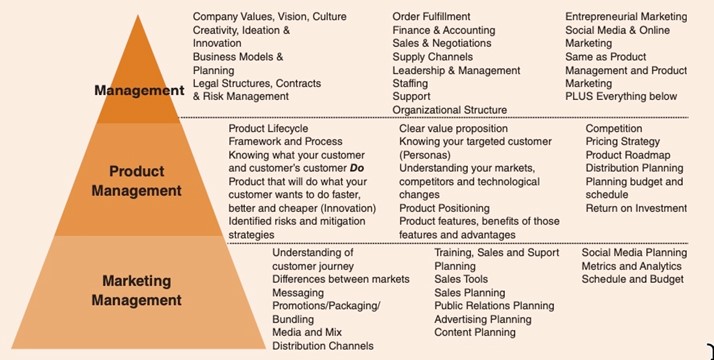
Competencies required for successful management of products
While bigger organizations may have separate teams or individuals specializing in one or more of these competencies, in case of startups, a few people will need to hone and develop all of these competencies.
Some companies like HP and Apple have functions and job responsibility areas called Product Management and Product Marketing Management as shown in Figure 1. While the titles of who does what is not important, it is vital that all of these competencies are available within the organization.
We discuss these competencies in detail in workshop on Product Management Competencies.
Conclusion
Startups and established businesses both need to do the same activities to be successful. In some cases, what the activity is called has changed over the years, but the fundamental functions have not changed. Founders tend to think they know everything and skip key steps in the rush to market. Specific activities should be performed before starting product development and launch. All competencies have to be present in an organization or startup for success.

Problem-Solving Exercise 11

Course Manual 12: Product Management Focused Organizational Structure
Product Management Focused Organizational Structure and Decision Making
Organizational structures range from rigid to informal or flat. They can be at the entire organizational level or around products, markets, geographies, or processes. They can be a cross with functions by-products, which is called a matrix, where each employee has two bosses. While creating flexibility, if the two bosses do not communicate about what their joint employee needs to do and when confusion can reign. Recently the circular structure has been used with the executives in the middle, spreading their wisdom out to the managers and specialists.
If your company is like most organizations, there is probably an ongoing battle over how the company is driven, with sales, marketing, engineering, finance, legal and distribution— all competing with each other.
The right objective that should drive a company is what its customers do. Focus on the outcome for your customers. Nothing else can or should be the driver, not technology since that is a solution in search of a problem, not the market since that is an artificial amalgamation of what the customers do. If an organization picks the wrong structure, the management may easily end up allocating too many or too few resources for the product. The Figure shows a product management-focused and customer-centric structure.
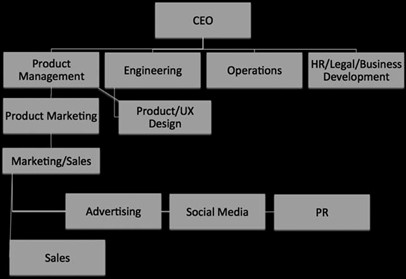
Customer-centric organizational structure
In a customer and product-focused organization, the people primarily responsible for managing the success of the product should be at the Vice President level—at the same level as engineering, operations, HR, finance, legal, and so on.
Steve Jobs’ early role at Apple was VP of Product Management. Phil Schiller is the current VP as of 2016. I am told the VP of Product Management at Facebook sits at the same table as does Mark Zuckerberg. Elon Musk at Tesla is the Product Architect. I suspect the same is true at many customer-centric companies. This is a similar trend followed at HP when they had their 50 year run of growing 20% per year.
Let us understand some key tools and approaches that a customer-centric organizational structure adopts.
Tools for Customer-Centric Organizations: DACI Chart for Decision-Making
Imagine this scenario
The CEO of an organization has dinner with a major customer. That customer lays out that the CEO needs to add a feature to the product that is very, very important to his company. Immediately after dinner breaks up, the CEO texts the VP of Product Management told him that he promised the feature the company was asking for will be in the next release.
The next morning the VP of Product Management calls the relevant Product Manager into his office and tells him that the new feature has to be done, along with a due date. The product manager is astounded. That feature not only has not come up in their primary and secondary market research, but by diverting resources to that feature, most other features promised to many other customers which are on the product roadmap would have to be delayed. He also knew that several key members of the product team were already upset that they are always being told to go in a different direction based on what sometimes seems as a whim. He was concerned that this additional change in direction could very well be the straw that breaks the camel’s back, and the key developers in the team may just leave the company as a direct result of being shifted around all the time. If that occurred, then the new product’s enhancements would be delayed even further, and it would have a substantial impact on future sales and profits.
Does this seem familiar? I have seen this phenomenon at all too many companies.
If you were responsible for the product, what would you have done before, during and after this direction from the CEO?
The solution is to have either a RACI (Responsible, Accountable, Consulted and Informed) or DACI (Driver, Approver, Contributor, and Informed) chart as shown in Figure 1.7.2 or a document along a similar line.
A typical area where some companies fail is thinking that everybody is the decision-maker for every decision. Such should not be the case, as this leads to chaos and ultimately a culture of blame, especially if the product(s) fail.
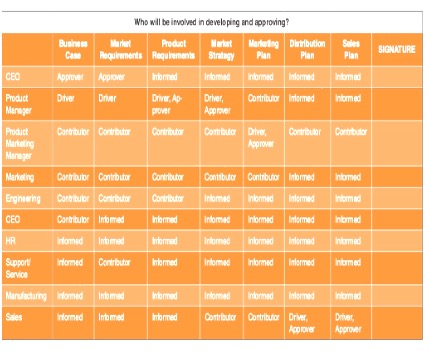
A DACI Chart
So, at the beginning of each product phase, it should be decided who is the driver (D) for that area of effort, who needs to be the approver (A), who needs to be the contributor (s) (C) and who simply needs to be informed (I).
This is a DACI chart. It should be at the front of each set of documents regarding the product— that way everybody knows who is responsible for what. It will also help avoid future conflicts.
Driver (D)
A Driver handles the overall coordination of the project, meeting, or business area that the DACI applies to. The Driver usually has responsibility for communicating with other team members and ensuring that roles and responsibilities are clear. Usually, the Project Manager is the Driver for a project, though at times, this is not the case, and a project may even have more than one Driver.
Approver (A)
An Approver has the authority to approve decisions affecting the progress of the work being done by the project team or work group or to refuse approval. Approvers do not necessarily get to approve all decisions, so the DACI should specify which types of decisions are made by which Approvers.
Contributor (C)
A Contributor must be consulted to provide input for certain types of decisions. Often, a Contributor is involved in the project but does not have Approval authority. At times, a Contributor is an individual or department who is not a project team member but whose area of operations affects or is affected by the work of the project team.
Informed (I)
A person that is kept Informed does not necessarily have a role while the project is underway or a decision is being considered but must be informed once a decision or change is made. For example, the service department just needs to be informed about some aspects of the product market strategy once it has been decided.
Other Variants
There are several other variants of the DACI decision making chart, for example, the RASCI chart where support responsibility, or a quality review responsibility, or a specification of who is out of the loop for a specific task and so forth may be added. The important thing is to pick the scheme that makes sense for your organization and to use it.
You need either a RACI or DACI chart or something similar for each of these plans:
• Product Market Strategy or Product Plan
• Development and Testing Plan
• Marketing Plan
• End of Life Plan
• Sales Plan
• Operations Plan
• Training Plan
• Support/Service Plan
For the last four plans listed, chances are that everybody is clear on responsibilities, so you may not have to detail those out. But it does not hurt to have that conversation beforehand, to prevent any conflict from occurring.
Gantt Chart for Schedule
One of the problems that you might have is that some team members may not be completely aware of the deliverables, the timelines and their corresponding responsibilities. By showing their names publicly on a schedule for the things that to be accomplished will result in peer pressure, and it will help those activities get done.
If you do not do this, then problems may occur because follow-on tasks that depend upon certain tasks being done on time will slip. This may then delay the timelines of getting the product market strategy done in time.
You can show your schedule in a Gantt chart, as shown in the Figure.
A Gantt chart is a type of bar chart, adapted by Karol Adamiecki in 1896 and independently by Henry Gantt in the 1910s, that illustrates a project schedule. Gantt charts illustrate the start and finish dates of the terminal elements and summary elements of a project.
The Gantt chart in the Figure shows the tasks, who is responsible for each of them, and where they are according to plan. This is just an example of what a Gantt chart might look like. By giving this to your team at each review meeting, it will enable you to show the entire team what needs to be done and by whom. Team members also learn the interdependency of multiple tasks.
As discussed, in addition to showing tasks and who is responsible, a Gantt chart can also show dependencies and the relationships between tasks including the following types:
• Has to be done after
• Has to be done before
• Blocks
• Is blocked by
• Relates to
• Has to be finished together
• Is a parent or subtask
• Earliest end is the start of
• Start is earliest end of
• Has to be started together with
Gantt charts gained greater acceptance and notability when NASA used it for their space program, to help manage its schedule to land the first human on the moon by the end of the 1960s. At that time, it took a mainframe computer to manage a schedule. In the 1980s, it became possible to do Gantt charts on personal computers.
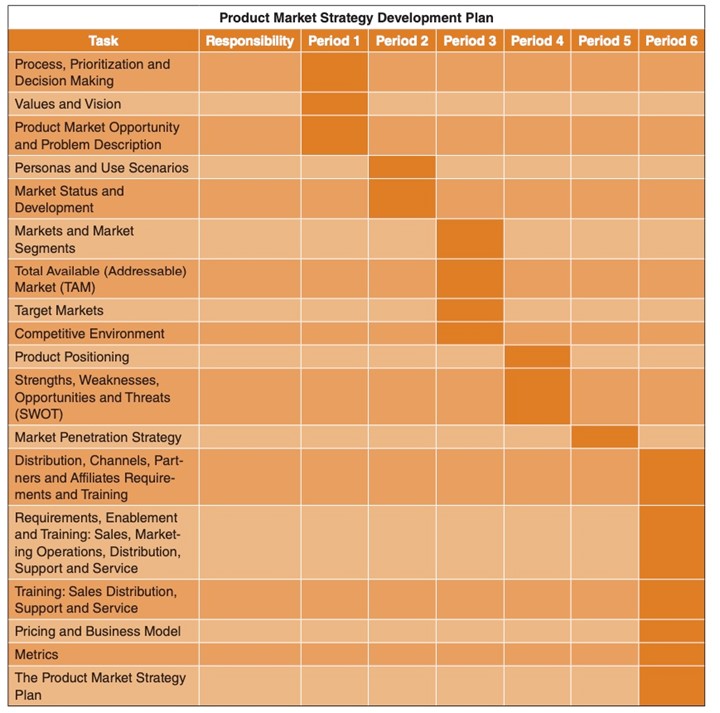
A Gantt chart
Resources Required Chart for Effort Estimation
A chart of resources needed to get the job done can be started by first assessing what is needed and what is available. It may be in terms of people, time, money, equipment, and facilities. This chart will then reflect what is needed for the project at hand.
The Figure shows an example of a similar chart.
Be as accurate as you can with your estimates because if you estimate too little, you may not have enough resources to get the job done. If you overestimate the cost of the product, it might be high enough to diminish the calculations of return on investment, thus creating the risk of product cancellation. It is far better to give a range of estimated time and resources in form of a low and a high number.
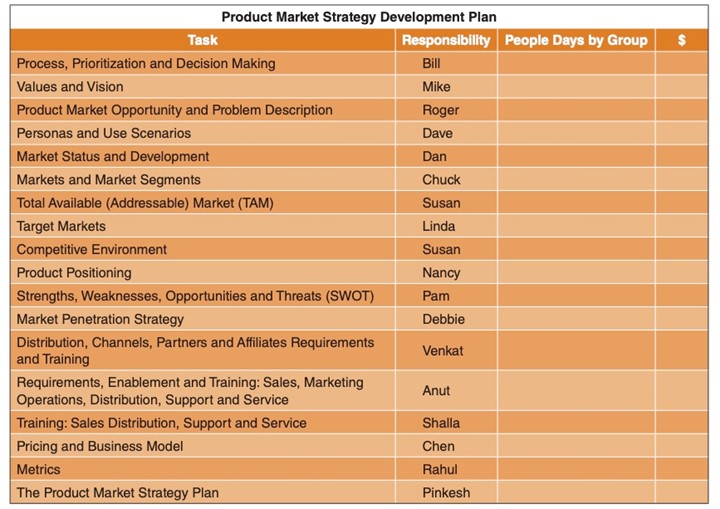
A Resources Required chart

Case Study: Inaccurate Estimation: Palo Alto Startup
I was consulting for a startup company located in Palo Alto, California, which had raised about $5 million from an Australian venture capital firm. The startup developed a product and released it into the marketplace but did not understand why it was not selling. They asked me to help figure out why. After studying the data and surveys that had been taken and talking to a number of users I found that the product:
• Did not do what was promised
• Was hard to use and configure
The management then asked me what they should do. I organized a series of brainstorming sessions which included their engineering team, business development team, and senior management. After we agreed upon a product roadmap and functionality, we asked the engineering team for an estimate of effort to get the product done.
Because engineering had been blamed before for being late, they did not want to underestimate the effort required. So they took their estimate for each task, doubled it, added that together and then doubled it again. I warned them that they should not do that. The effort and cost were being quoted to be four times more than what it might actually cost. They would not listen.
What do you think happened?
The venture capital firm terminated the company and wrote off its losses. The engineers had to find another job.
Conclusion
In this session, you learnt about different organizational structures, what affects decision making and how to make sure the right people are affecting the decisions about the product, and the importance of having the resources to get the job done.
You should be organized so that the entire company’s focus is on the customer and the value the customer gets, which includes clarity on the organizational structure, decision making, scheduling and the resources available.

Problem-Solving Exercise 12
1. What are the current challenges faced by your organization?
2. Are they due to the organizational structure?
3. Is there clarity of the roles played by each stakeholder?
4. Are the responsibilities documented to avoid ambiguity?
5. Develop and propose a RACI chart for all the stakeholders in the organization
Rejoin the groups and discuss the findings in the class.
Project Studies
Project Study (Part 1) – Customer Service
The Head of this Department is to provide a detailed report relating to the What Must Products Have to Succeed? process that has been implemented within their department, together with all key stakeholders, as a result of conducting this workshop, incorporating process: planning; development; implementation; management; and review. Your process should feature the following 12 parts:
01. Product Failure and Its Impact
02. The Six Keys to Product Success
03. What Is a Product?
04. The Keys to Product Success
05. The History of the Management of Products.
06. What Distinguishes Products and Services?
07. Business Model and Canvas
08. Product Management Lifecycle and Framework
09. Product Management Competencies
10. Successful Management of Products
11. Competencies Required for Successful Management of Products
12. Product Management Focused Organizational Structure
Please include the results of the initial evaluation and assessment.
Project Study (Part 2) – E-Business
The Head of this Department is to provide a detailed report relating to the What Must Products Have to Succeed? process that has been implemented within their department, together with all key stakeholders, as a result of conducting this workshop, incorporating process: planning; development; implementation; management; and review. Your process should feature the following 12 parts:
01. Product Failure and Its Impact
02. The Six Keys to Product Success
03. What Is a Product?
04. The Keys to Product Success
05. The History of the Management of Products.
06. What Distinguishes Products and Services?
07. Business Model and Canvas
08. Product Management Lifecycle and Framework
09. Product Management Competencies
10. Successful Management of Products
11. Competencies Required for Successful Management of Products
12. Product Management Focused Organizational Structure
Please include the results of the initial evaluation and assessment.
Project Study (Part 3) – Finance
The Head of this Department is to provide a detailed report relating to the What Must Products Have to Succeed? process that has been implemented within their department, together with all key stakeholders, as a result of conducting this workshop, incorporating process: planning; development; implementation; management; and review. Your process should feature the following 12 parts:
01. Product Failure and Its Impact
02. The Six Keys to Product Success
03. What Is a Product?
04. The Keys to Product Success
05. The History of the Management of Products.
06. What Distinguishes Products and Services?
07. Business Model and Canvas
08. Product Management Lifecycle and Framework
09. Product Management Competencies
10. Successful Management of Products
11. Competencies Required for Successful Management of Products
12. Product Management Focused Organizational Structure
Please include the results of the initial evaluation and assessment.
Project Study (Part 4) – Globalization
The Head of this Department is to provide a detailed report relating to the What Must Products Have to Succeed? process that has been implemented within their department, together with all key stakeholders, as a result of conducting this workshop, incorporating process: planning; development; implementation; management; and review. Your process should feature the following 12 parts:
01. Product Failure and Its Impact
02. The Six Keys to Product Success
03. What Is a Product?
04. The Keys to Product Success
05. The History of the Management of Products.
06. What Distinguishes Products and Services?
07. Business Model and Canvas
08. Product Management Lifecycle and Framework
09. Product Management Competencies
10. Successful Management of Products
11. Competencies Required for Successful Management of Products
12. Product Management Focused Organizational Structure
Please include the results of the initial evaluation and assessment.
Project Study (Part 5) – Human Resources
The Head of this Department is to provide a detailed report relating to the What Must Products Have to Succeed? process that has been implemented within their department, together with all key stakeholders, as a result of conducting this workshop, incorporating process: planning; development; implementation; management; and review. Your process should feature the following 12 parts:
01. Product Failure and Its Impact
02. The Six Keys to Product Success
03. What Is a Product?
04. The Keys to Product Success
05. The History of the Management of Products.
06. What Distinguishes Products and Services?
07. Business Model and Canvas
08. Product Management Lifecycle and Framework
09. Product Management Competencies
10. Successful Management of Products
11. Competencies Required for Successful Management of Products
12. Product Management Focused Organizational Structure
Please include the results of the initial evaluation and assessment.
Project Study (Part 6) – Information Technology
The Head of this Department is to provide a detailed report relating to the What Must Products Have to Succeed? process that has been implemented within their department, together with all key stakeholders, as a result of conducting this workshop, incorporating process: planning; development; implementation; management; and review. Your process should feature the following 12 parts:
01. Product Failure and Its Impact
02. The Six Keys to Product Success
03. What Is a Product?
04. The Keys to Product Success
05. The History of the Management of Products.
06. What Distinguishes Products and Services?
07. Business Model and Canvas
08. Product Management Lifecycle and Framework
09. Product Management Competencies
10. Successful Management of Products
11. Competencies Required for Successful Management of Products
12. Product Management Focused Organizational Structure
Please include the results of the initial evaluation and assessment.
Project Study (Part 7) – Legal
The Head of this Department is to provide a detailed report relating to the What Must Products Have to Succeed? process that has been implemented within their department, together with all key stakeholders, as a result of conducting this workshop, incorporating process: planning; development; implementation; management; and review. Your process should feature the following 12 parts:
01. Product Failure and Its Impact
02. The Six Keys to Product Success
03. What Is a Product?
04. The Keys to Product Success
05. The History of the Management of Products.
06. What Distinguishes Products and Services?
07. Business Model and Canvas
08. Product Management Lifecycle and Framework
09. Product Management Competencies
10. Successful Management of Products
11. Competencies Required for Successful Management of Products
12. Product Management Focused Organizational Structure
Please include the results of the initial evaluation and assessment.
Project Study (Part 8) – Management
The Head of this Department is to provide a detailed report relating to the What Must Products Have to Succeed? process that has been implemented within their department, together with all key stakeholders, as a result of conducting this workshop, incorporating process: planning; development; implementation; management; and review. Your process should feature the following 12 parts:
01. Product Failure and Its Impact
02. The Six Keys to Product Success
03. What Is a Product?
04. The Keys to Product Success
05. The History of the Management of Products.
06. What Distinguishes Products and Services?
07. Business Model and Canvas
08. Product Management Lifecycle and Framework
09. Product Management Competencies
10. Successful Management of Products
11. Competencies Required for Successful Management of Products
12. Product Management Focused Organizational Structure
Please include the results of the initial evaluation and assessment.

Project Study (Part 9) – Marketing
The Head of this Department is to provide a detailed report relating to the What Must Products Have to Succeed? process that has been implemented within their department, together with all key stakeholders, as a result of conducting this workshop, incorporating process: planning; development; implementation; management; and review. Your process should feature the following 12 parts:
01. Product Failure and Its Impact
02. The Six Keys to Product Success
03. What Is a Product?
04. The Keys to Product Success
05. The History of the Management of Products.
06. What Distinguishes Products and Services?
07. Business Model and Canvas
08. Product Management Lifecycle and Framework
09. Product Management Competencies
10. Successful Management of Products
11. Competencies Required for Successful Management of Products
12. Product Management Focused Organizational Structure
Please include the results of the initial evaluation and assessment.

Project Study (Part 10) – Production
The Head of this Department is to provide a detailed report relating to the What Must Products Have to Succeed? process that has been implemented within their department, together with all key stakeholders, as a result of conducting this workshop, incorporating process: planning; development; implementation; management; and review. Your process should feature the following 12 parts:
01. Product Failure and Its Impact
02. The Six Keys to Product Success
03. What Is a Product?
04. The Keys to Product Success
05. The History of the Management of Products.
06. What Distinguishes Products and Services?
07. Business Model and Canvas
08. Product Management Lifecycle and Framework
09. Product Management Competencies
10. Successful Management of Products
11. Competencies Required for Successful Management of Products
12. Product Management Focused Organizational Structure
Please include the results of the initial evaluation and assessment.

Project Study (Part 11) – Logistics
The Head of this Department is to provide a detailed report relating to the What Must Products Have to Succeed? process that has been implemented within their department, together with all key stakeholders, as a result of conducting this workshop, incorporating process: planning; development; implementation; management; and review. Your process should feature the following 12 parts:
01. Product Failure and Its Impact
02. The Six Keys to Product Success
03. What Is a Product?
04. The Keys to Product Success
05. The History of the Management of Products.
06. What Distinguishes Products and Services?
07. Business Model and Canvas
08. Product Management Lifecycle and Framework
09. Product Management Competencies
10. Successful Management of Products
11. Competencies Required for Successful Management of Products
12. Product Management Focused Organizational Structure
Please include the results of the initial evaluation and assessment.

Project Study (Part 12) – Education
The Head of this Department is to provide a detailed report relating to the What Must Products Have to Succeed? process that has been implemented within their department, together with all key stakeholders, as a result of conducting this workshop, incorporating process: planning; development; implementation; management; and review. Your process should feature the following 12 parts:
01. Product Failure and Its Impact
02. The Six Keys to Product Success
03. What Is a Product?
04. The Keys to Product Success
05. The History of the Management of Products.
06. What Distinguishes Products and Services?
07. Business Model and Canvas
08. Product Management Lifecycle and Framework
09. Product Management Competencies
10. Successful Management of Products
11. Competencies Required for Successful Management of Products
12. Product Management Focused Organizational Structure
Please include the results of the initial evaluation and assessment.
Program Benefits
Management
- Increased success
- Better leadership
- Repeatable process
- Successful strategy
- Increased productivity
- Relevant information
- Understand customers
- Satisfied customers
- Train employees
- Clear vision
Operations
- Product innovation
- Design thinking
- Customer experience
- Value proposition
- Competitive research
- Market research
- Product positioning
- Product roadmap
- Pricing strategy
- Technology insights
Marketing
- Marketing strategy
- Market research
- Value proposition
- Customer personas
- Customer journey
- Market differences
- Distribution channels
- Public relations
- Advertising plan
- Social media
Client Telephone Conference (CTC)
If you have any questions or if you would like to arrange a Client Telephone Conference (CTC) to discuss this particular Unique Consulting Service Proposition (UCSP) in more detail, please CLICK HERE.



























